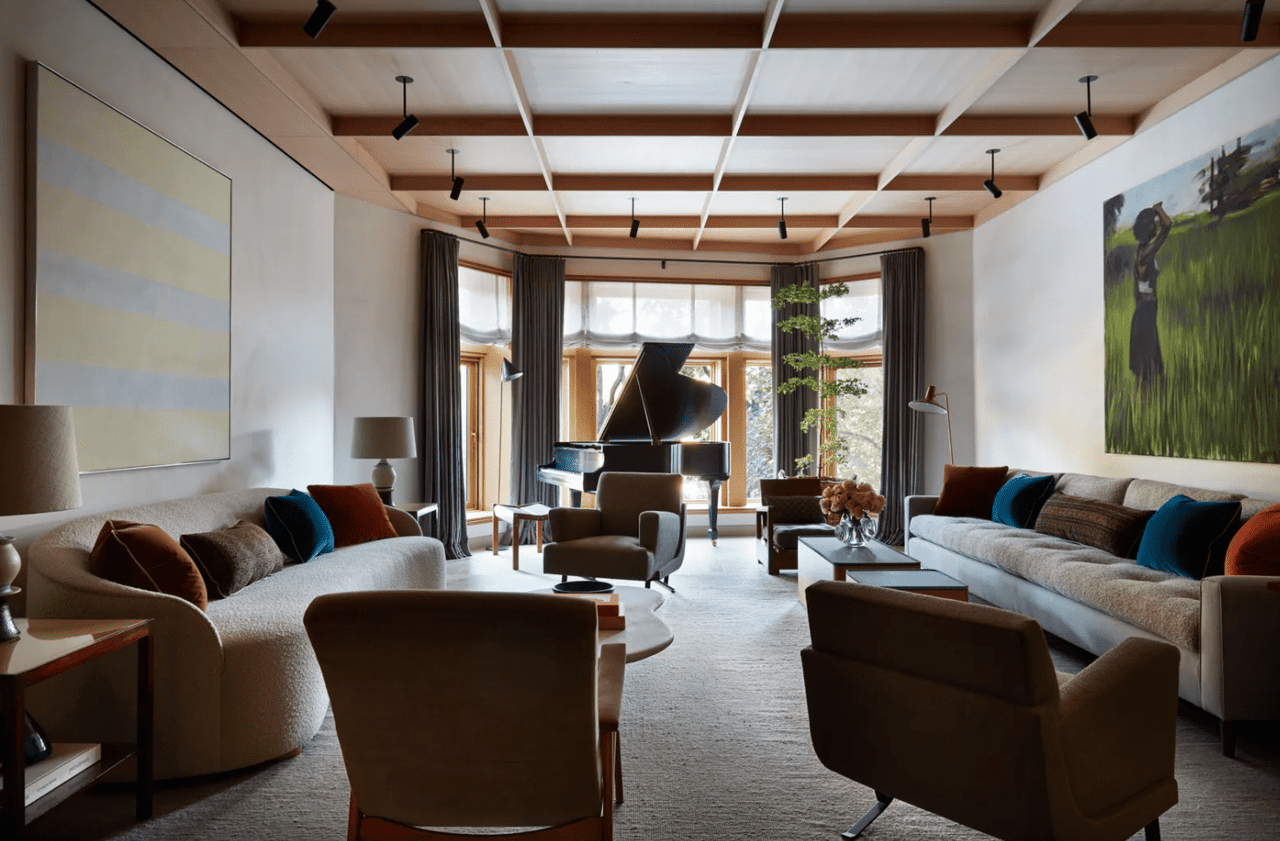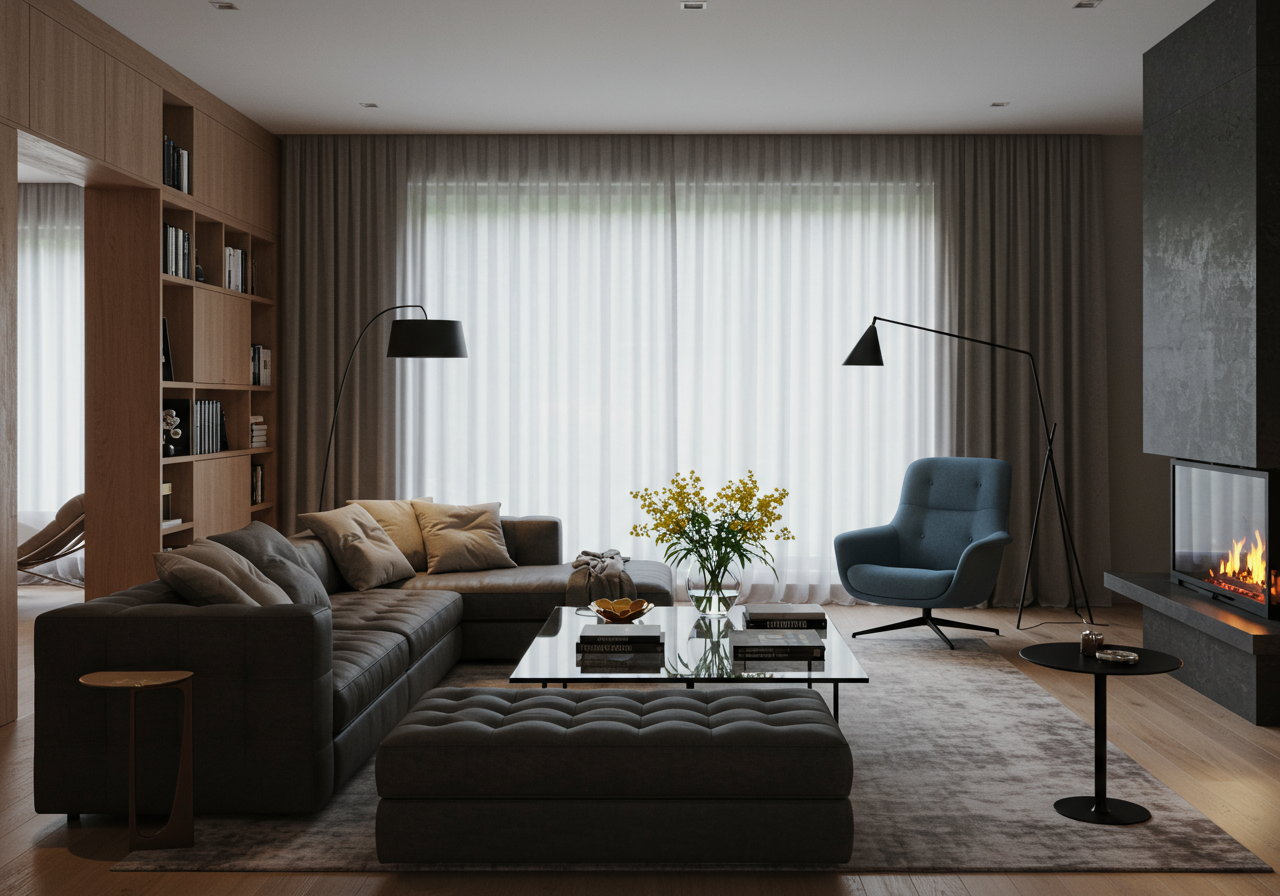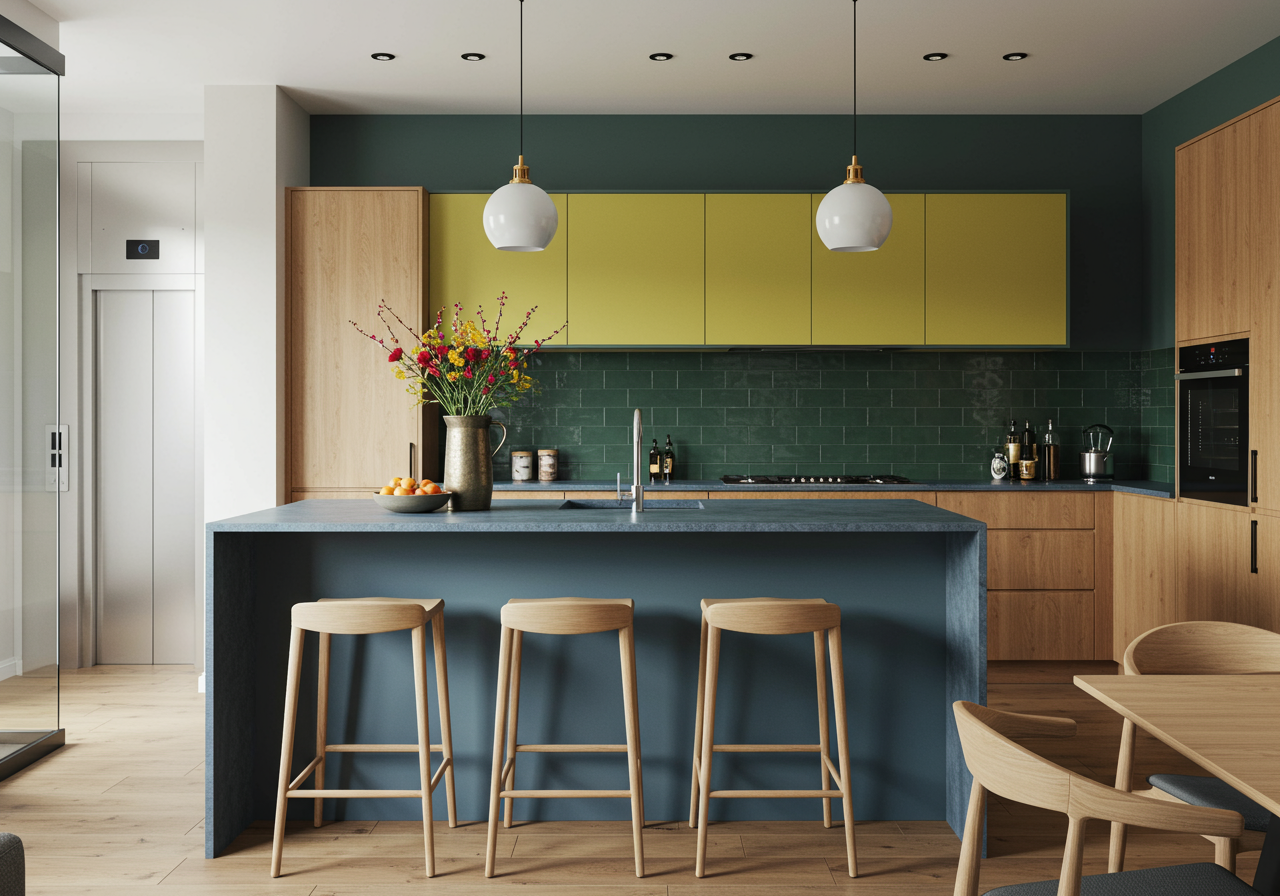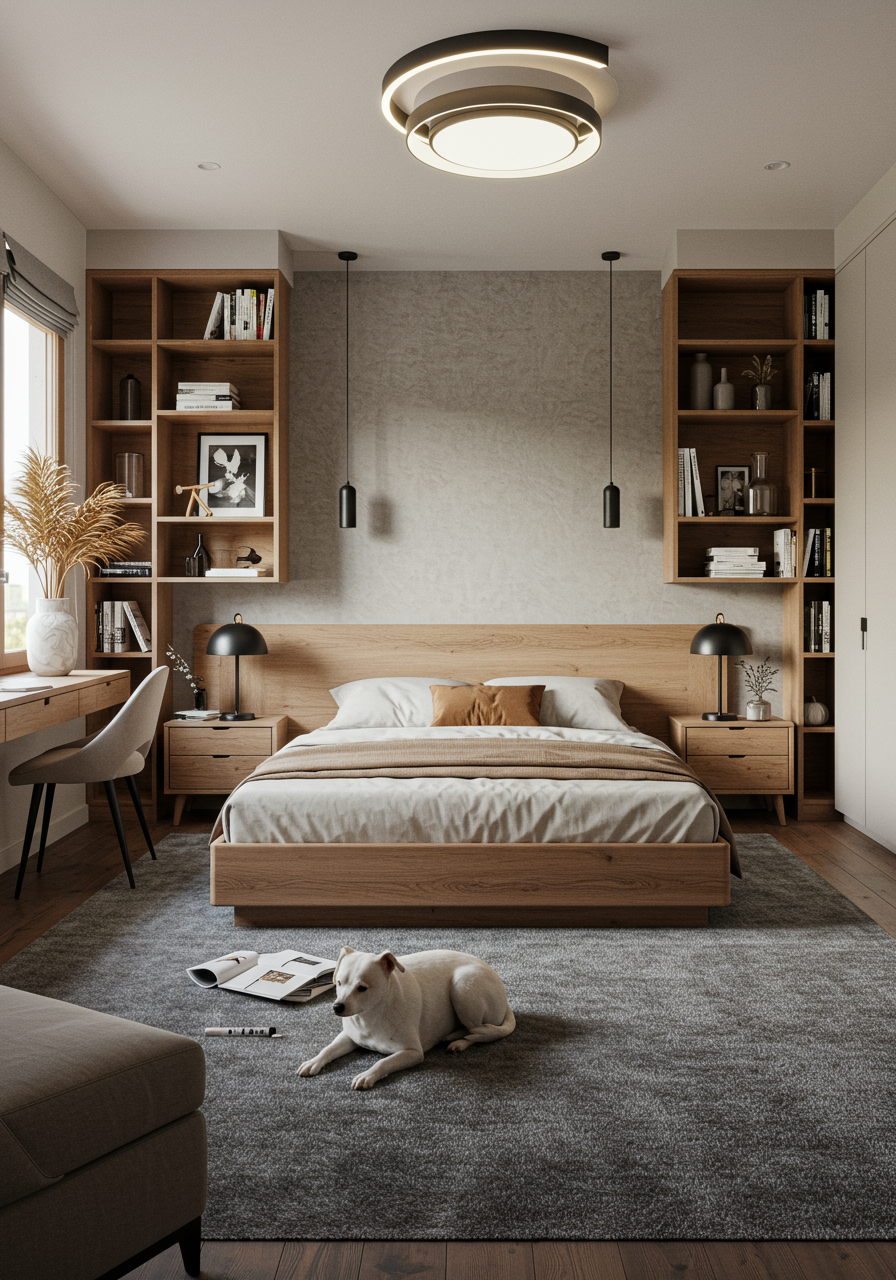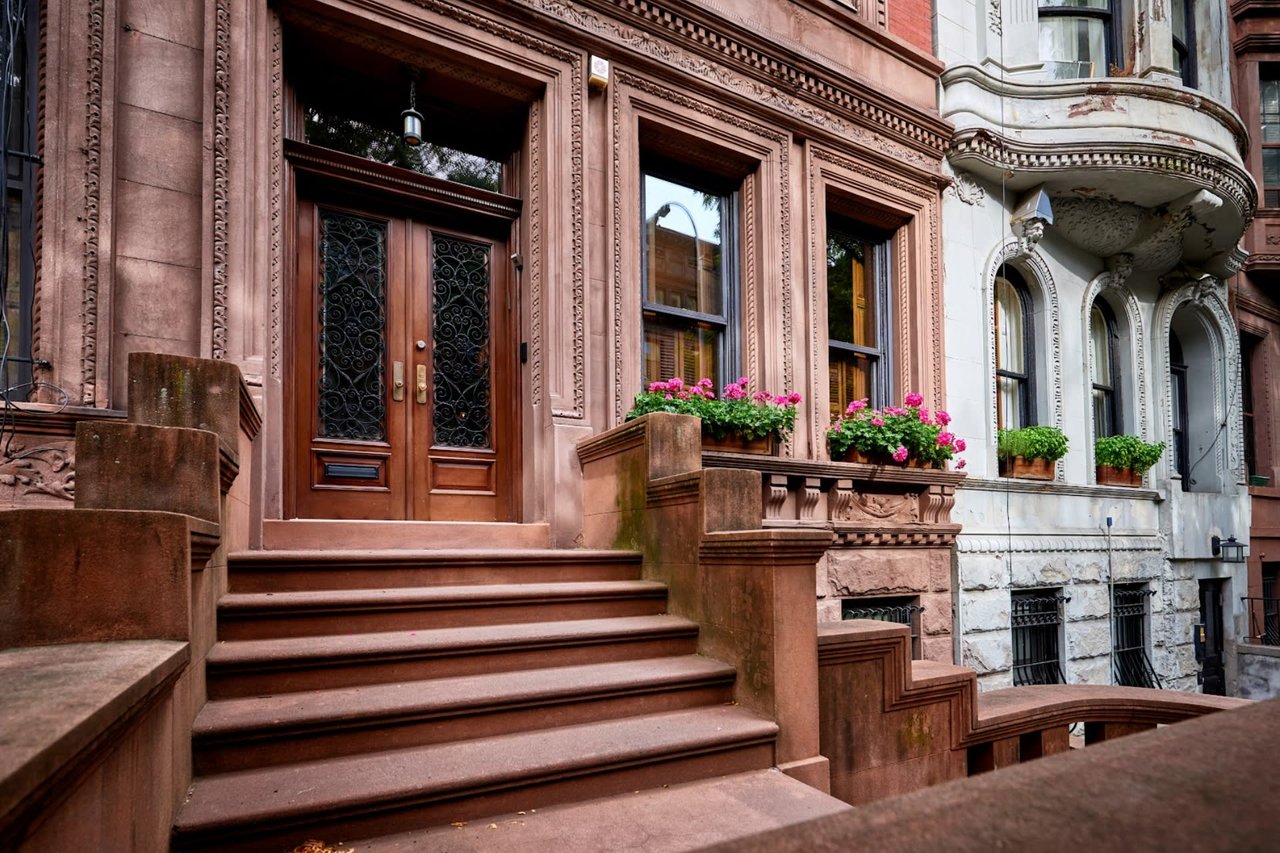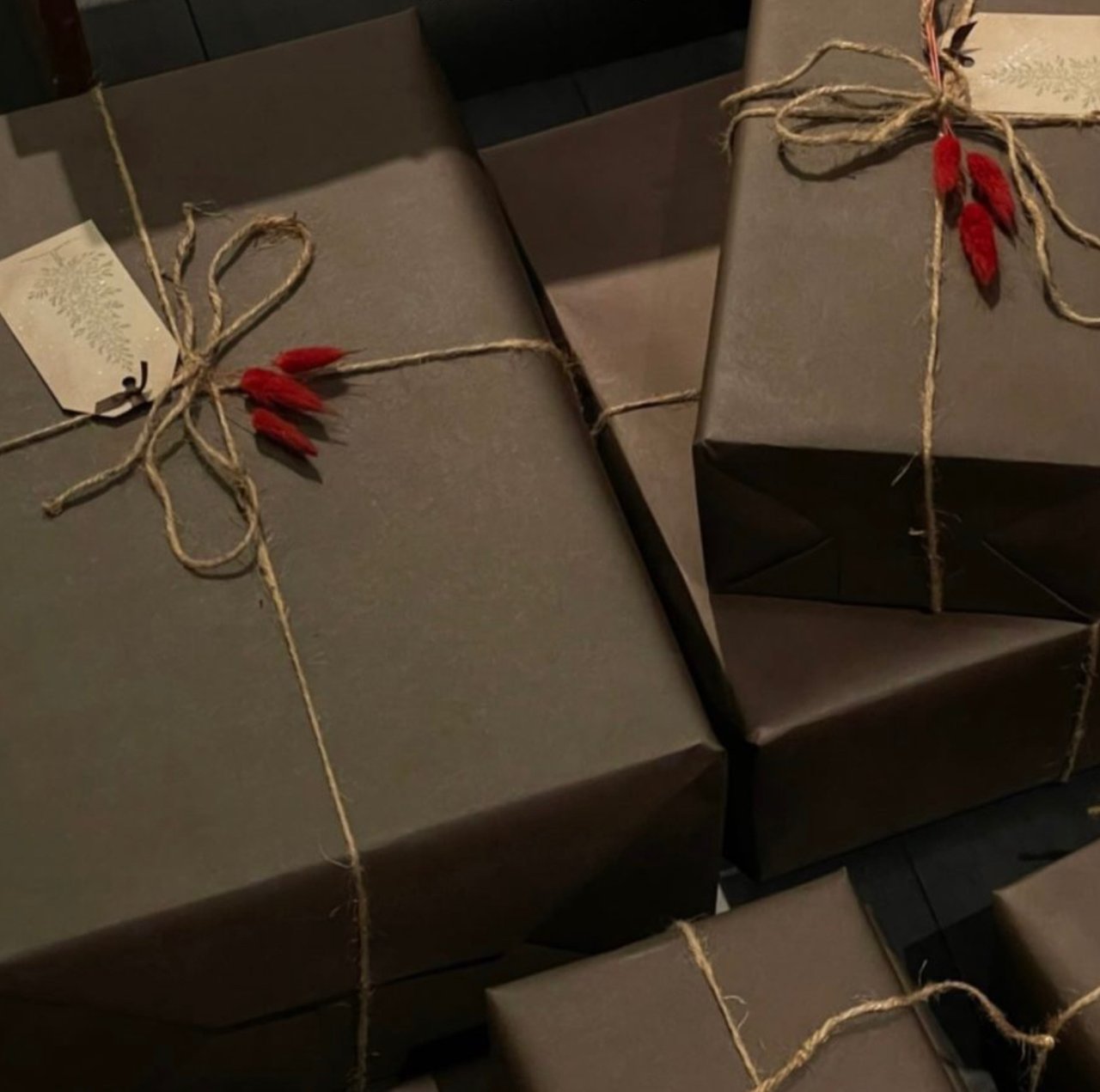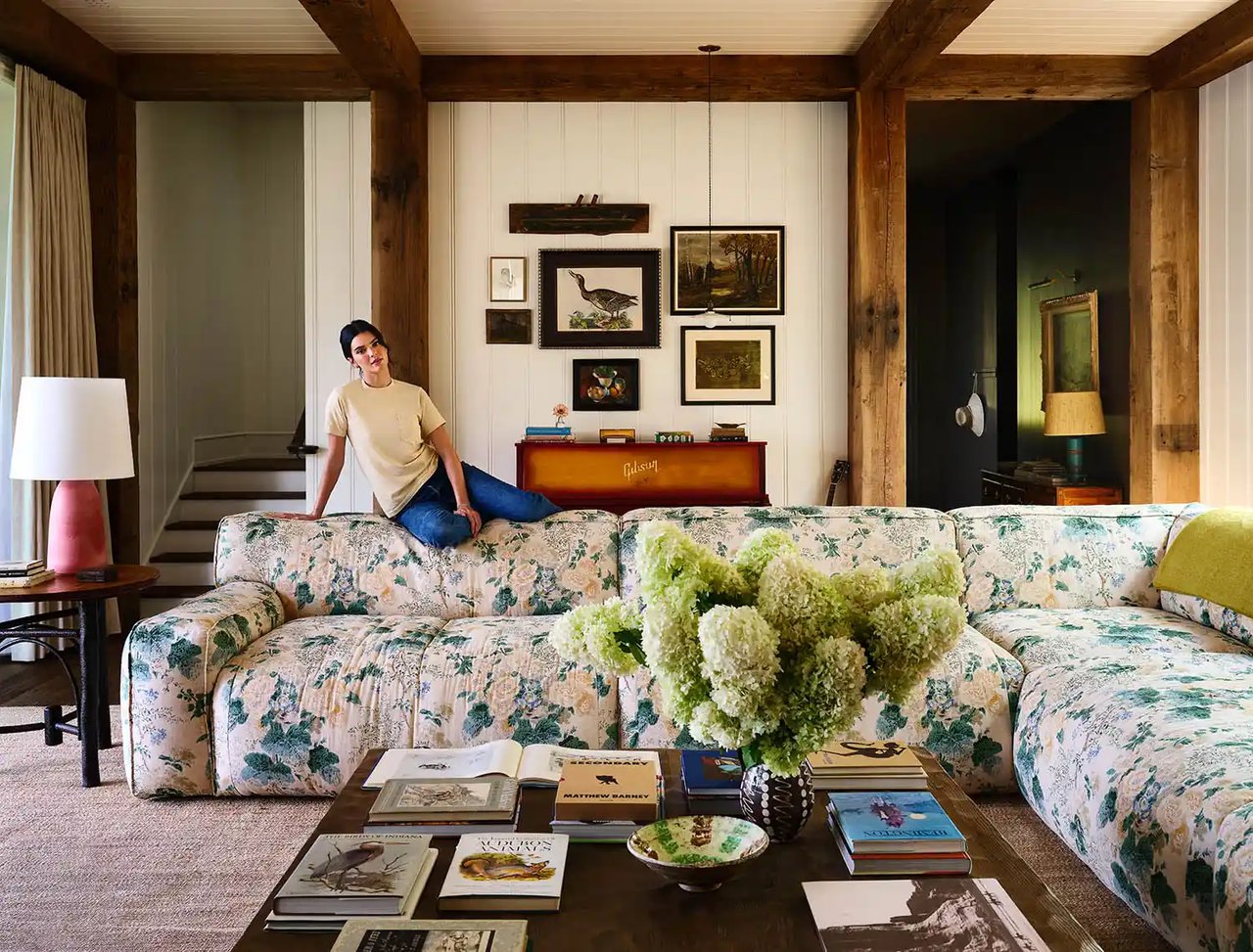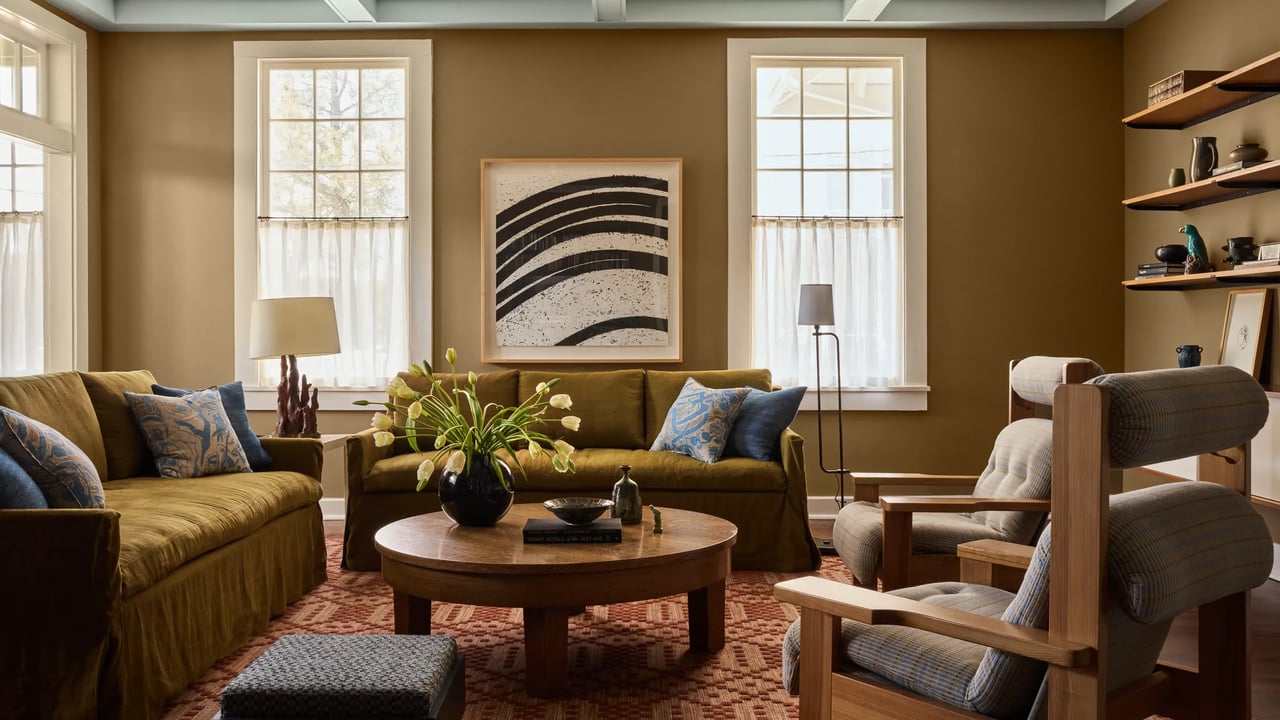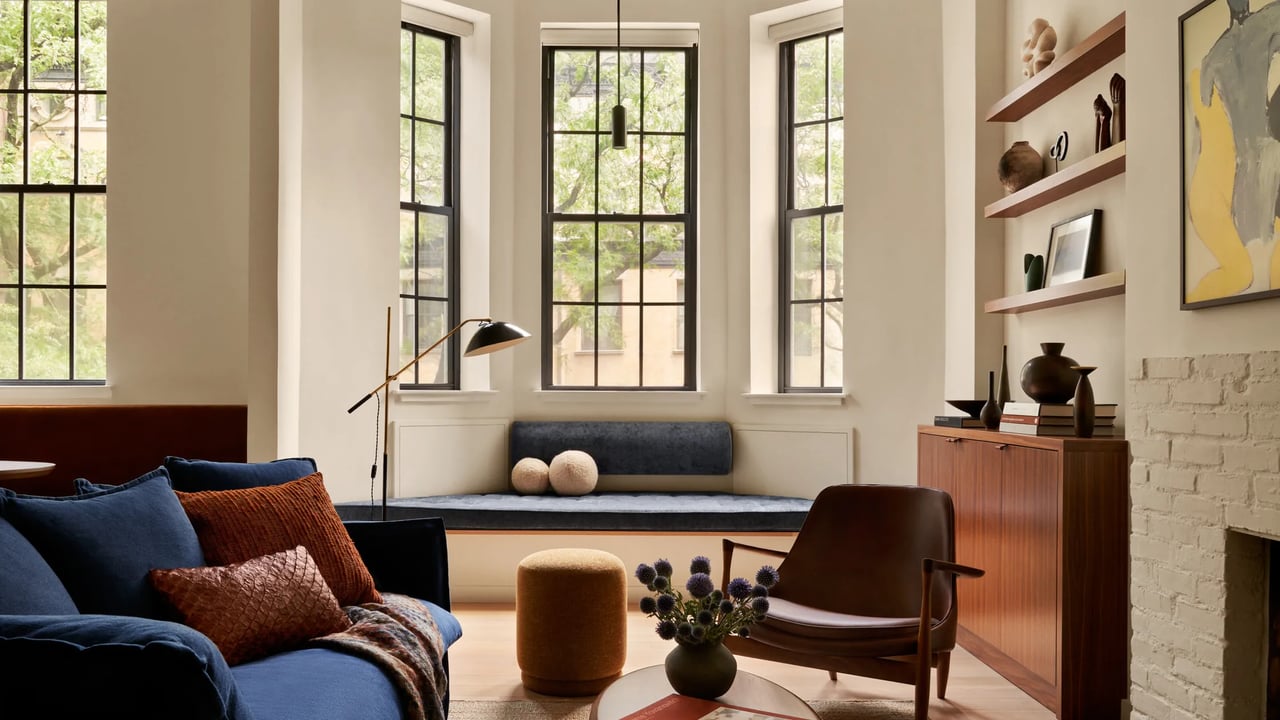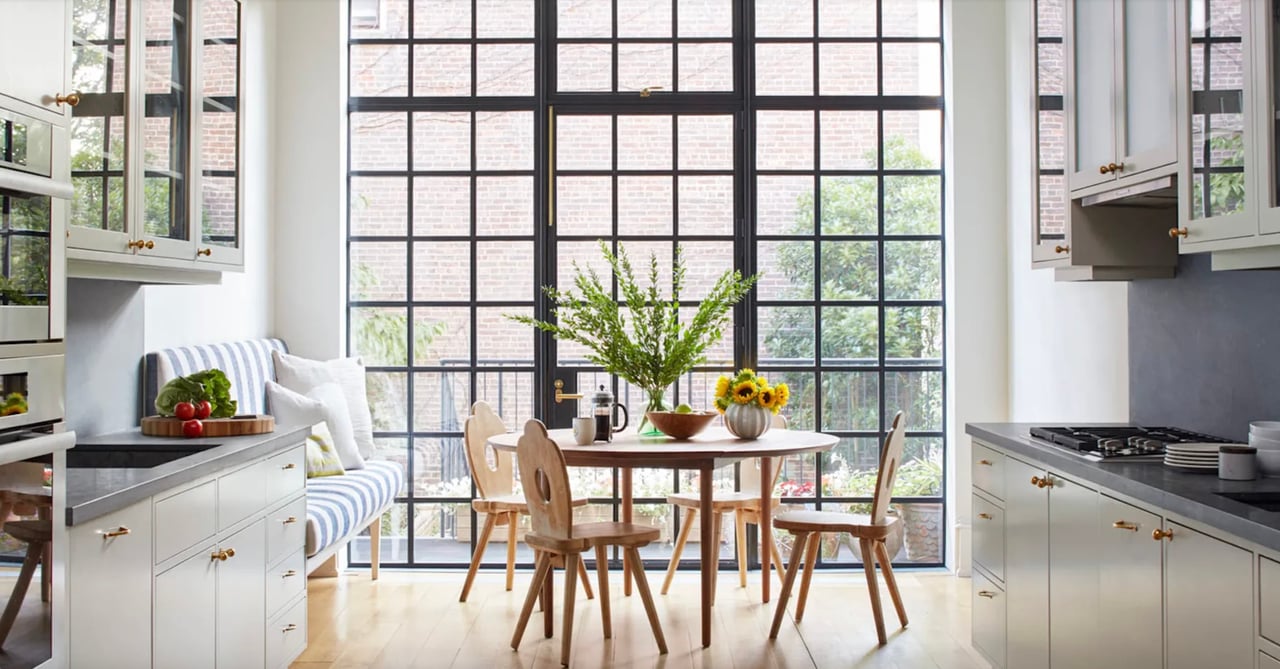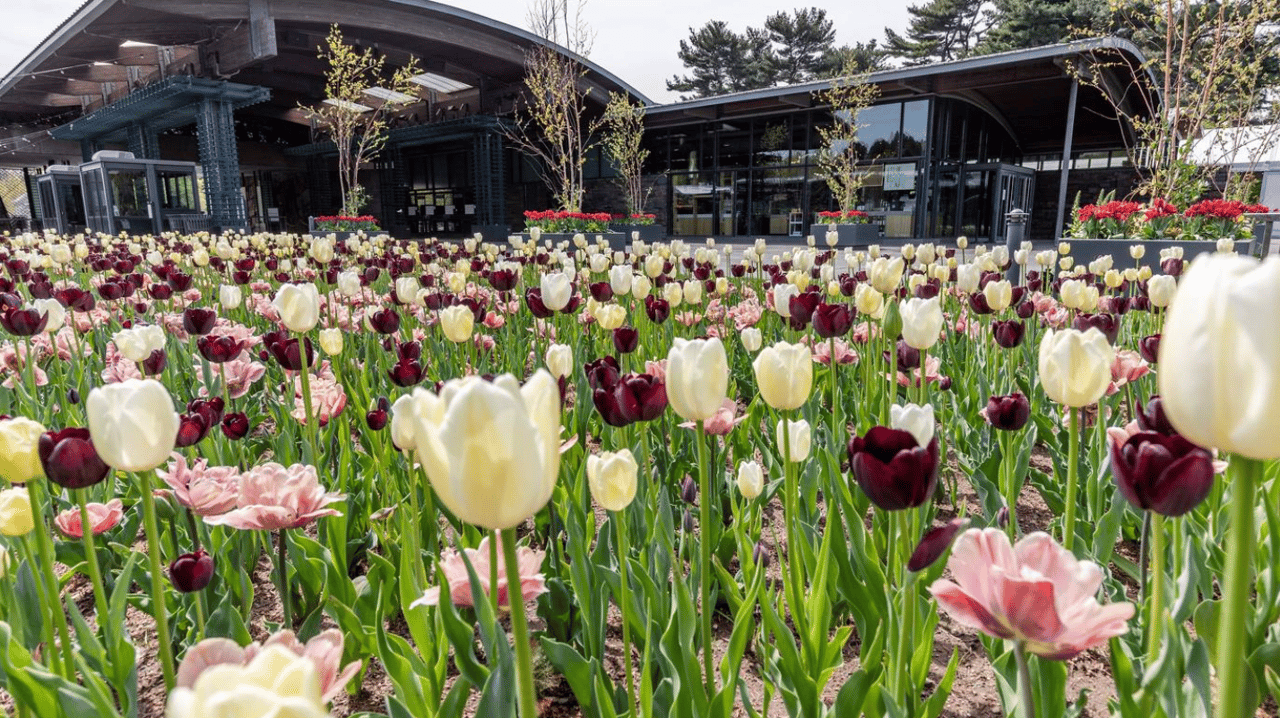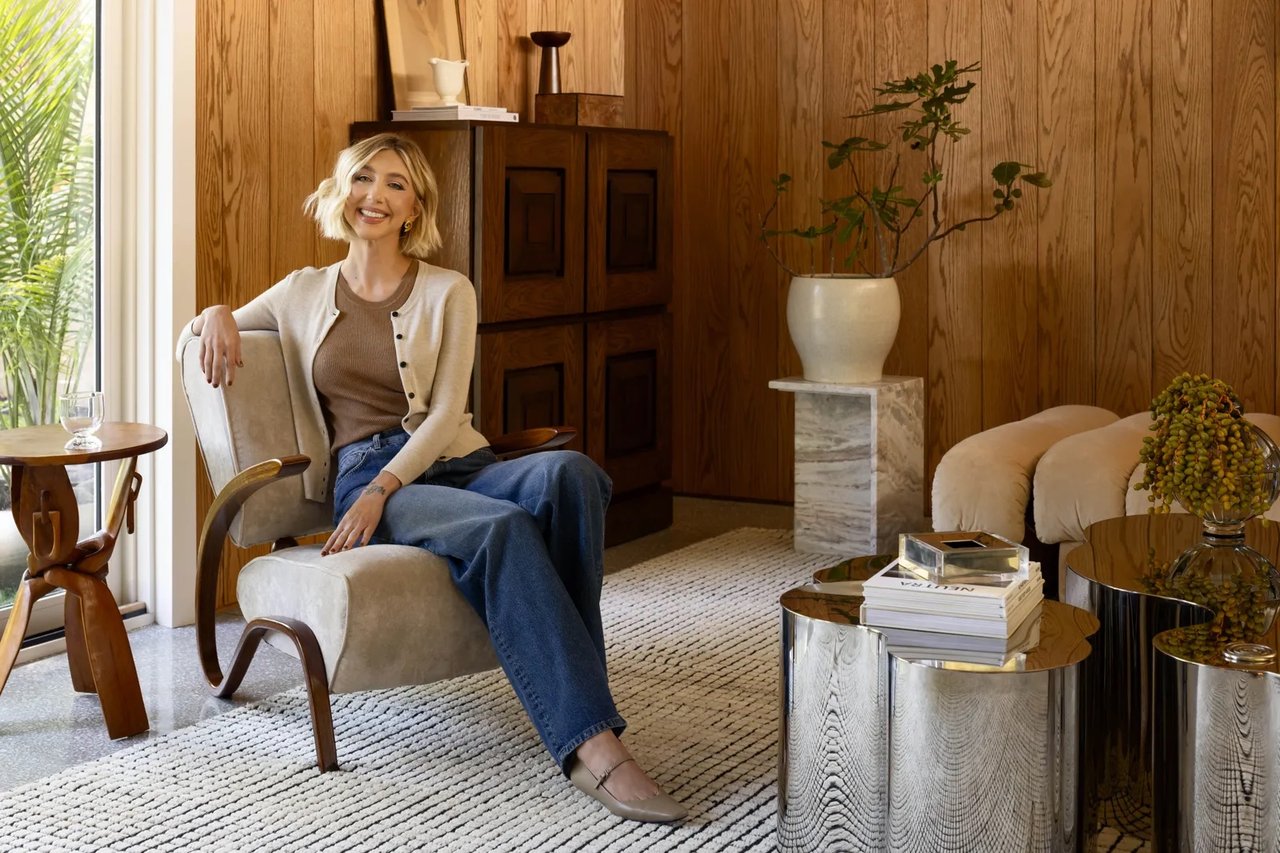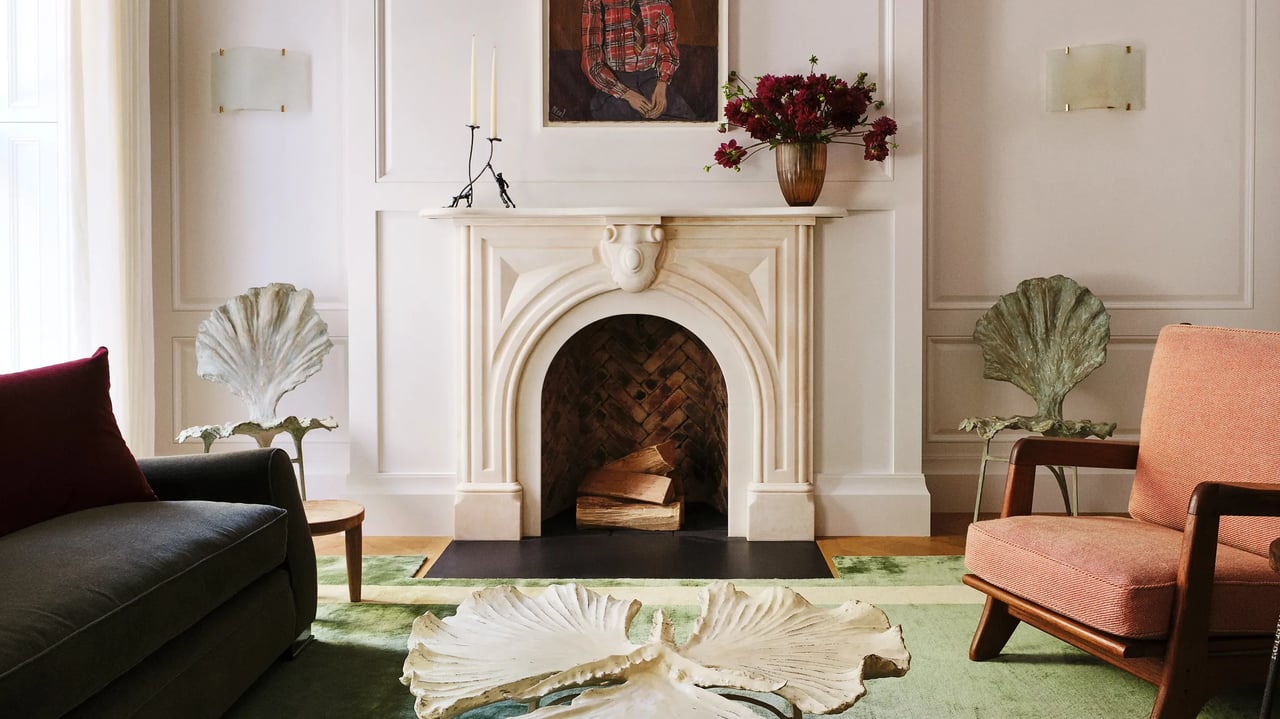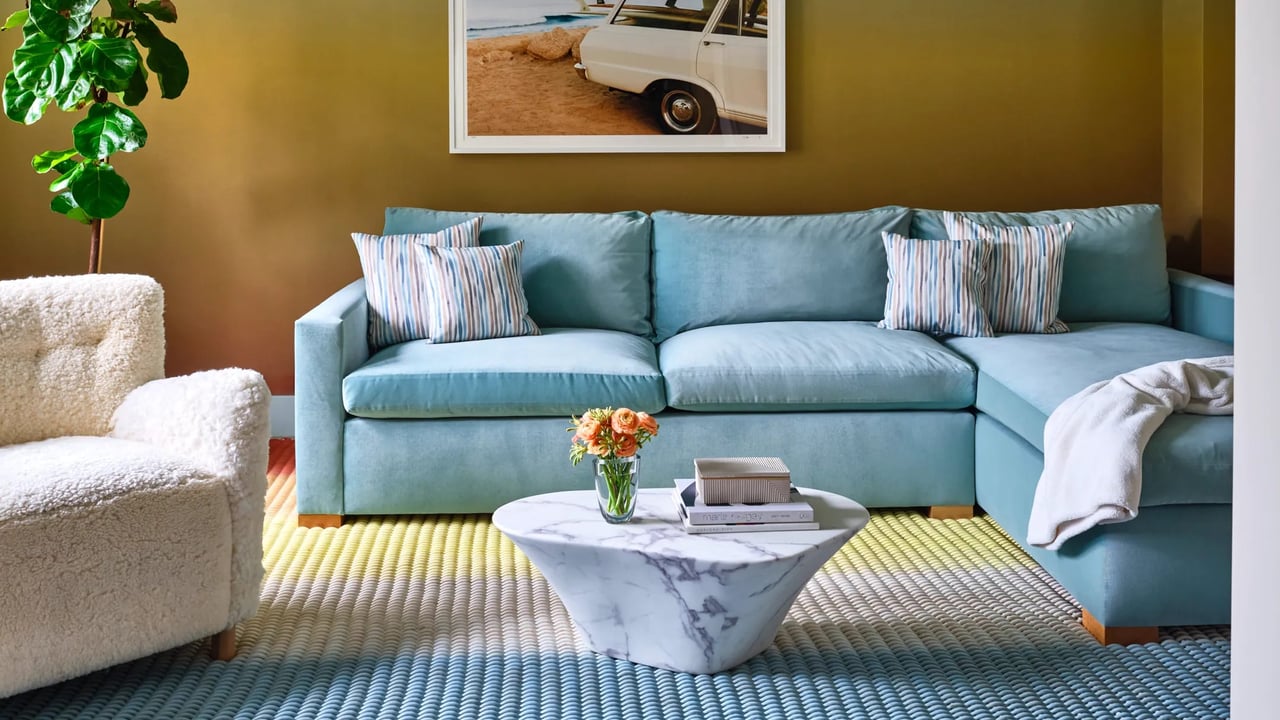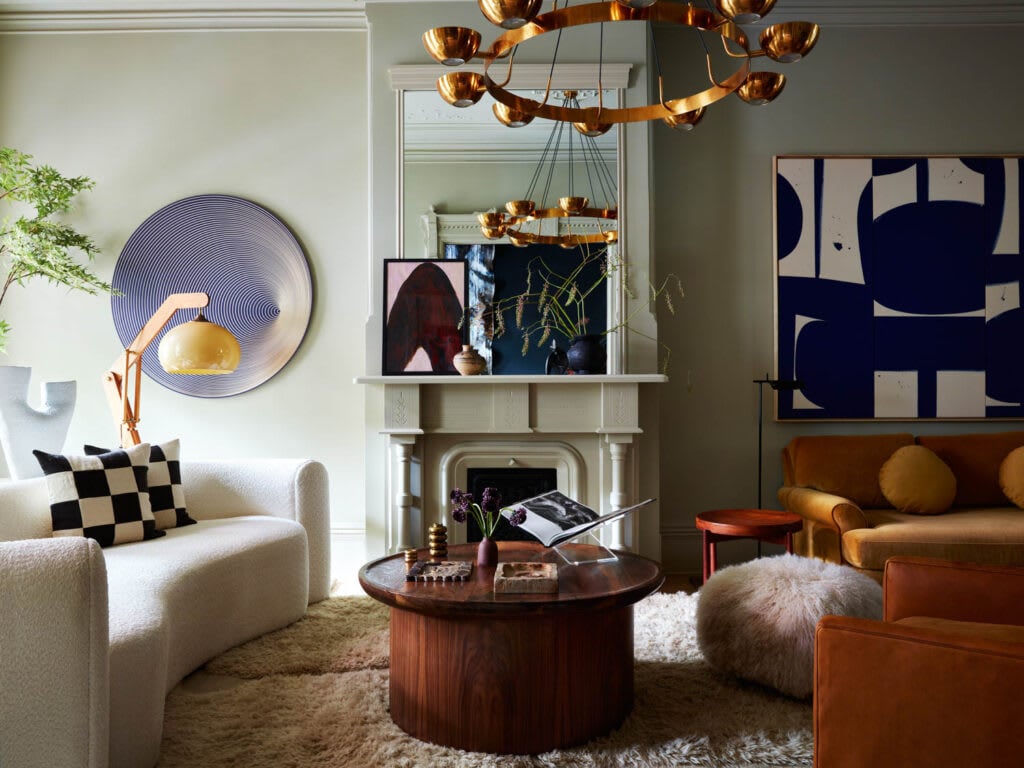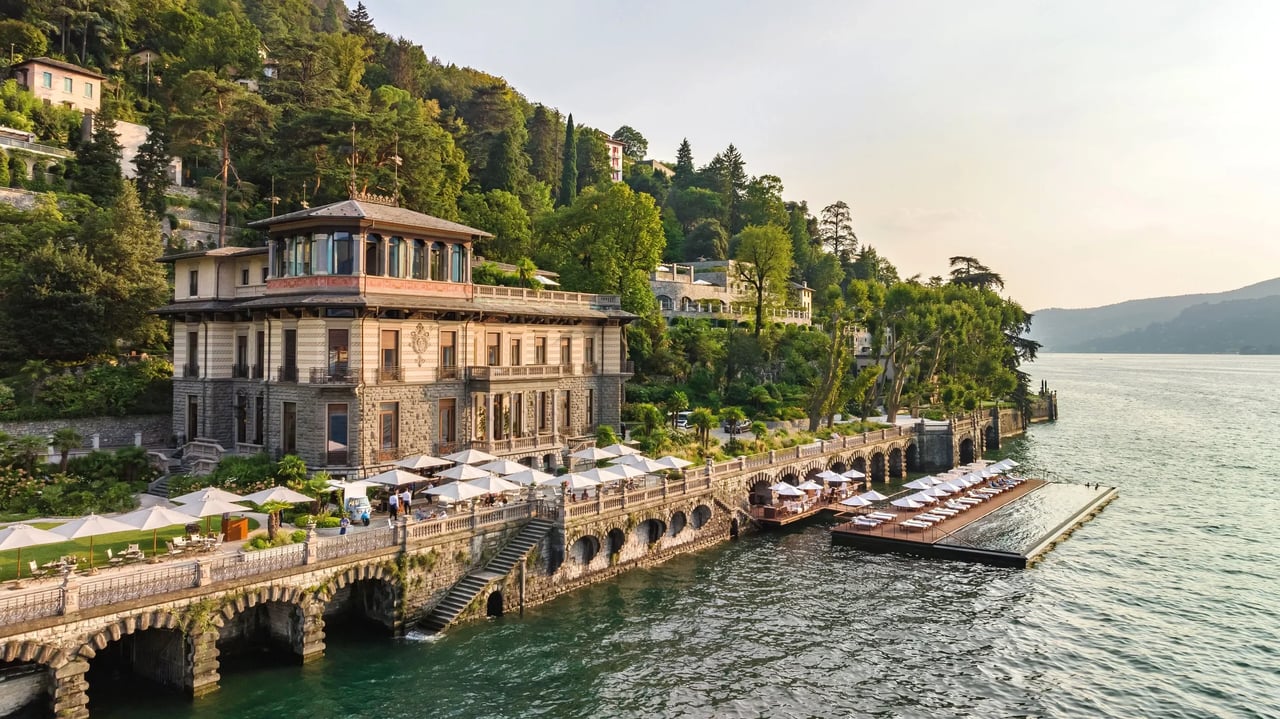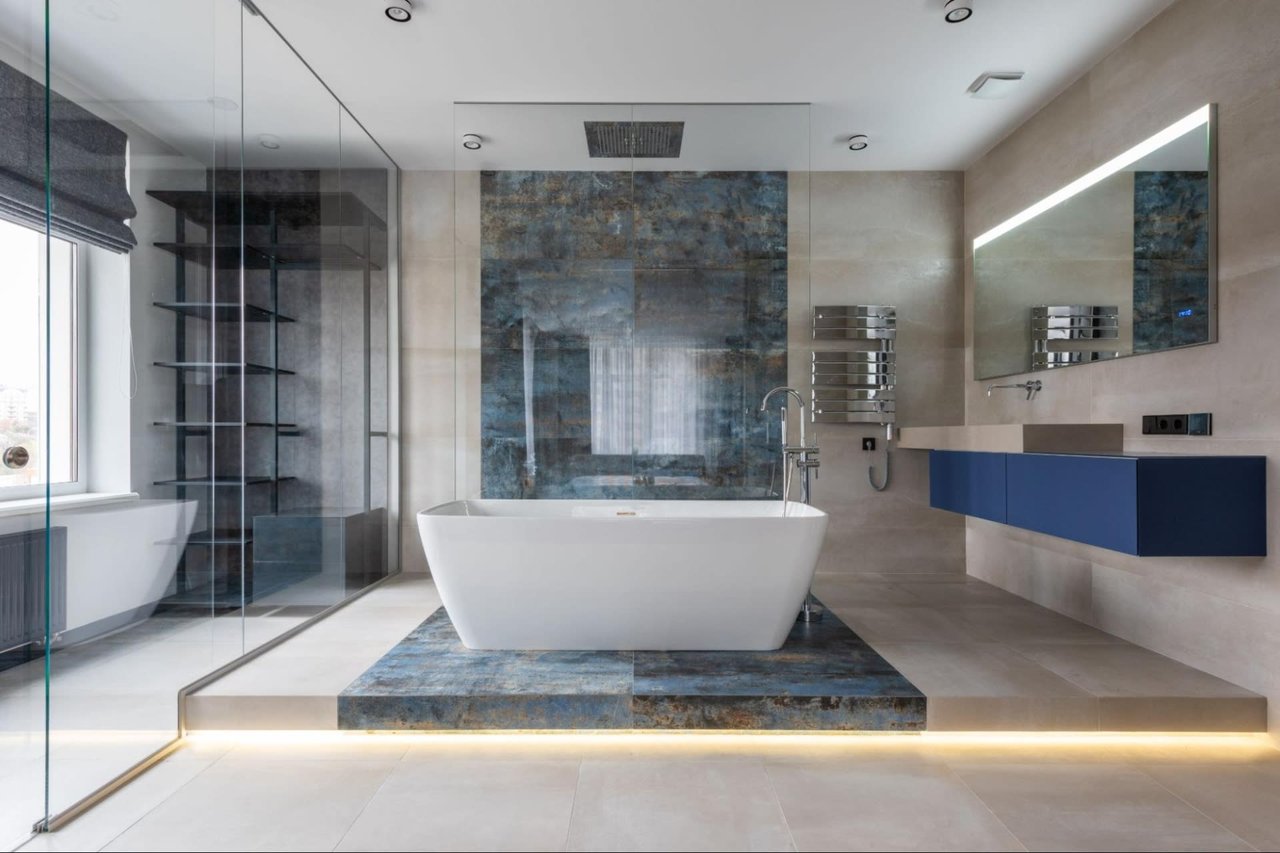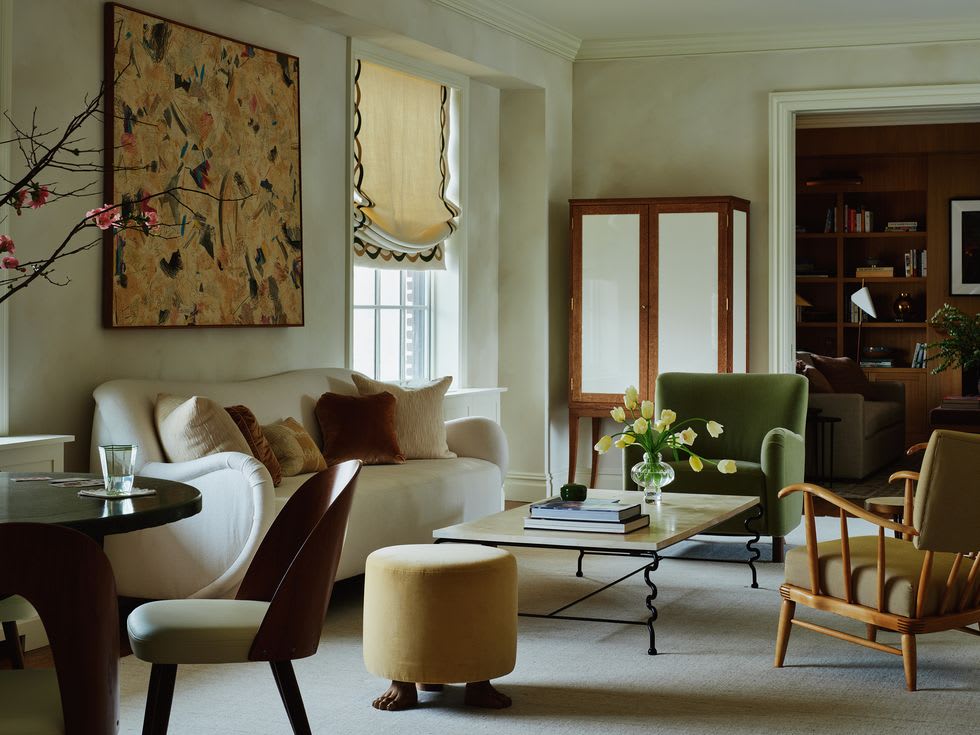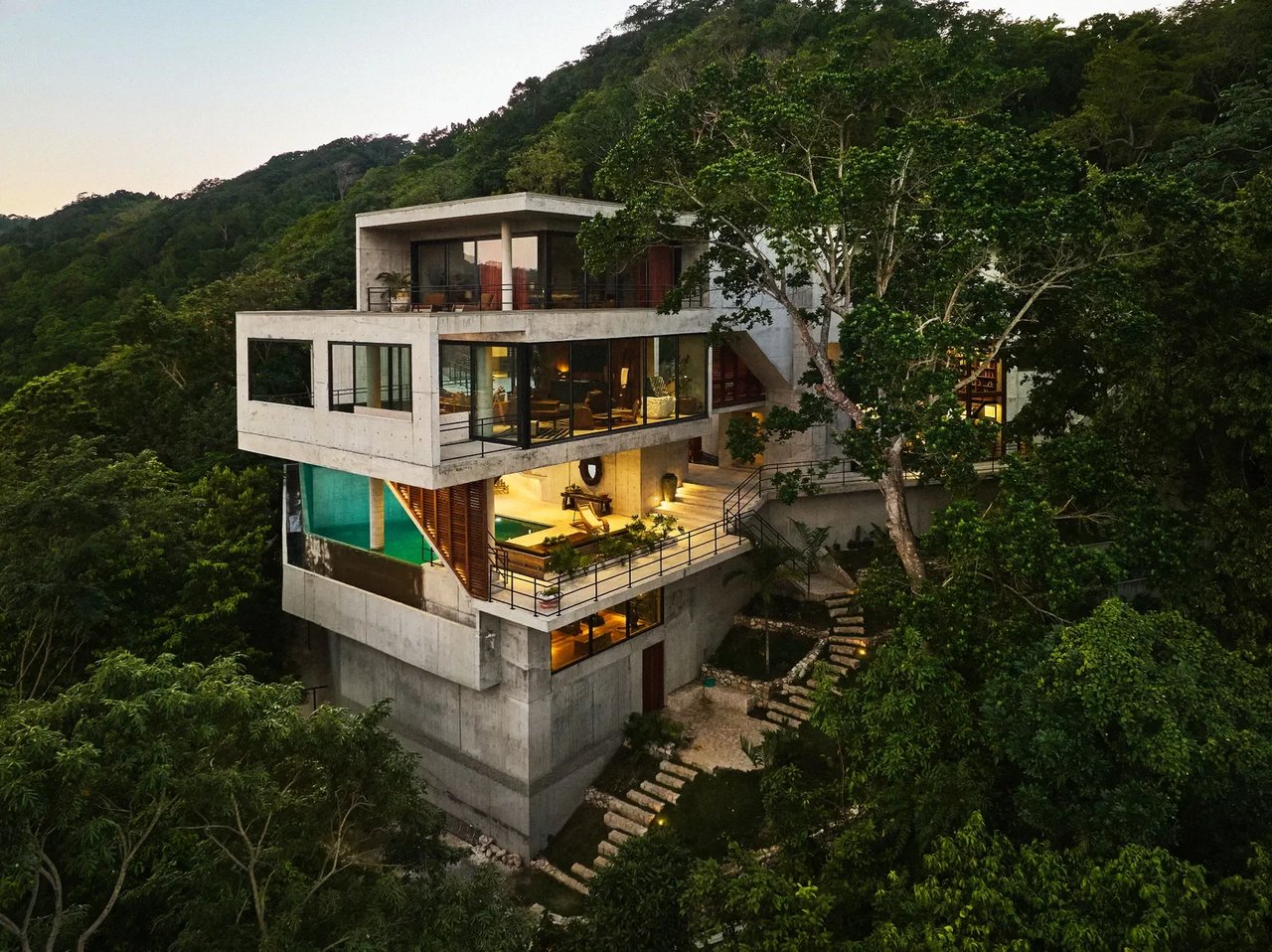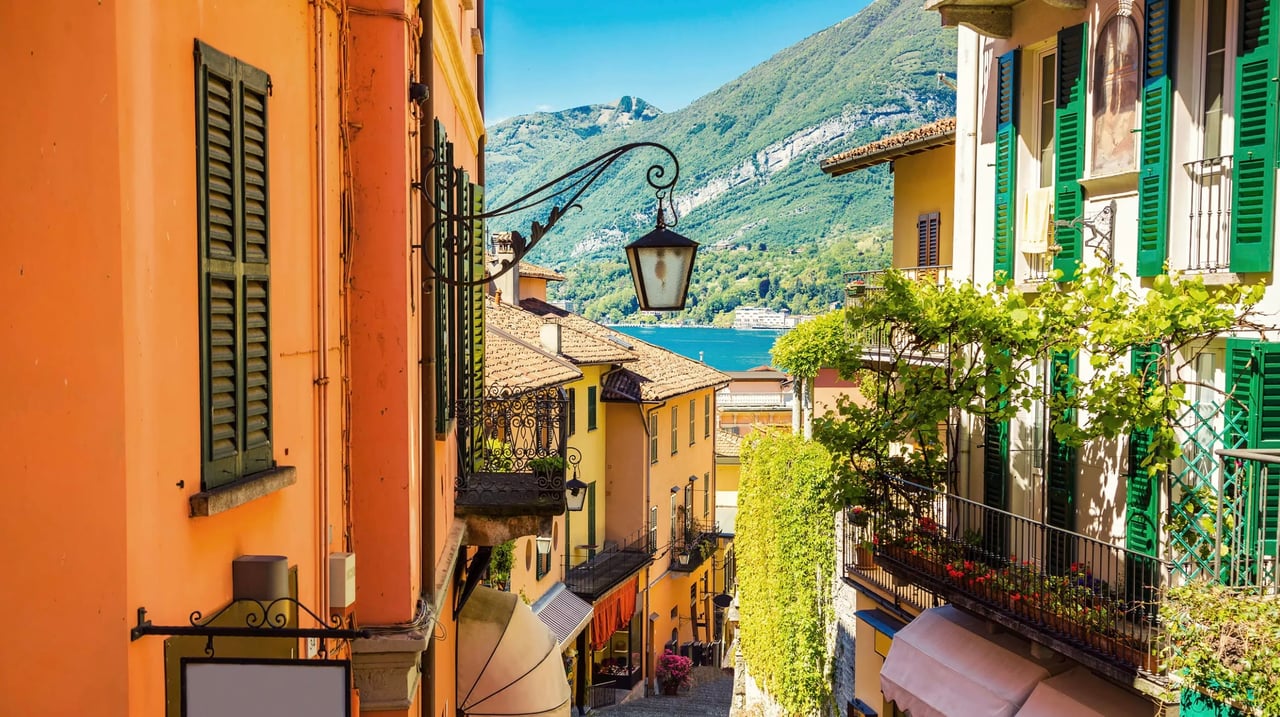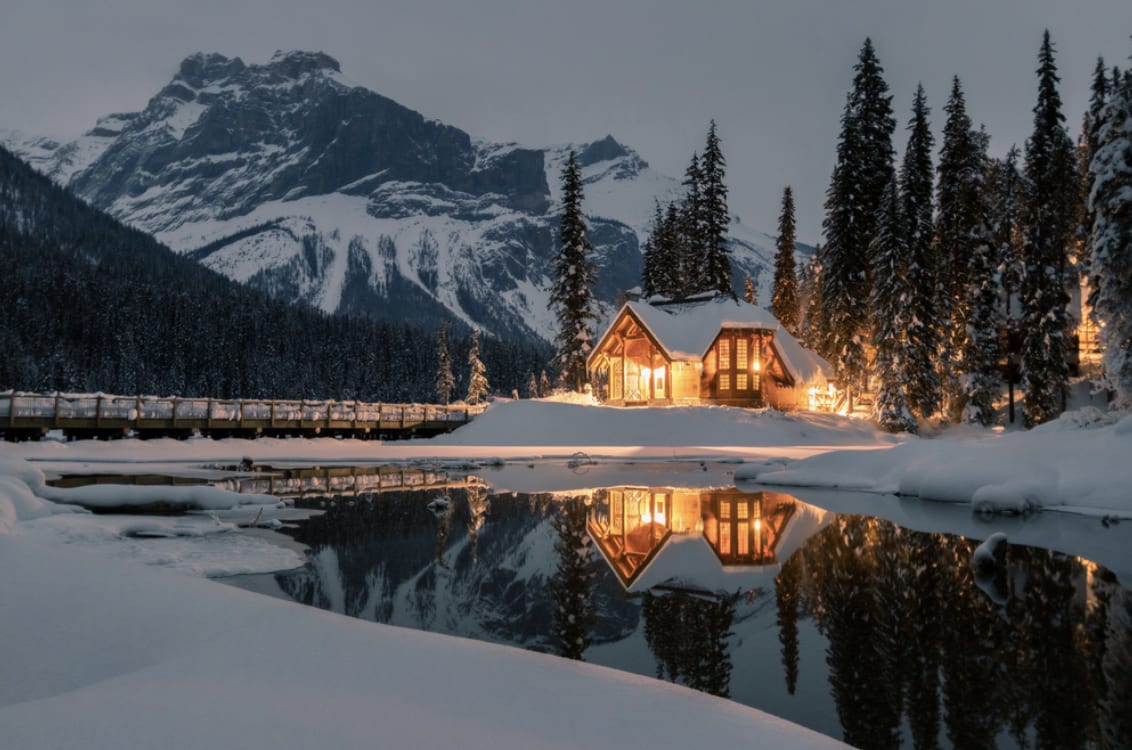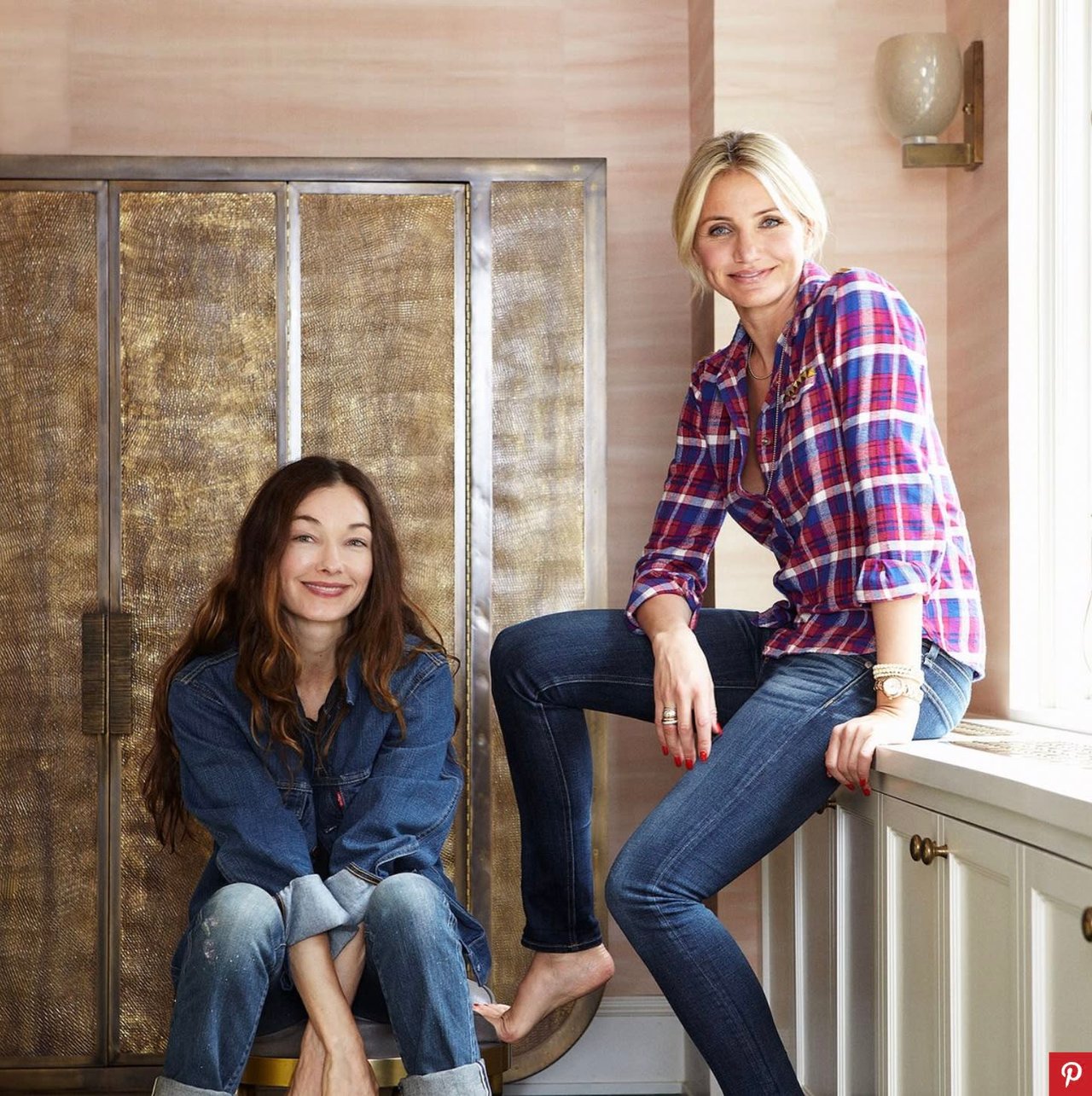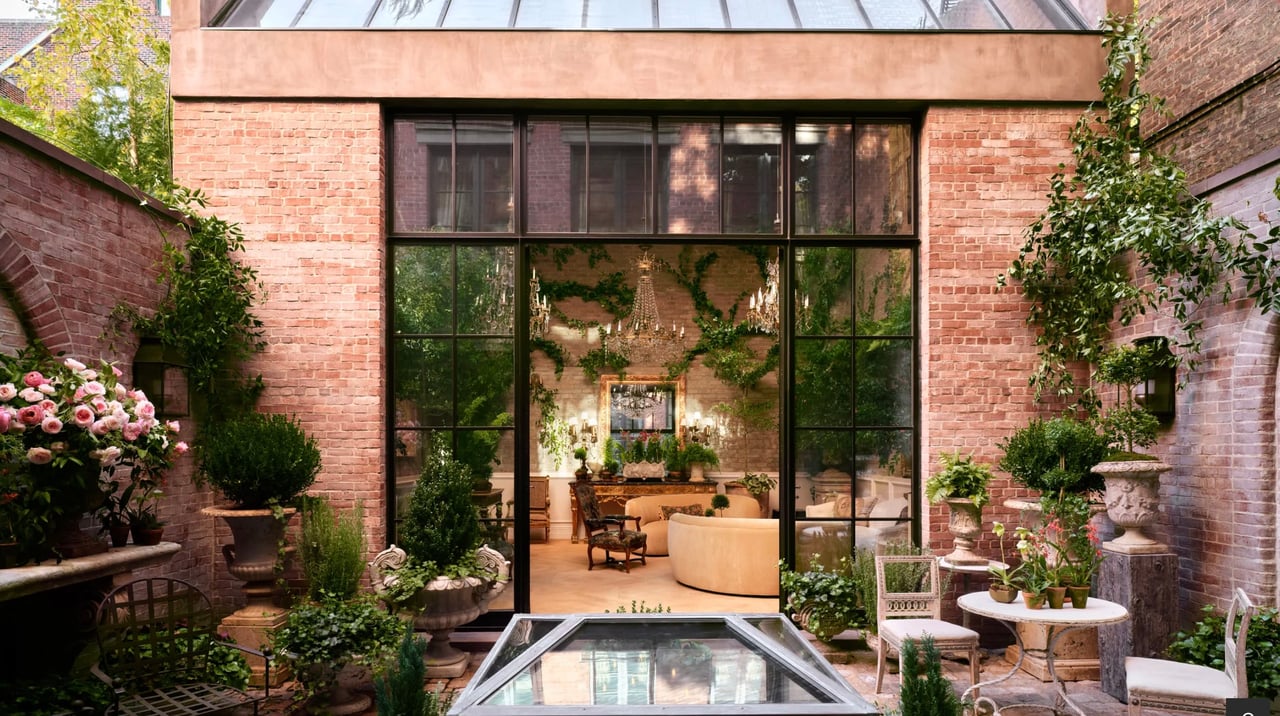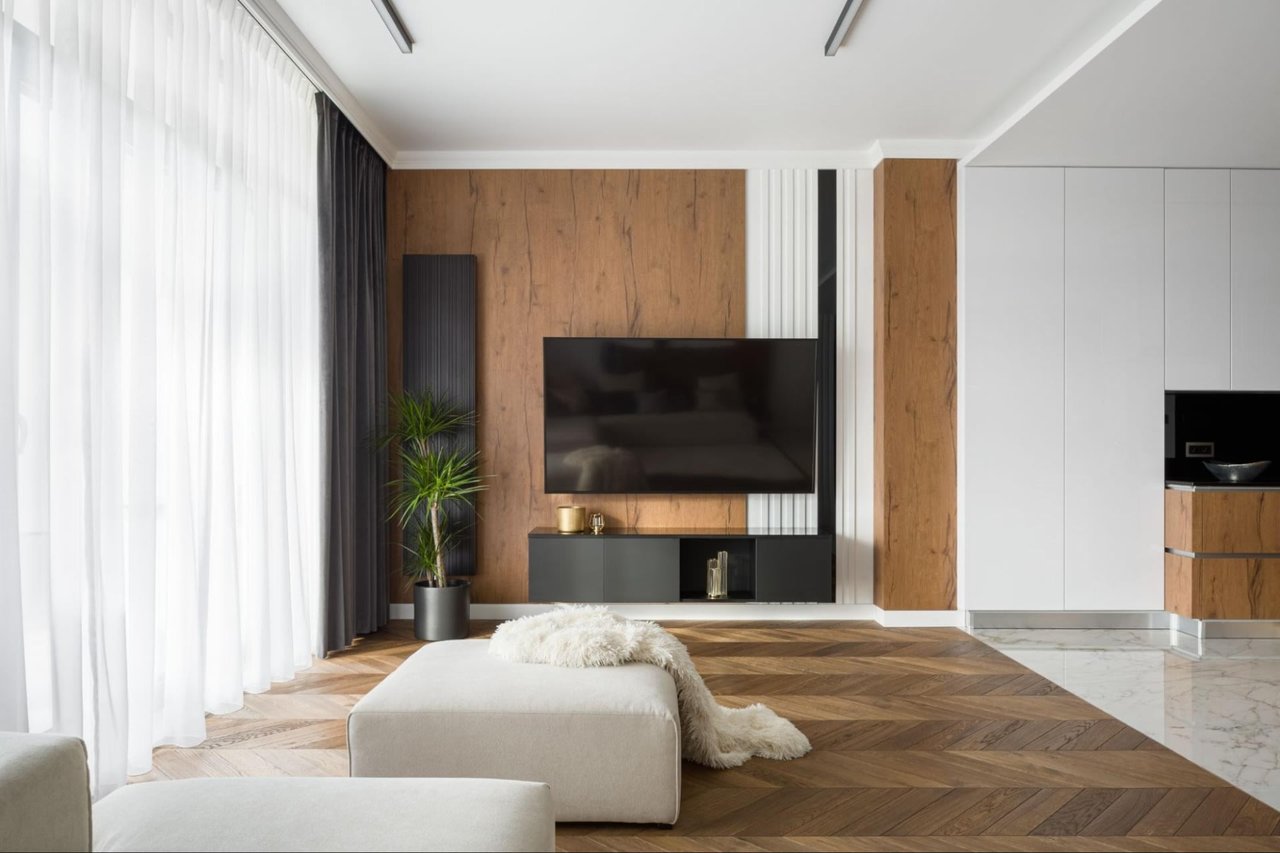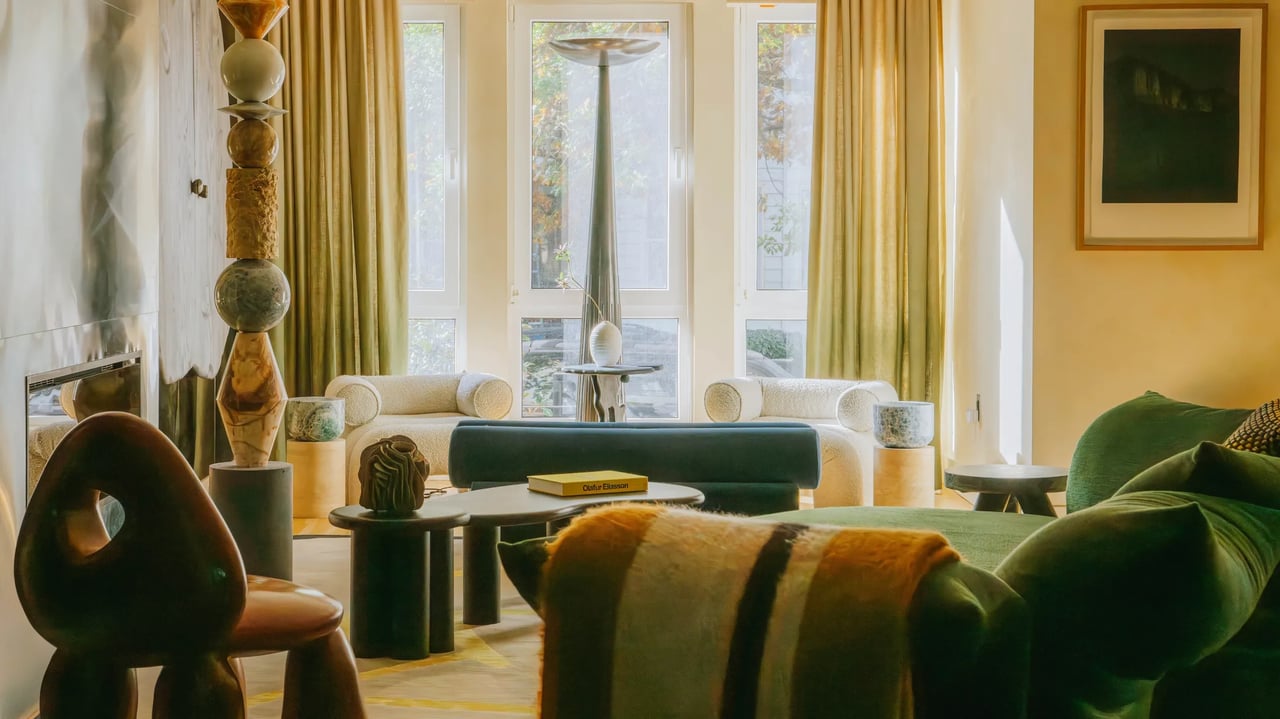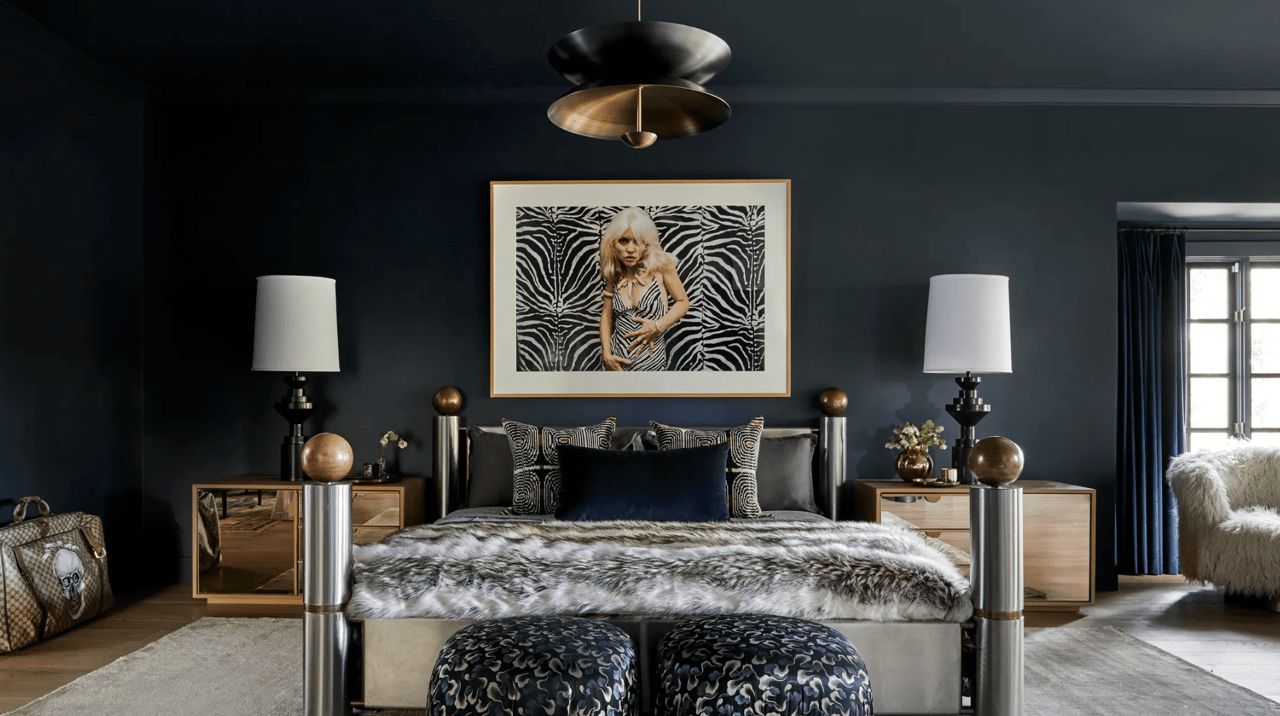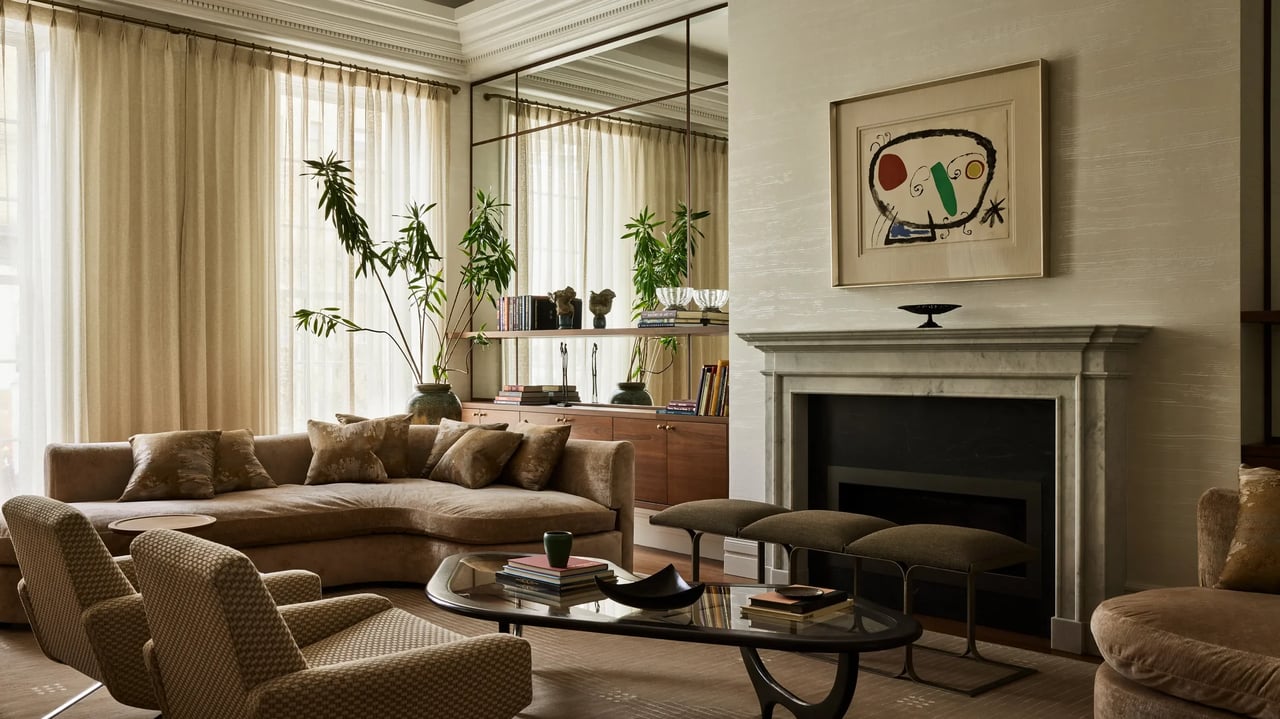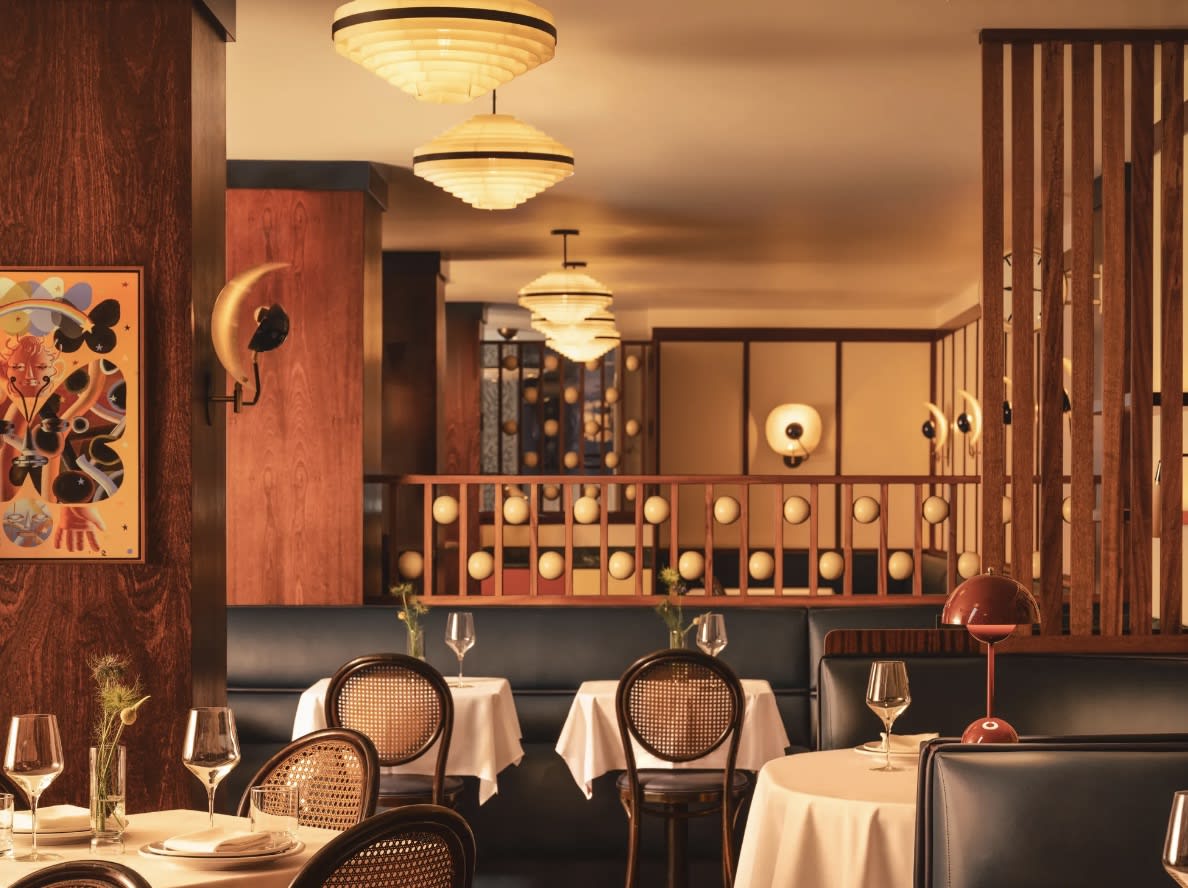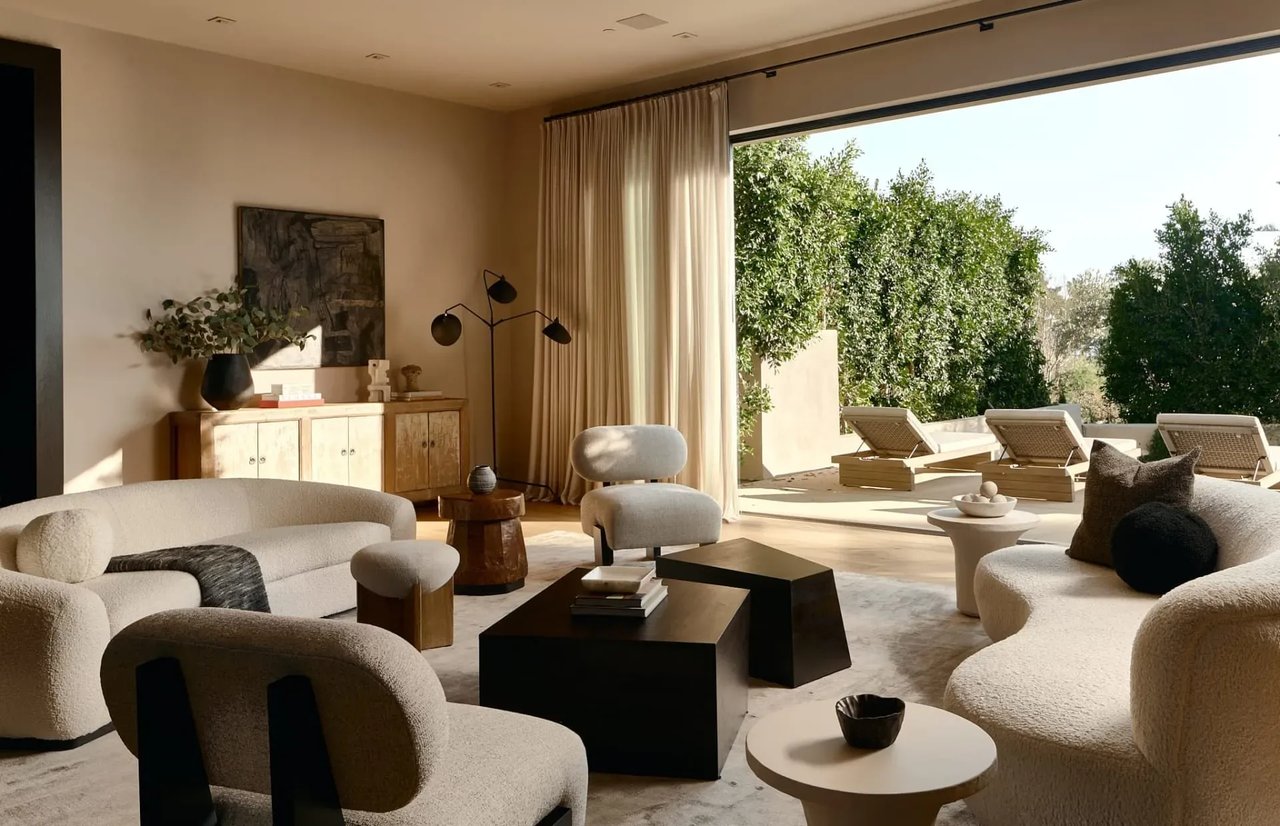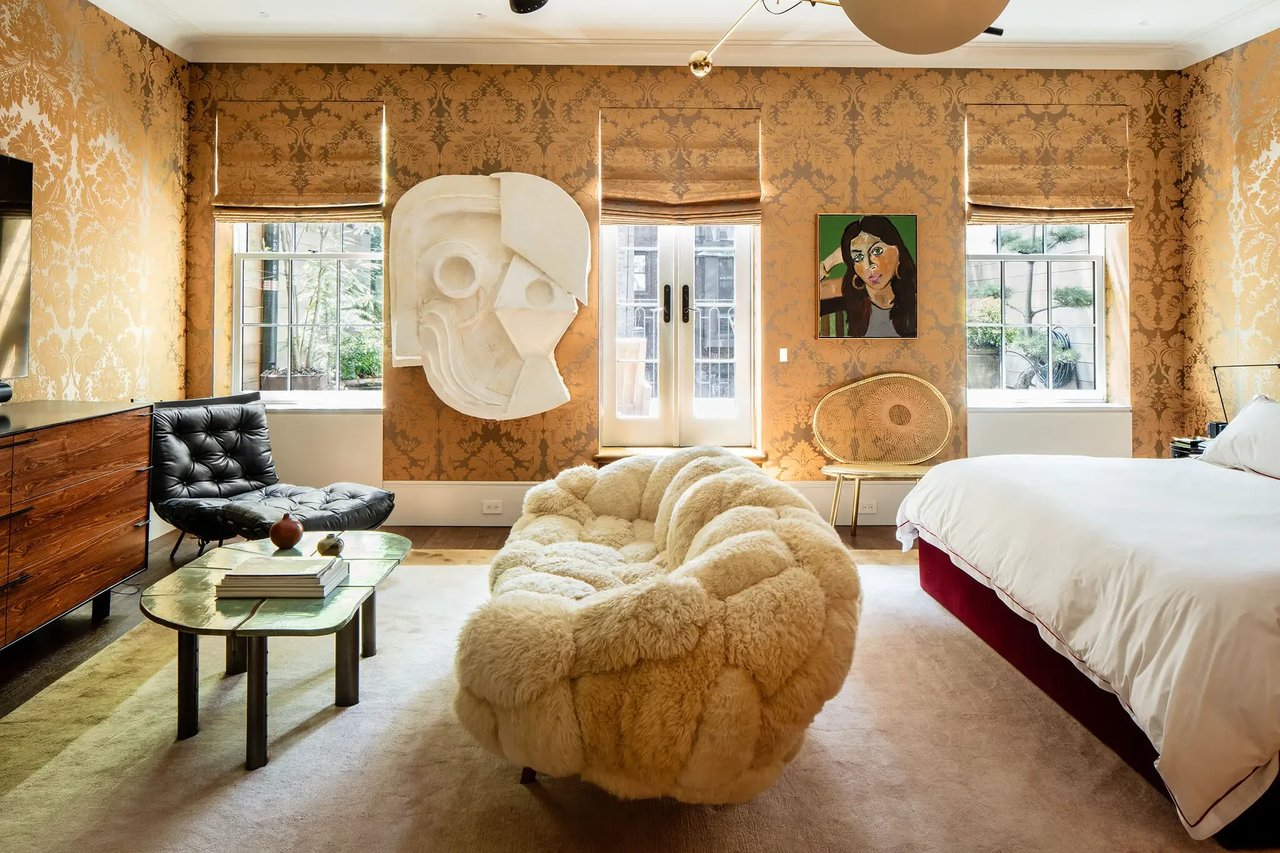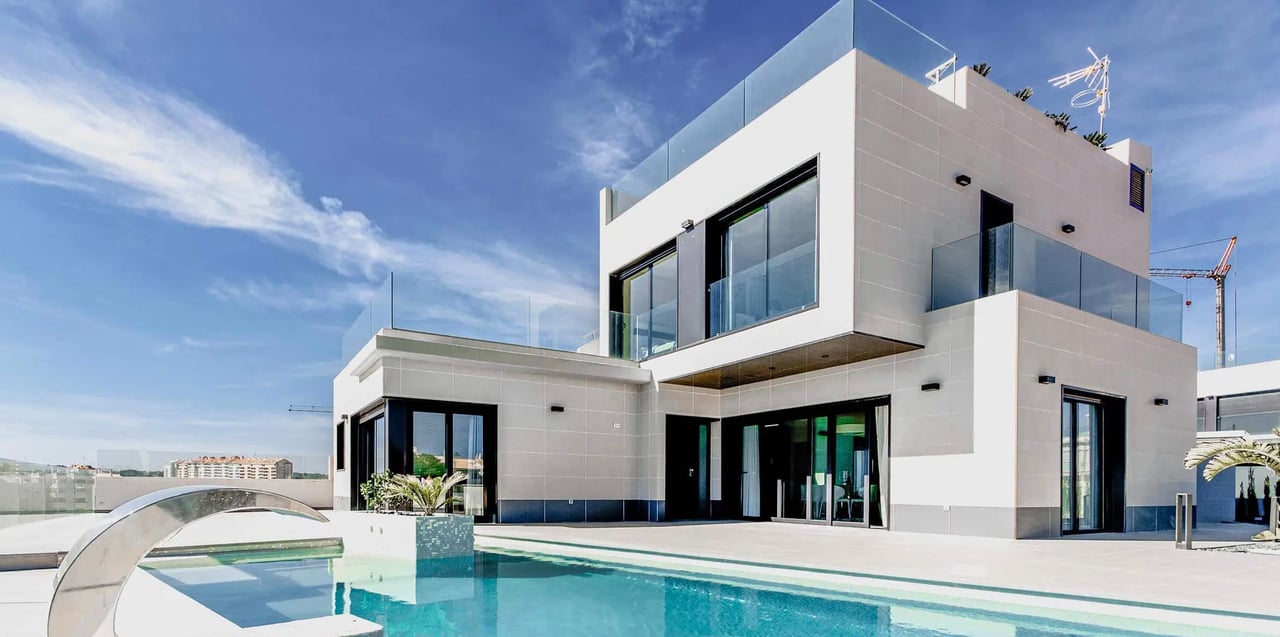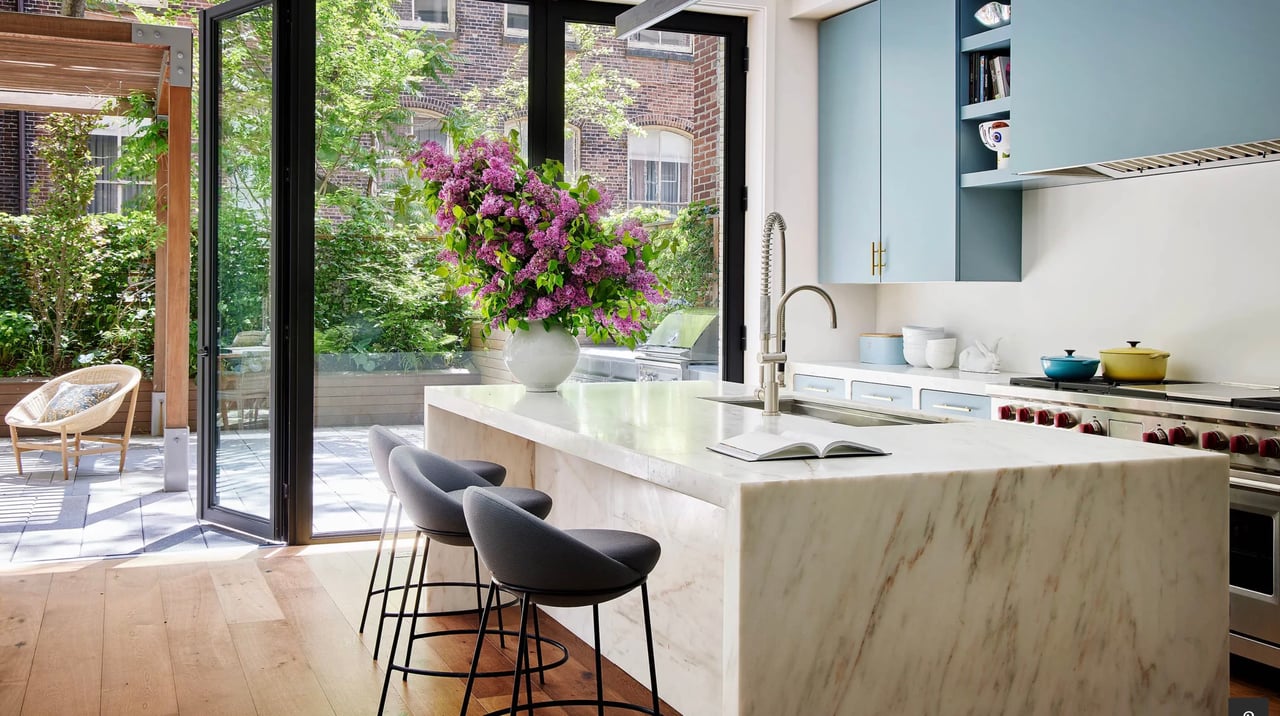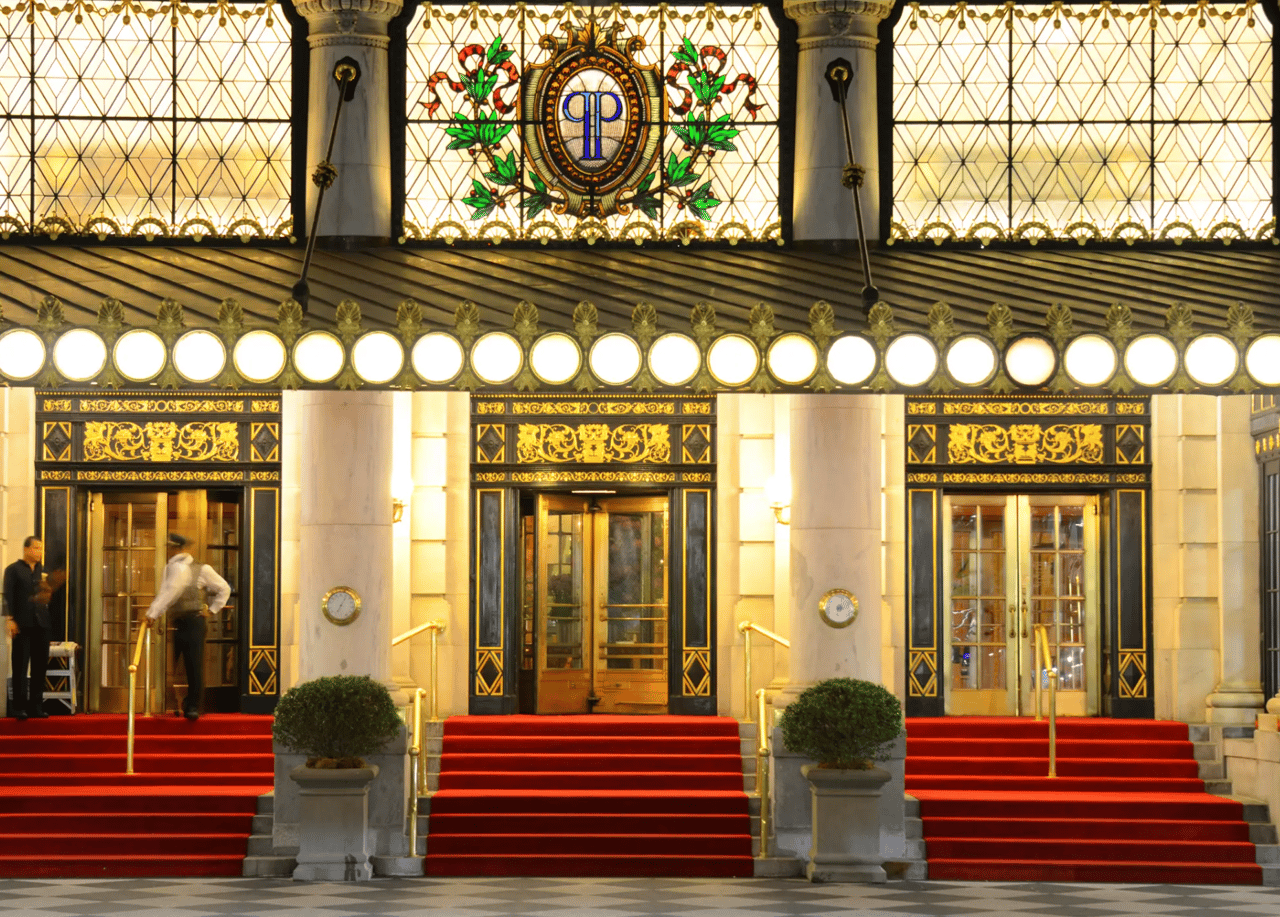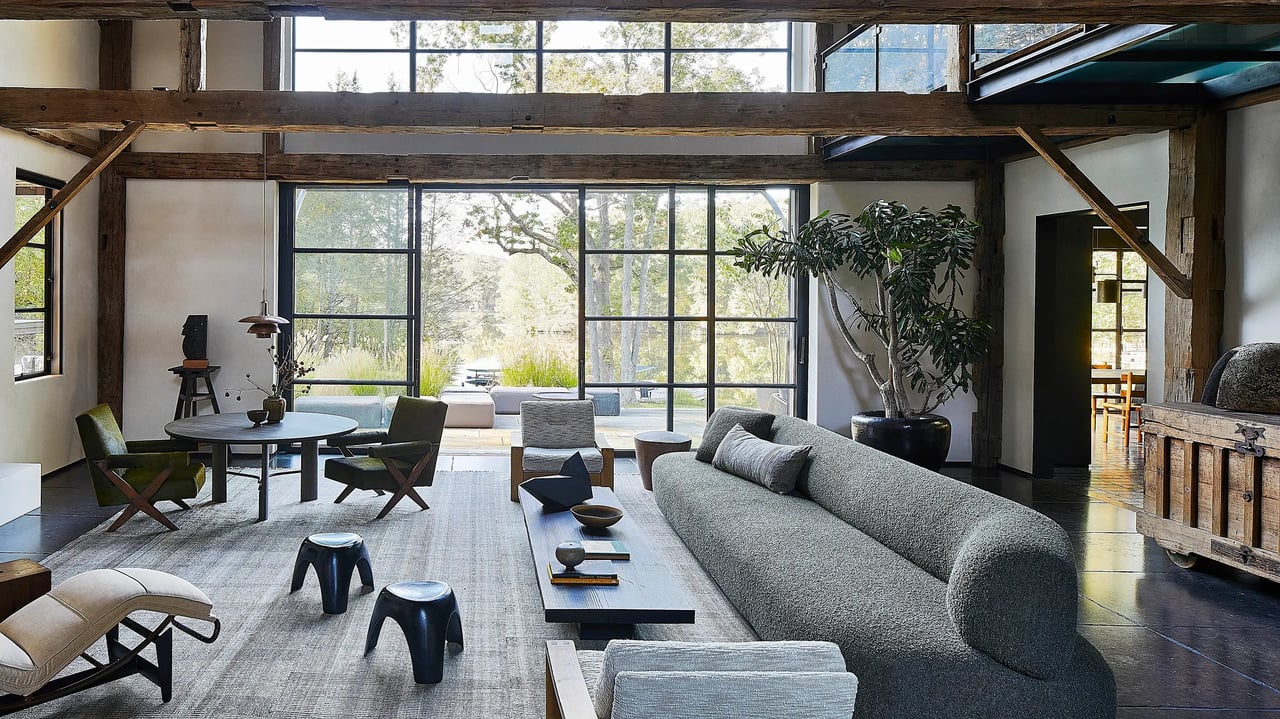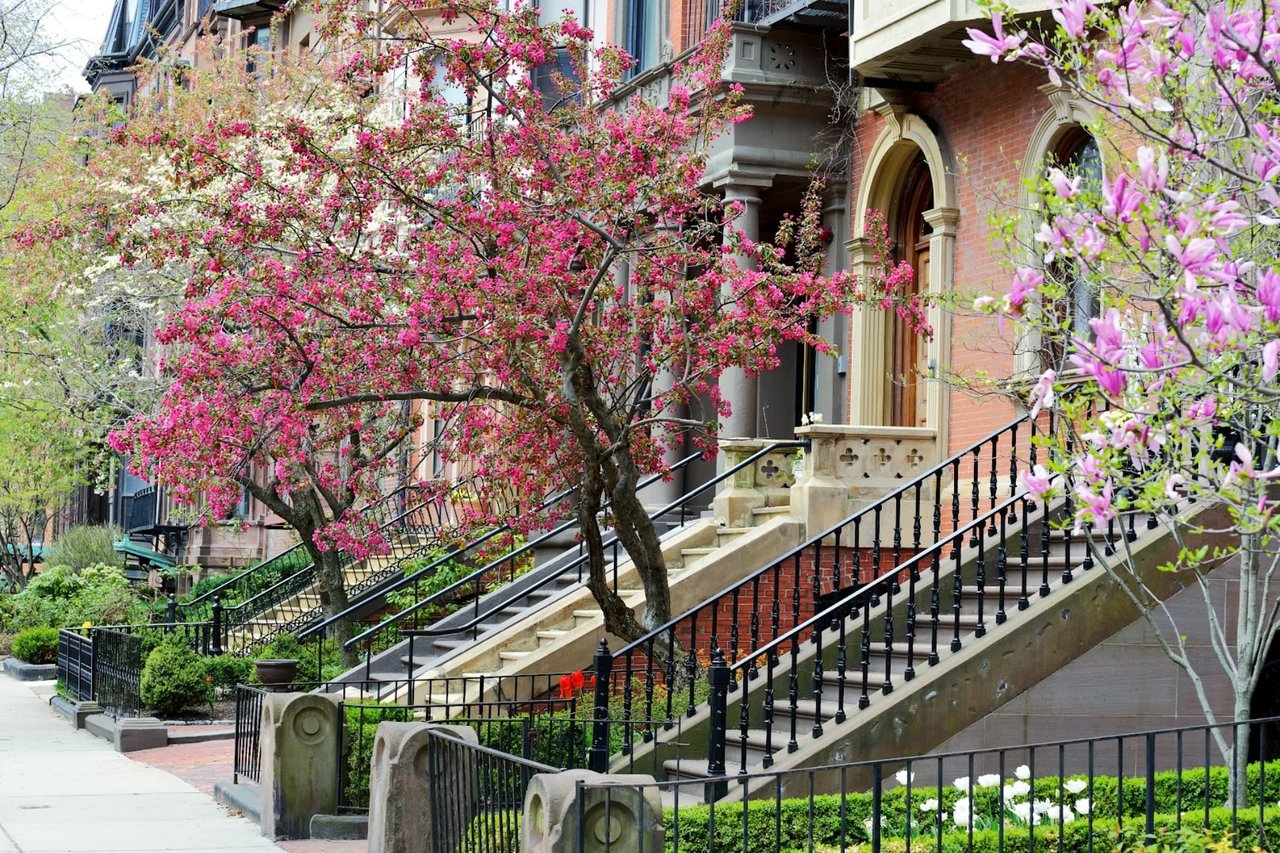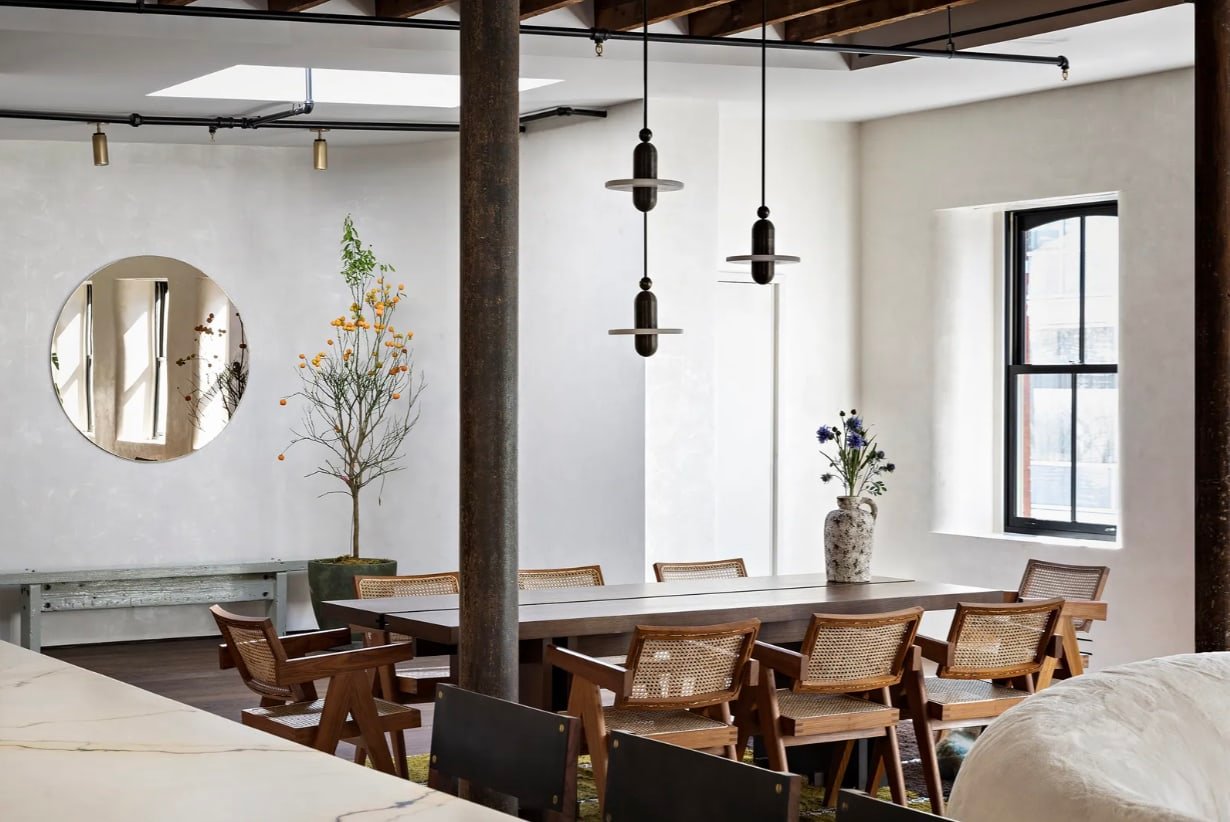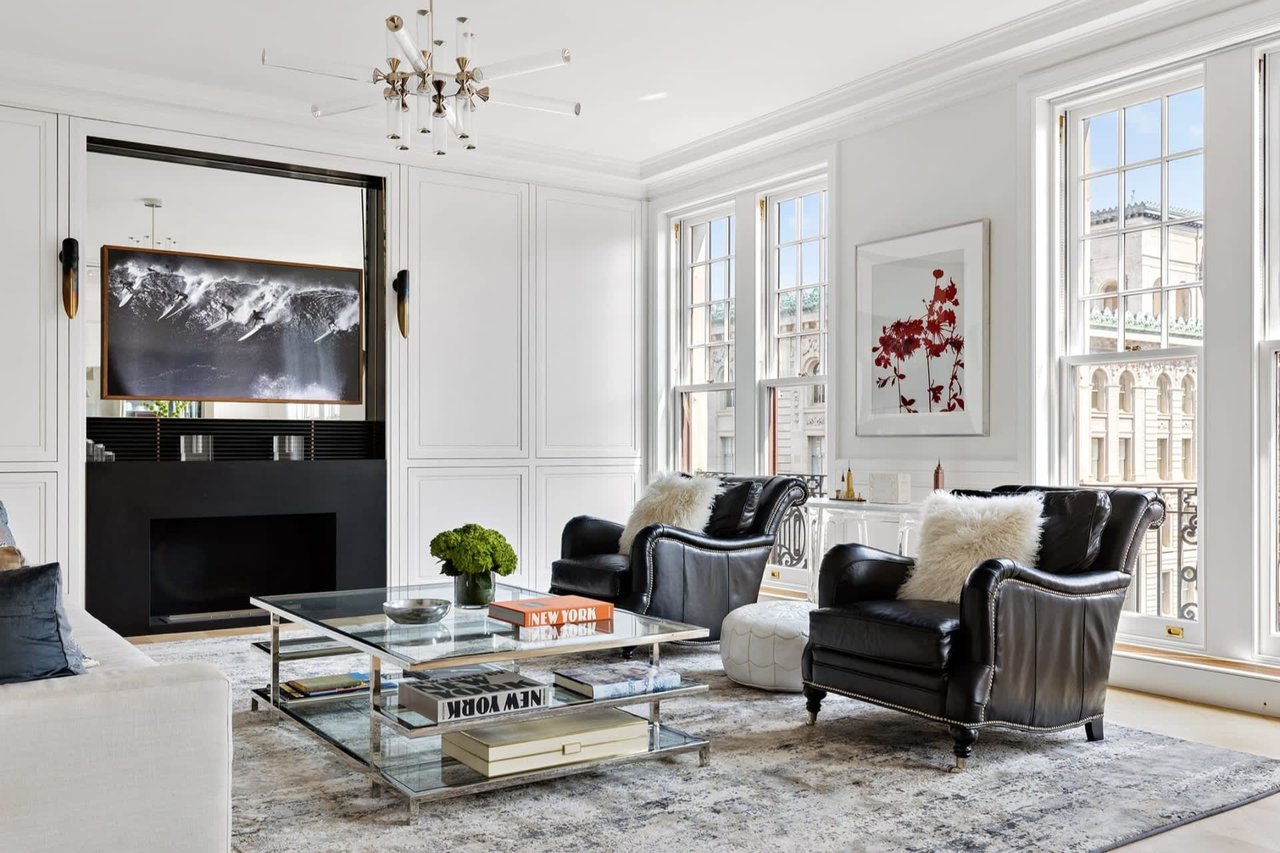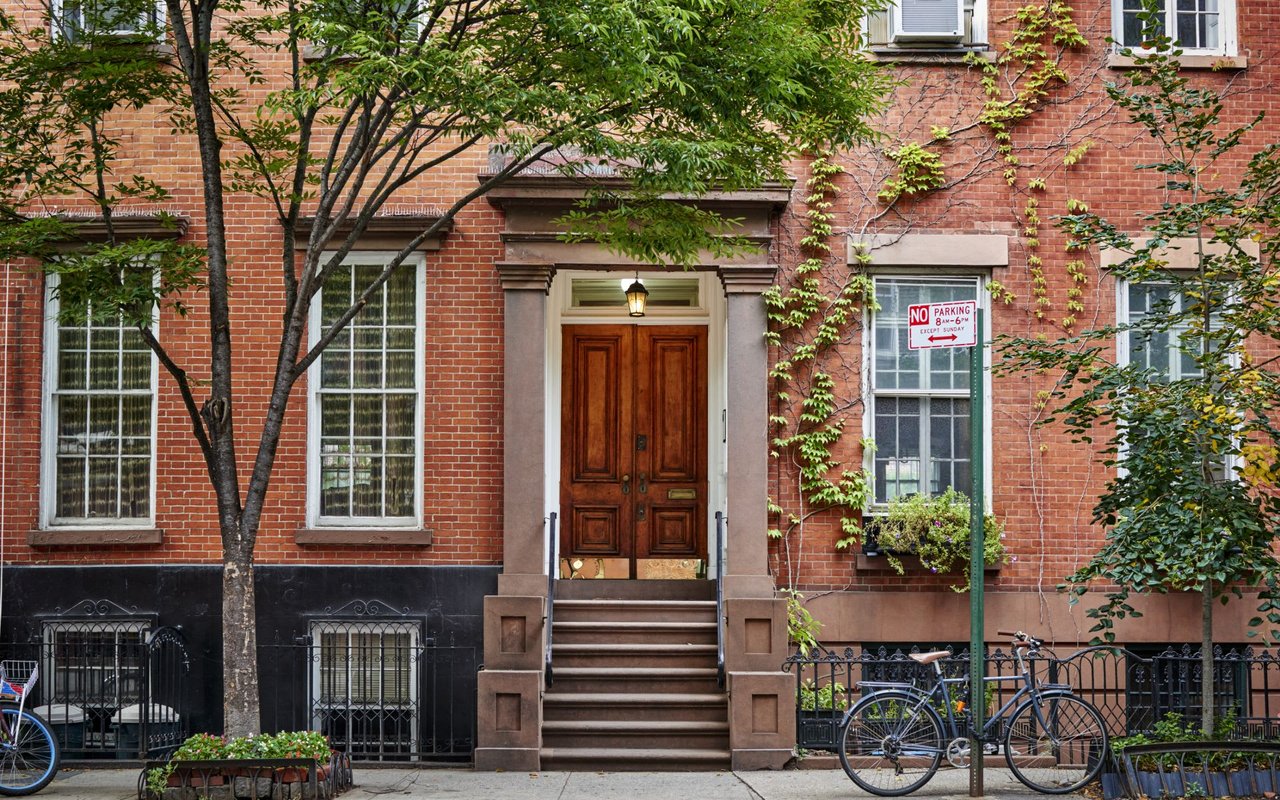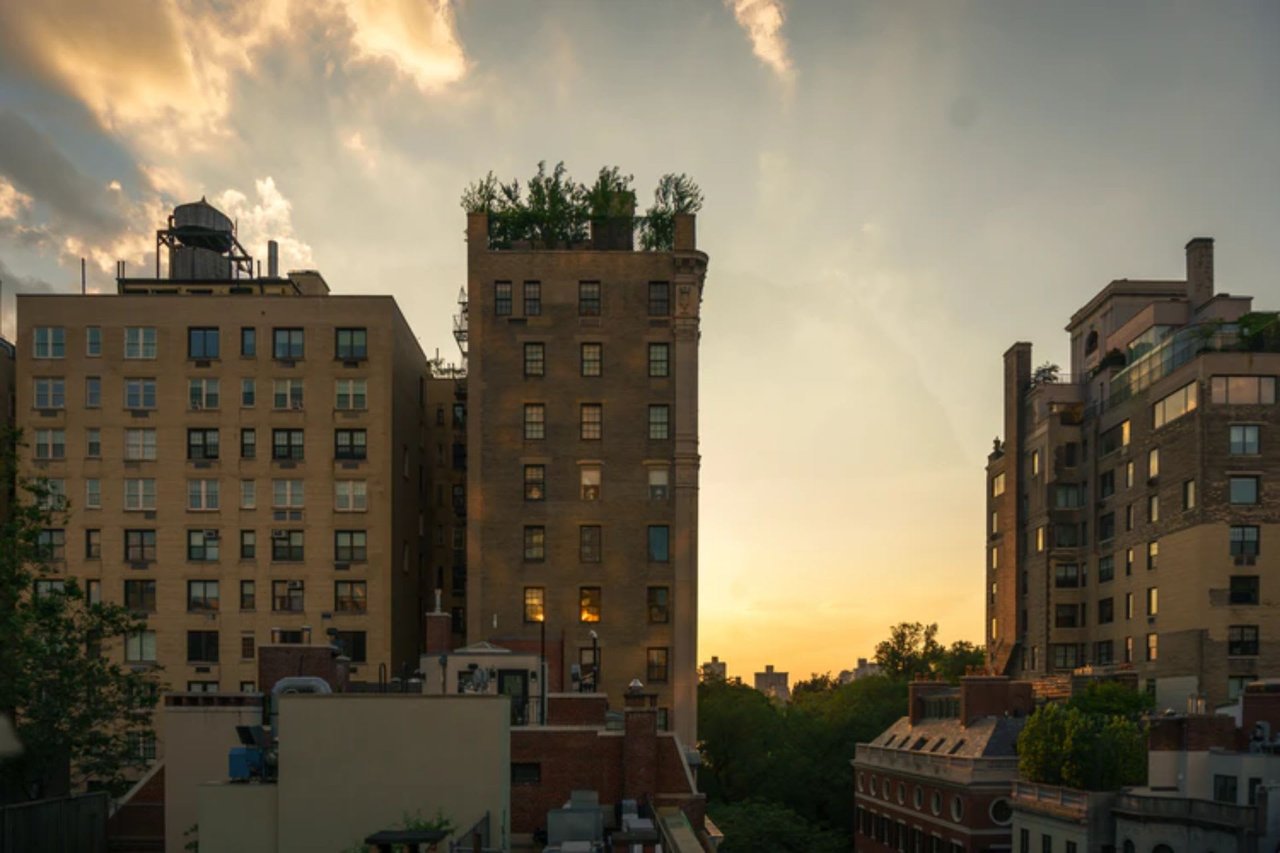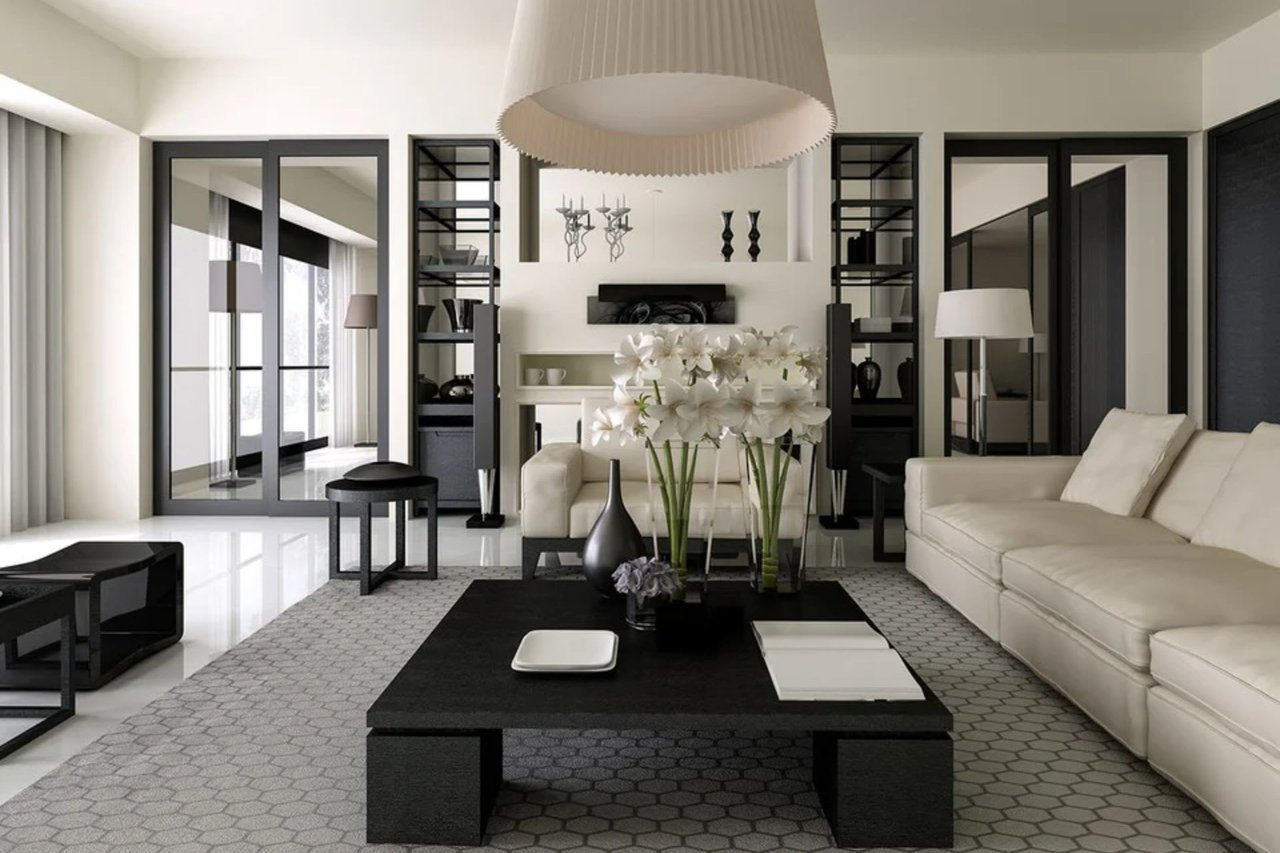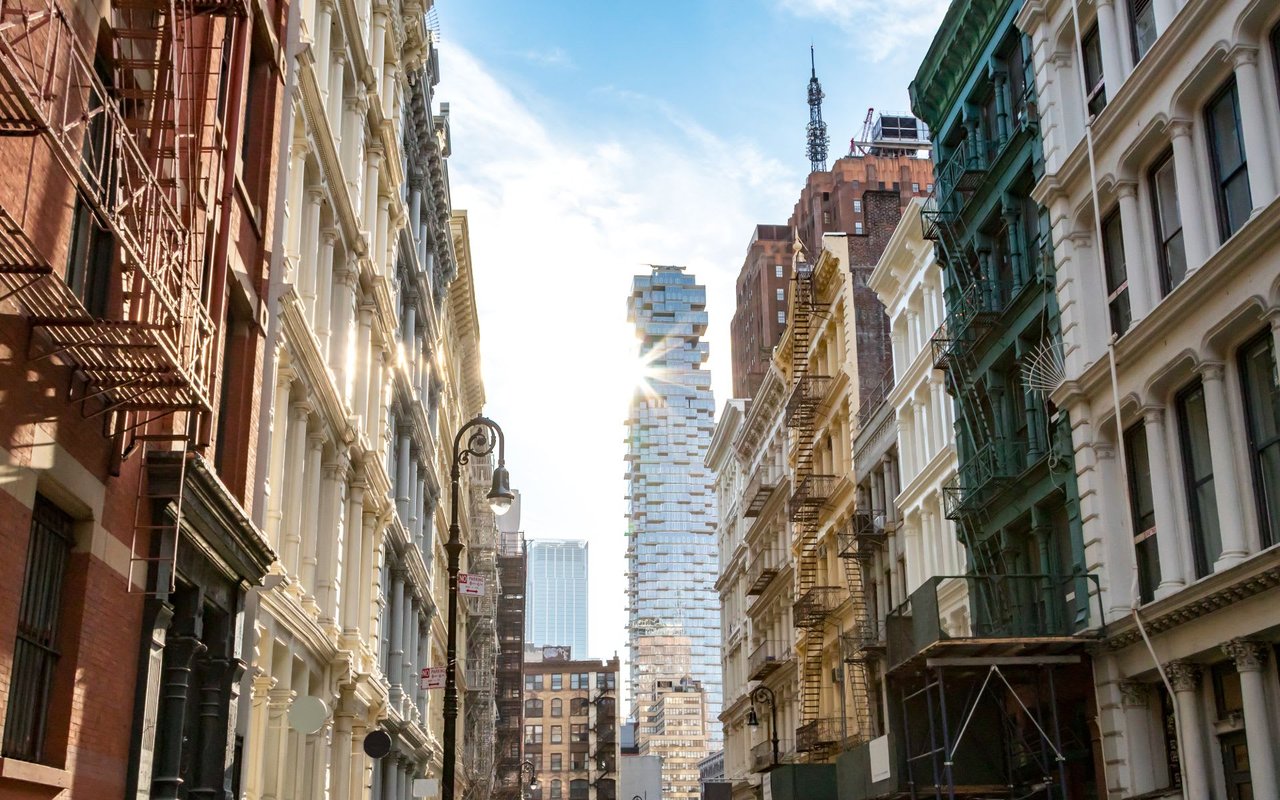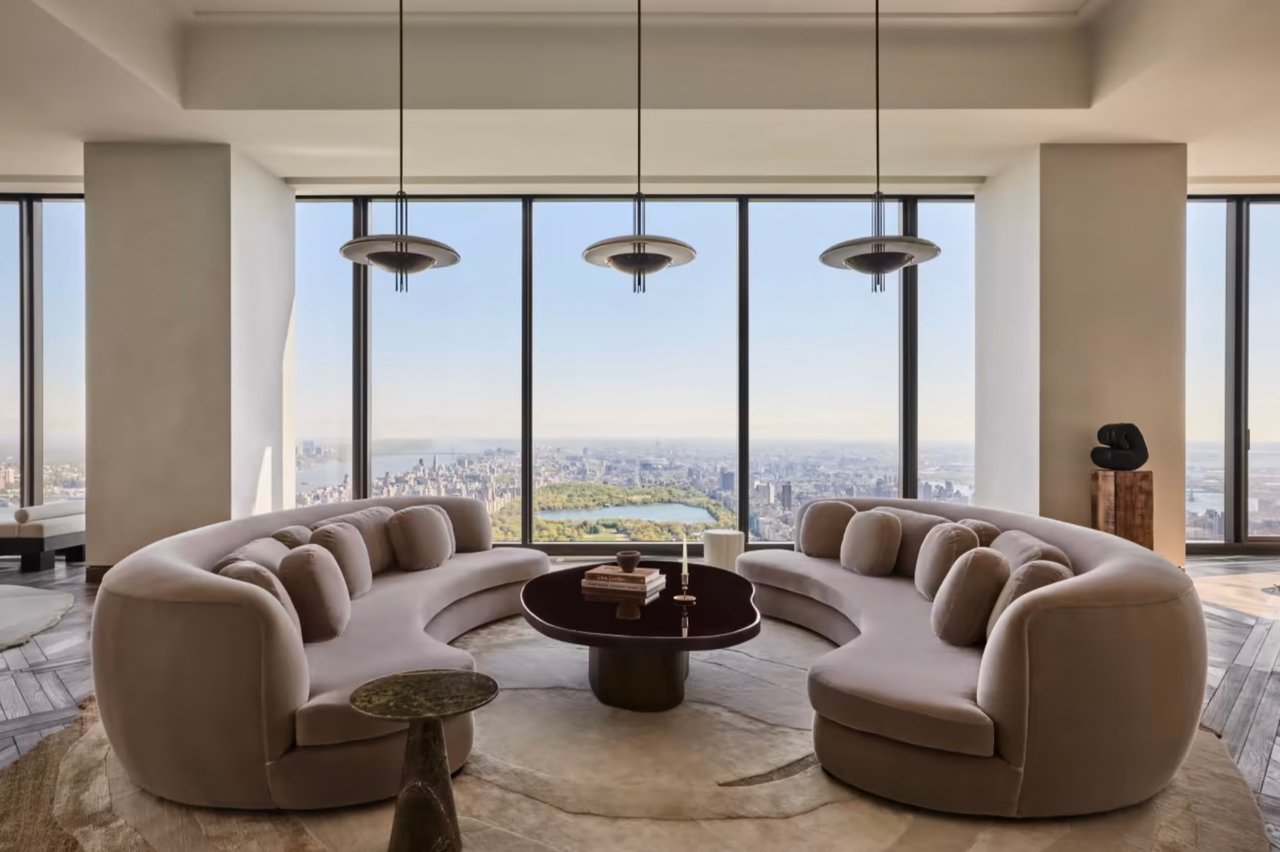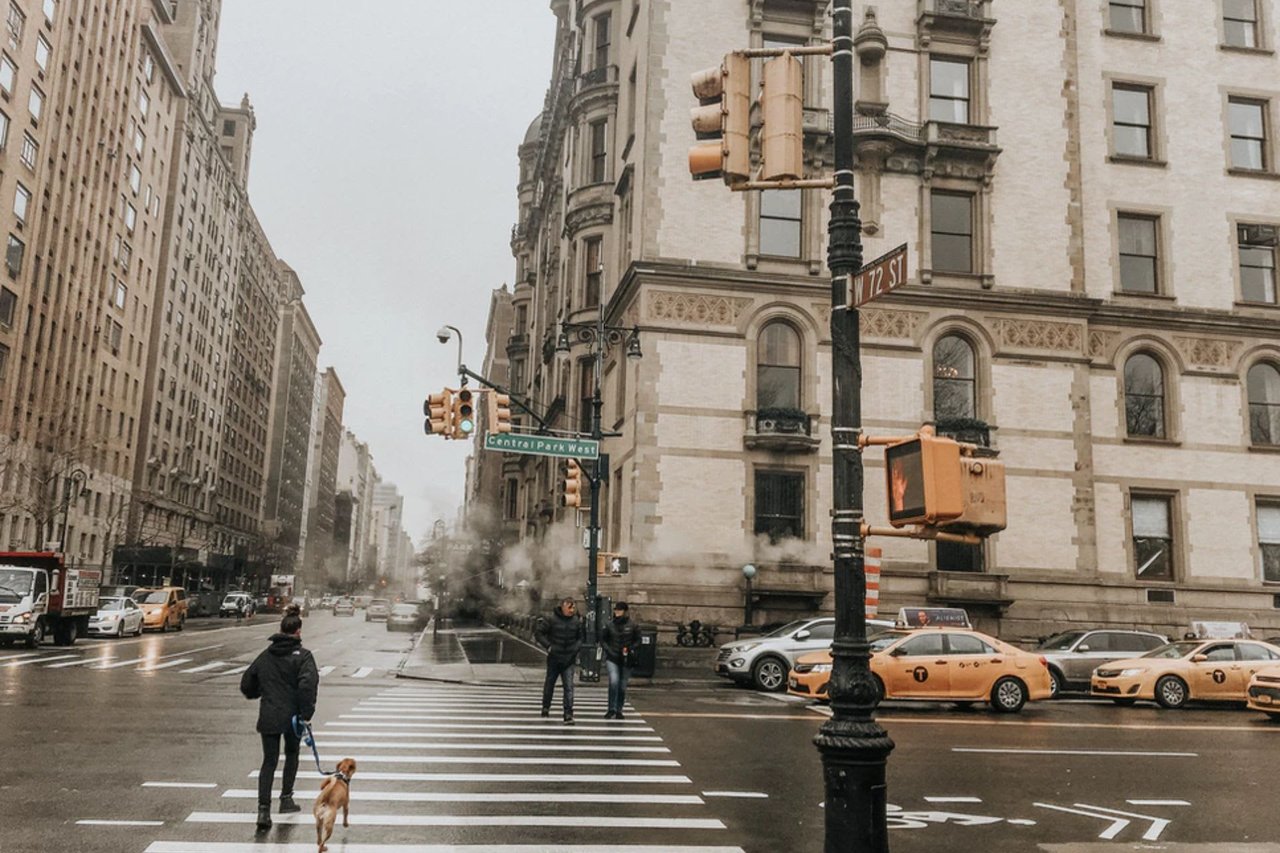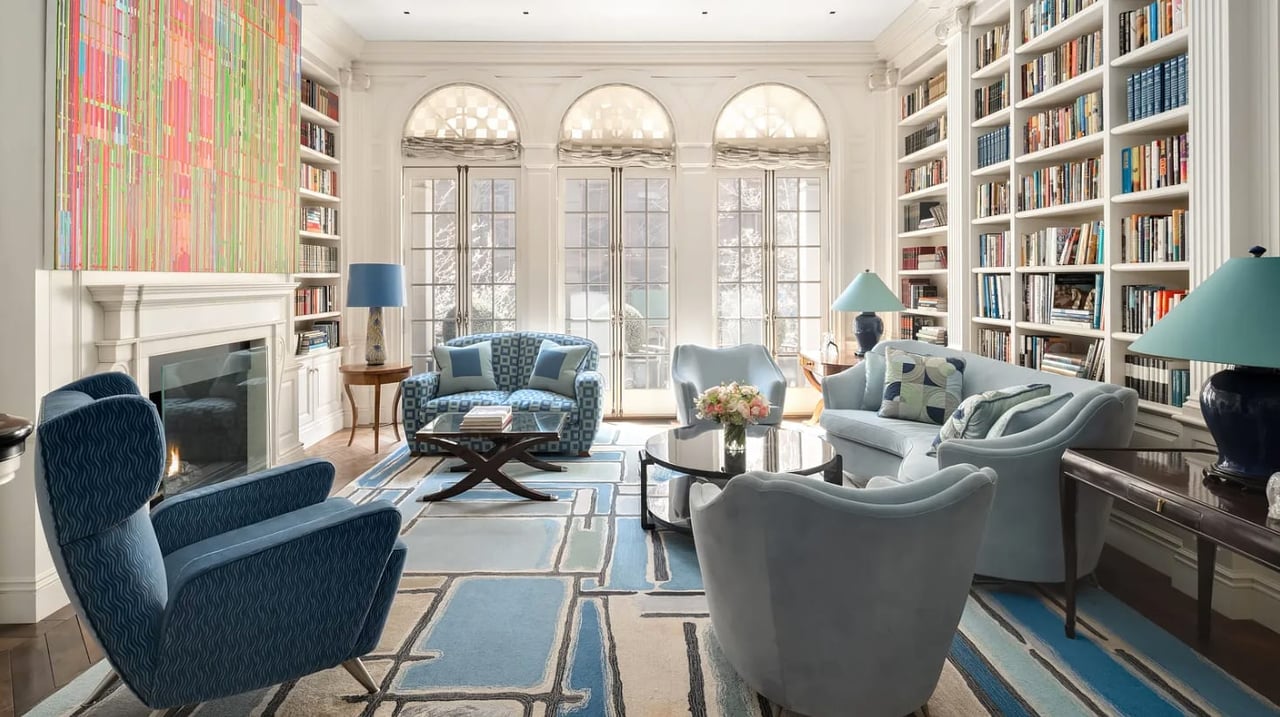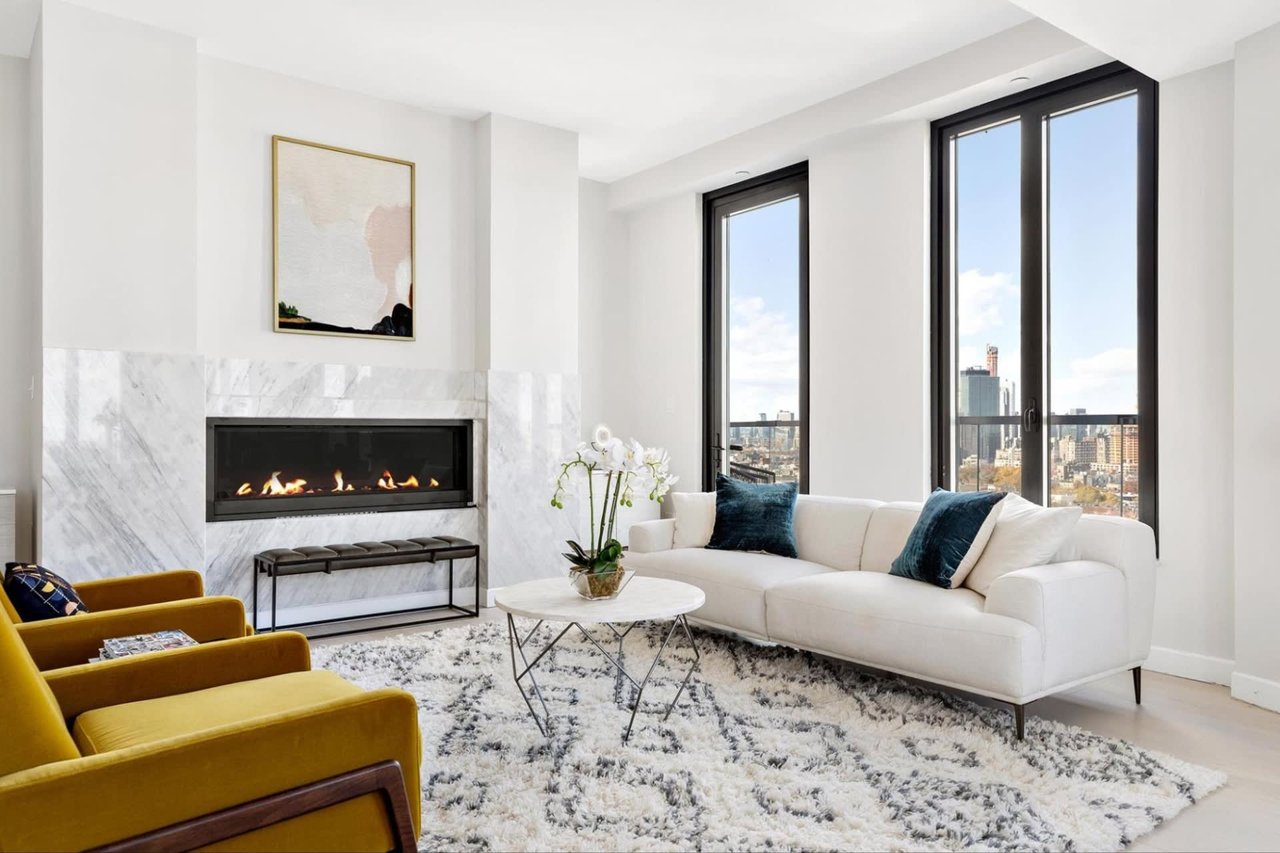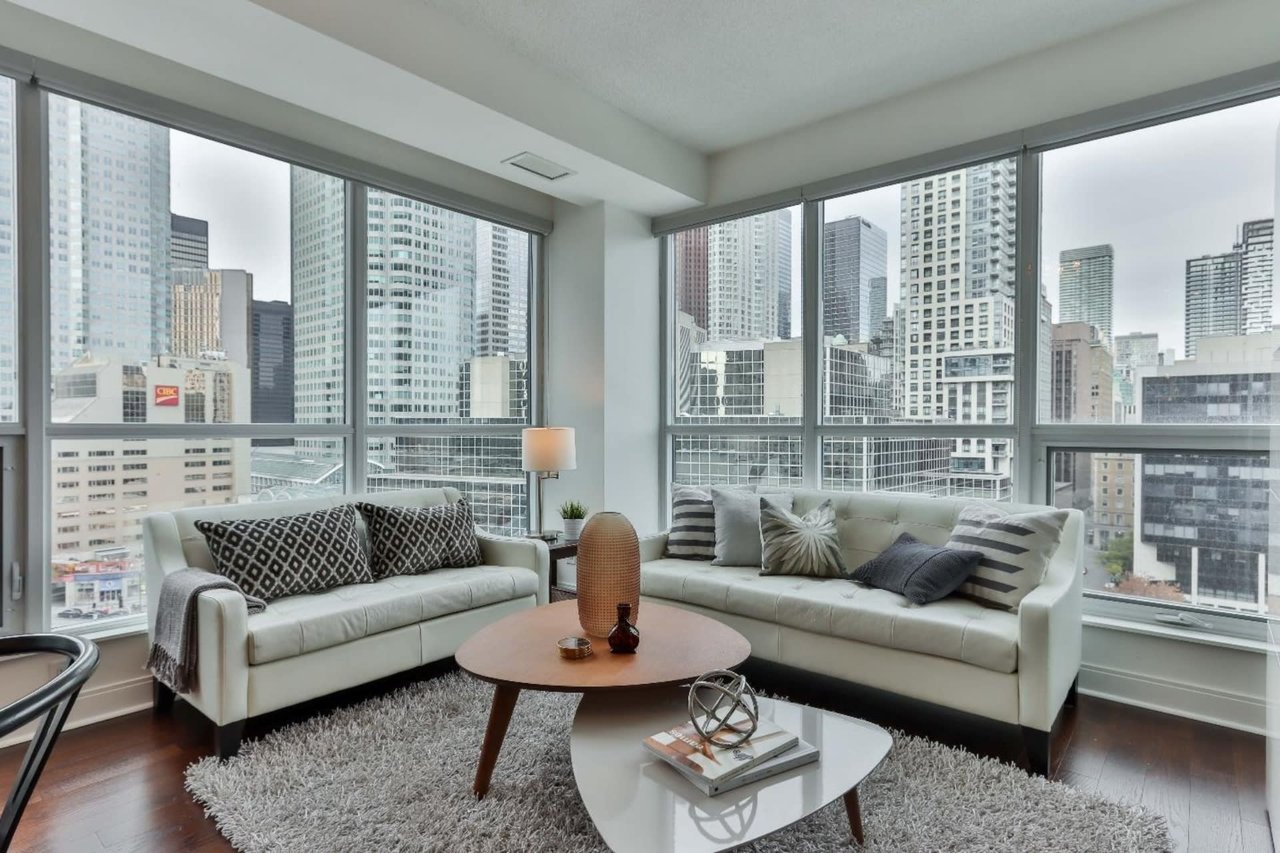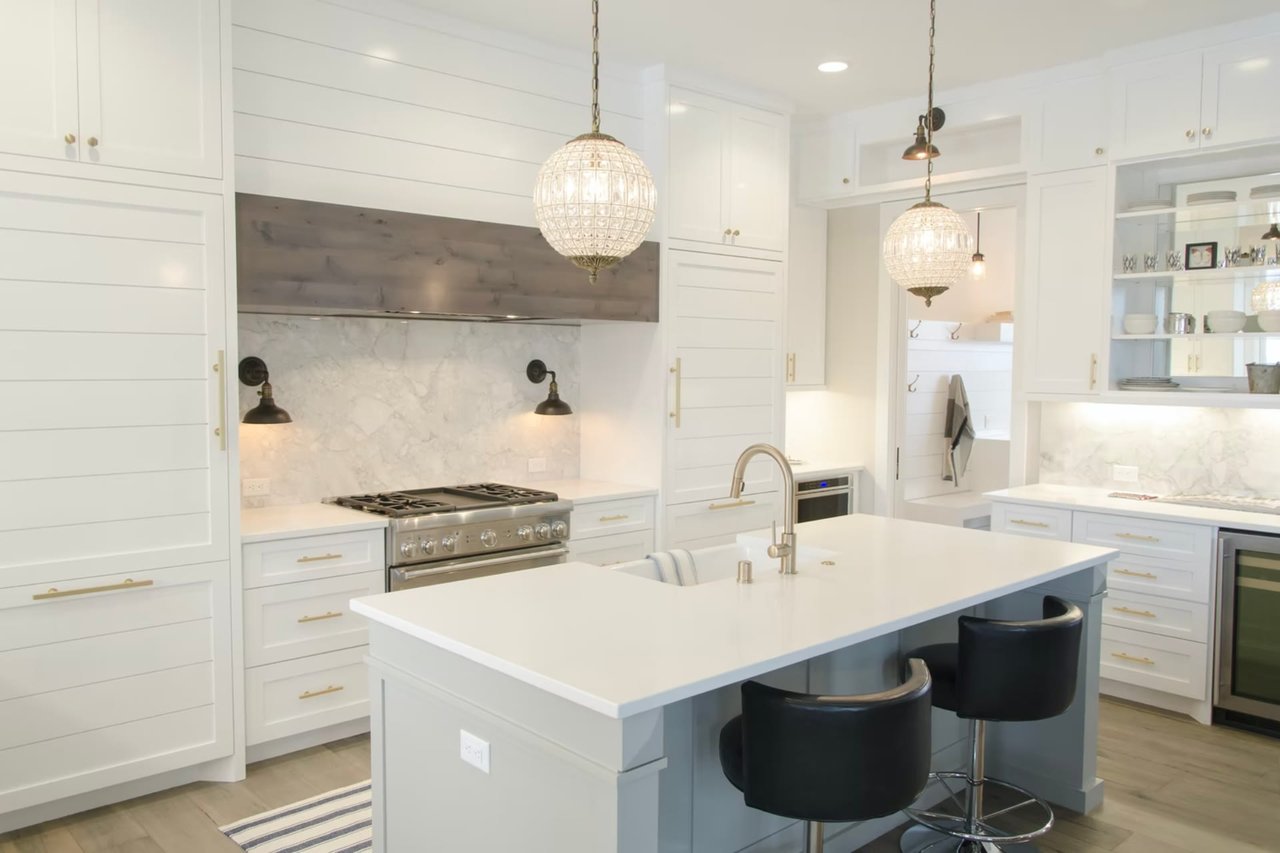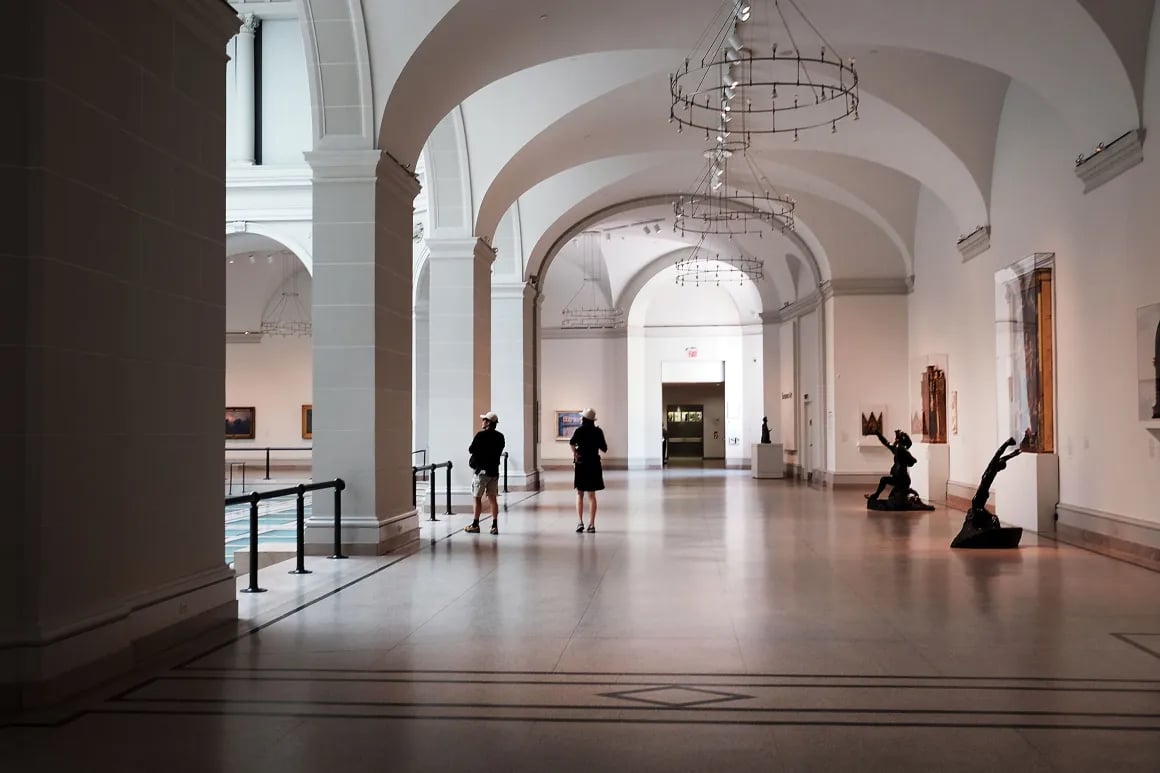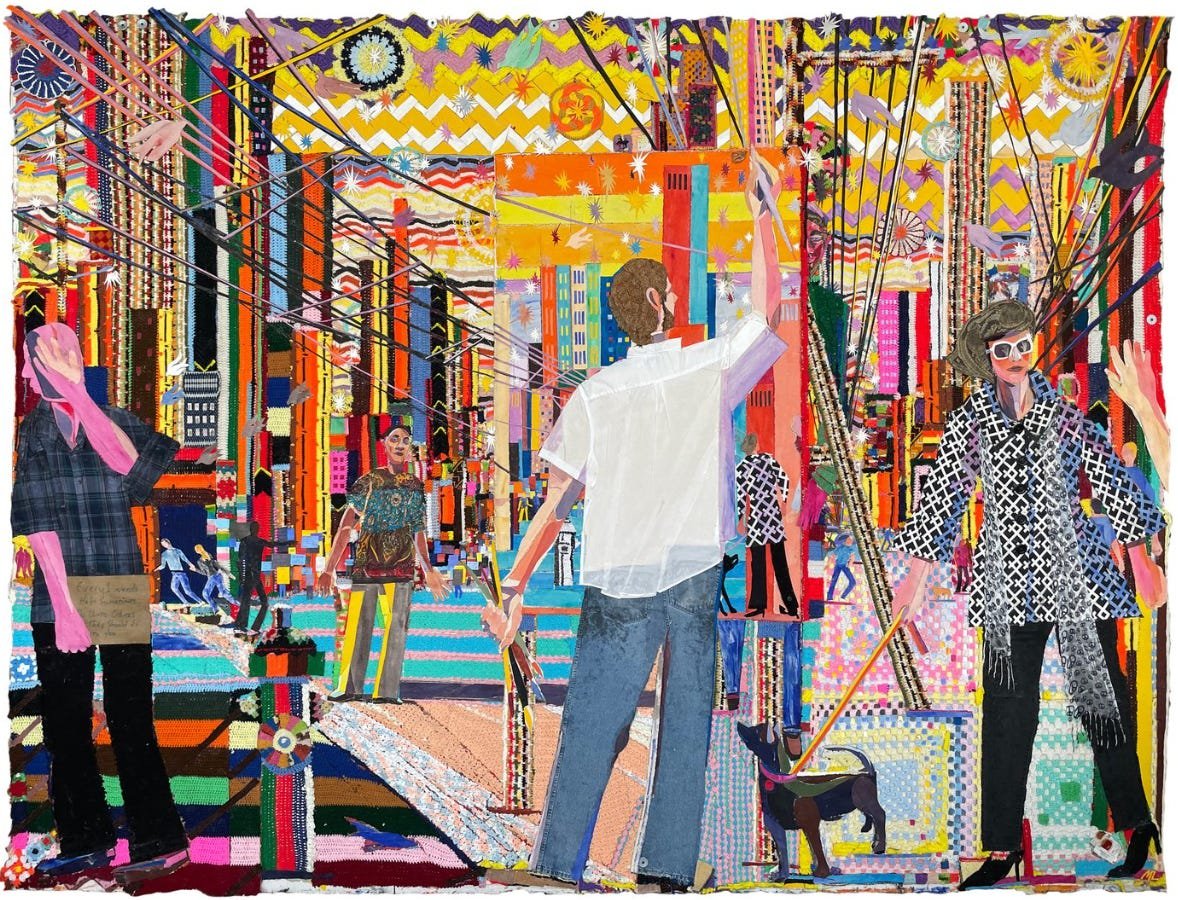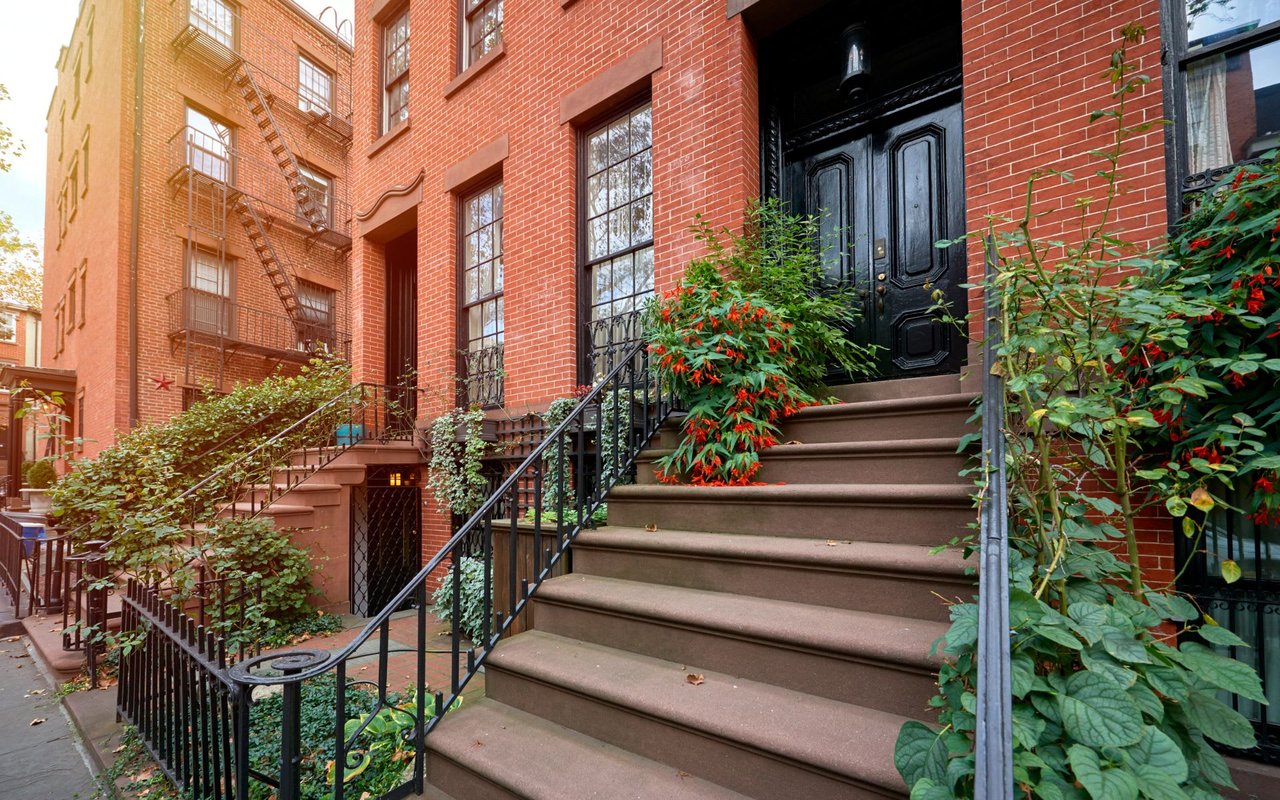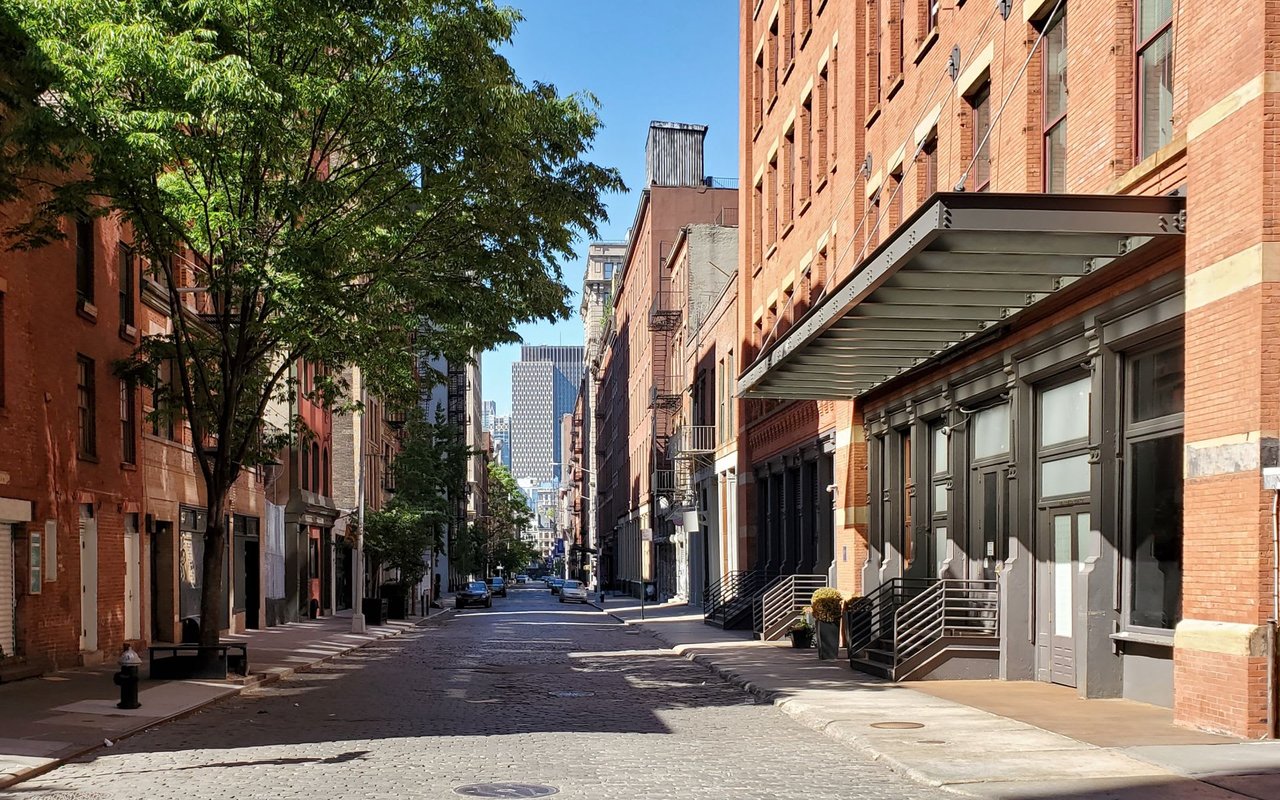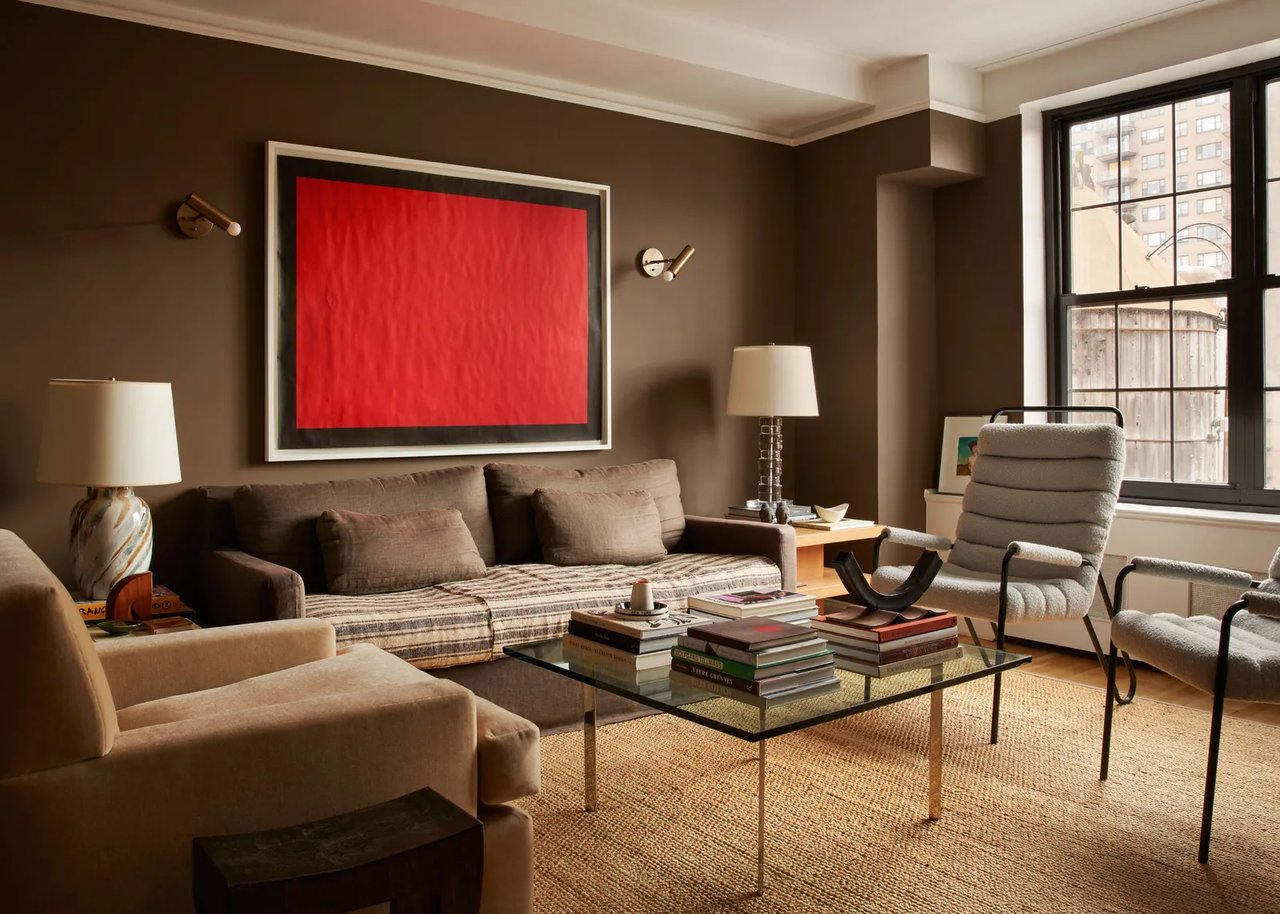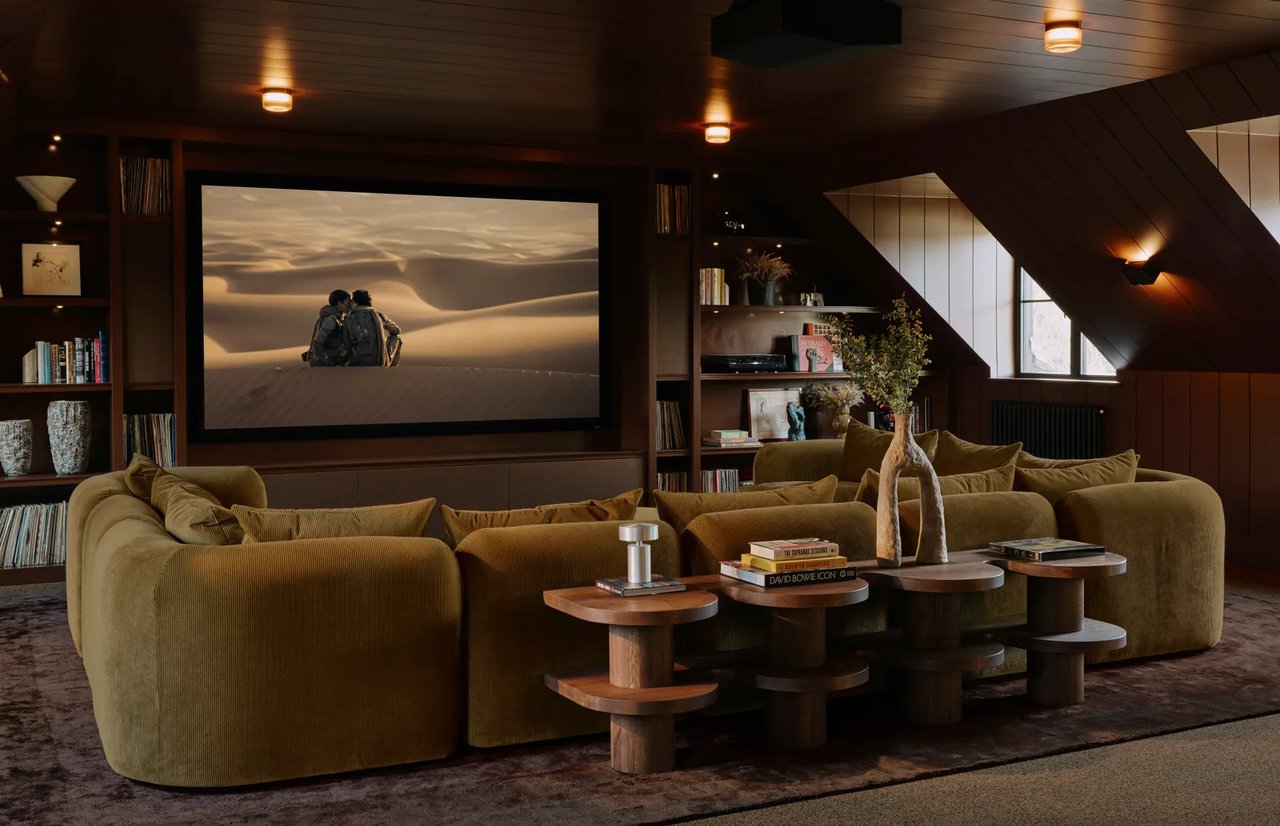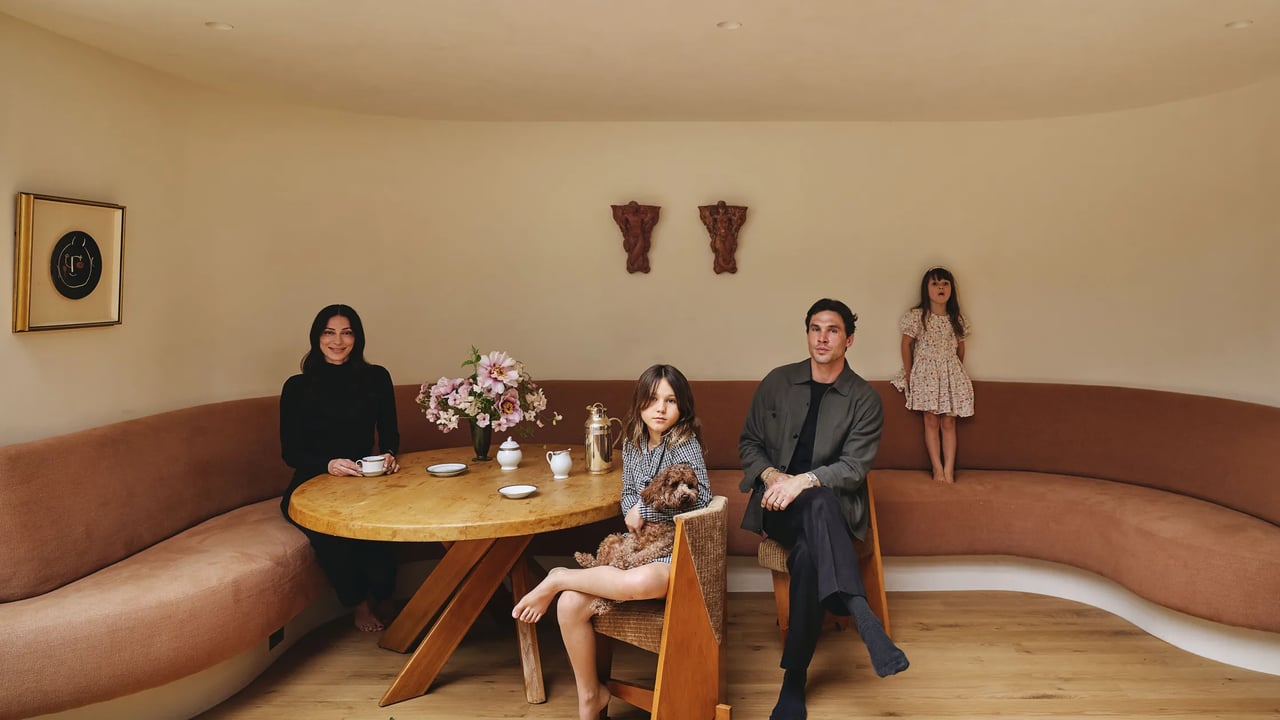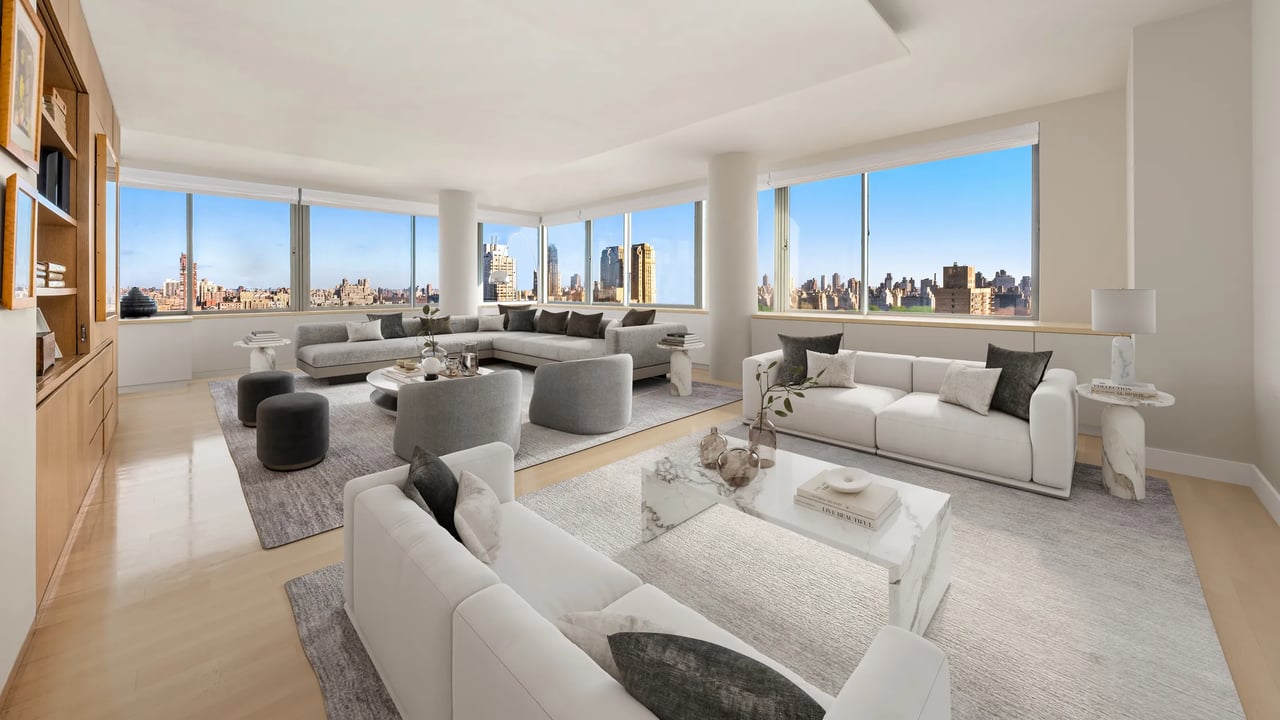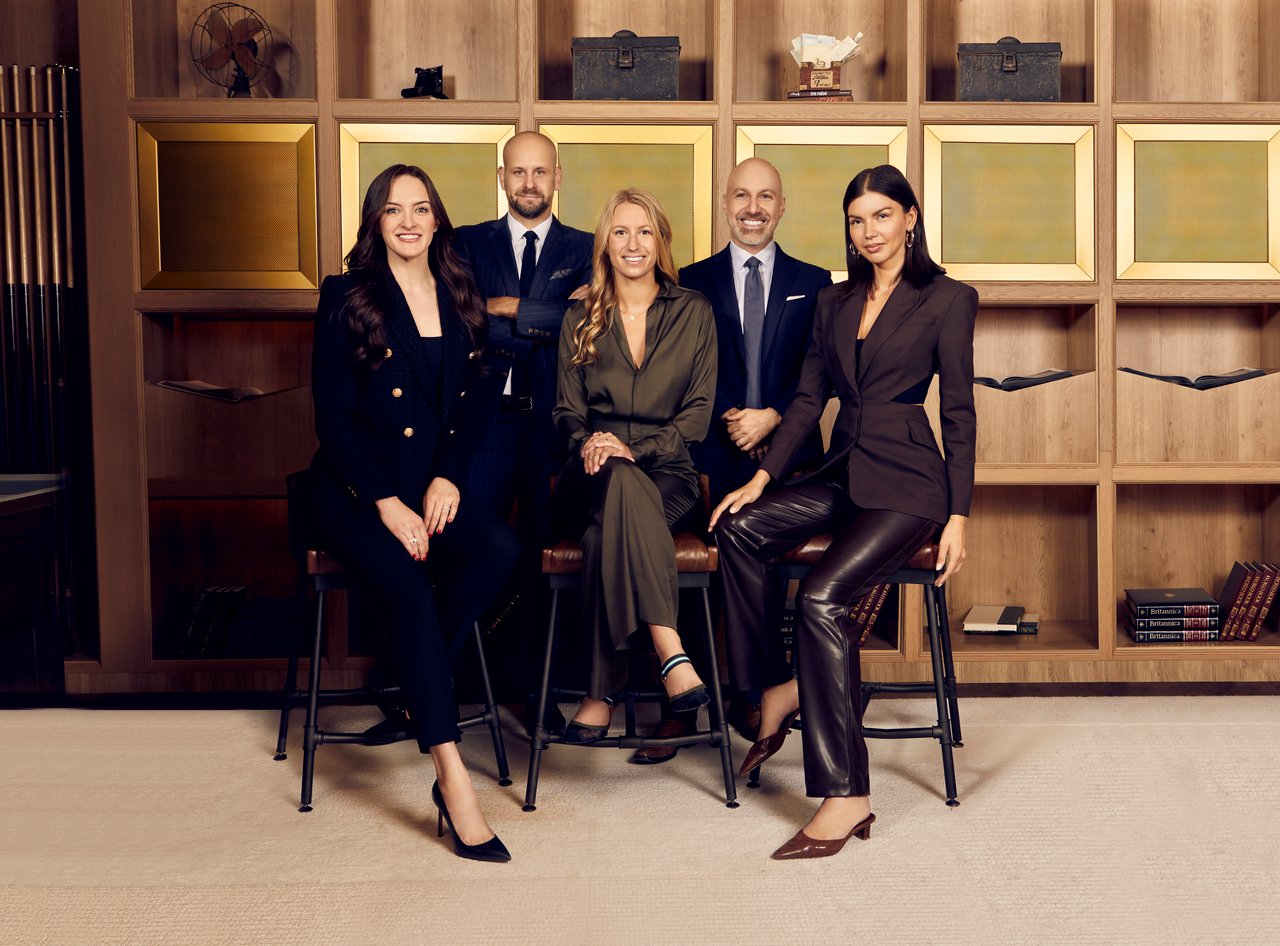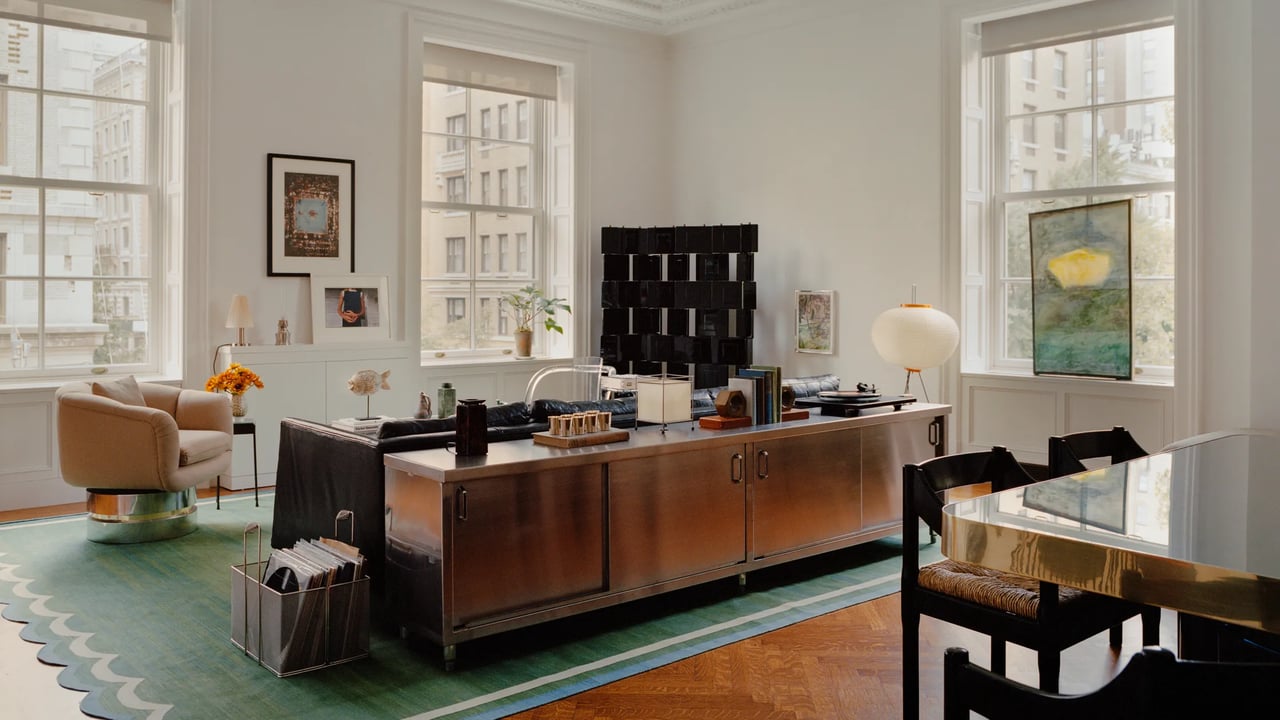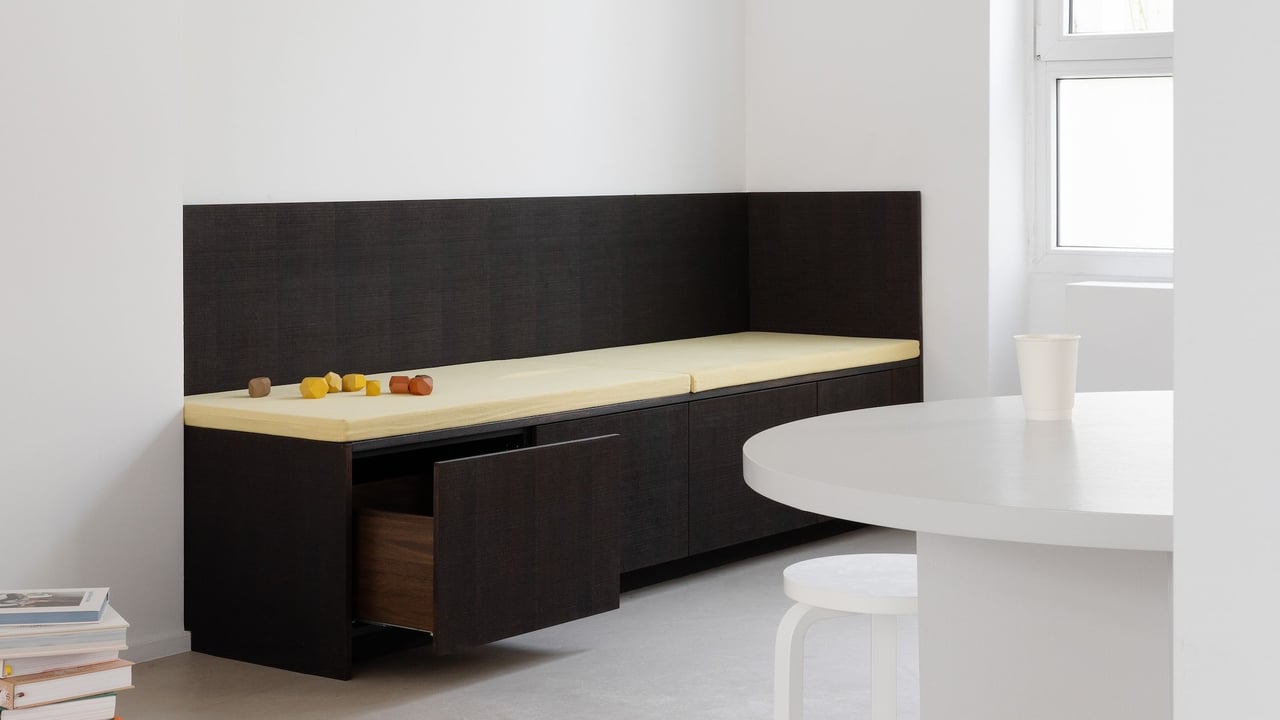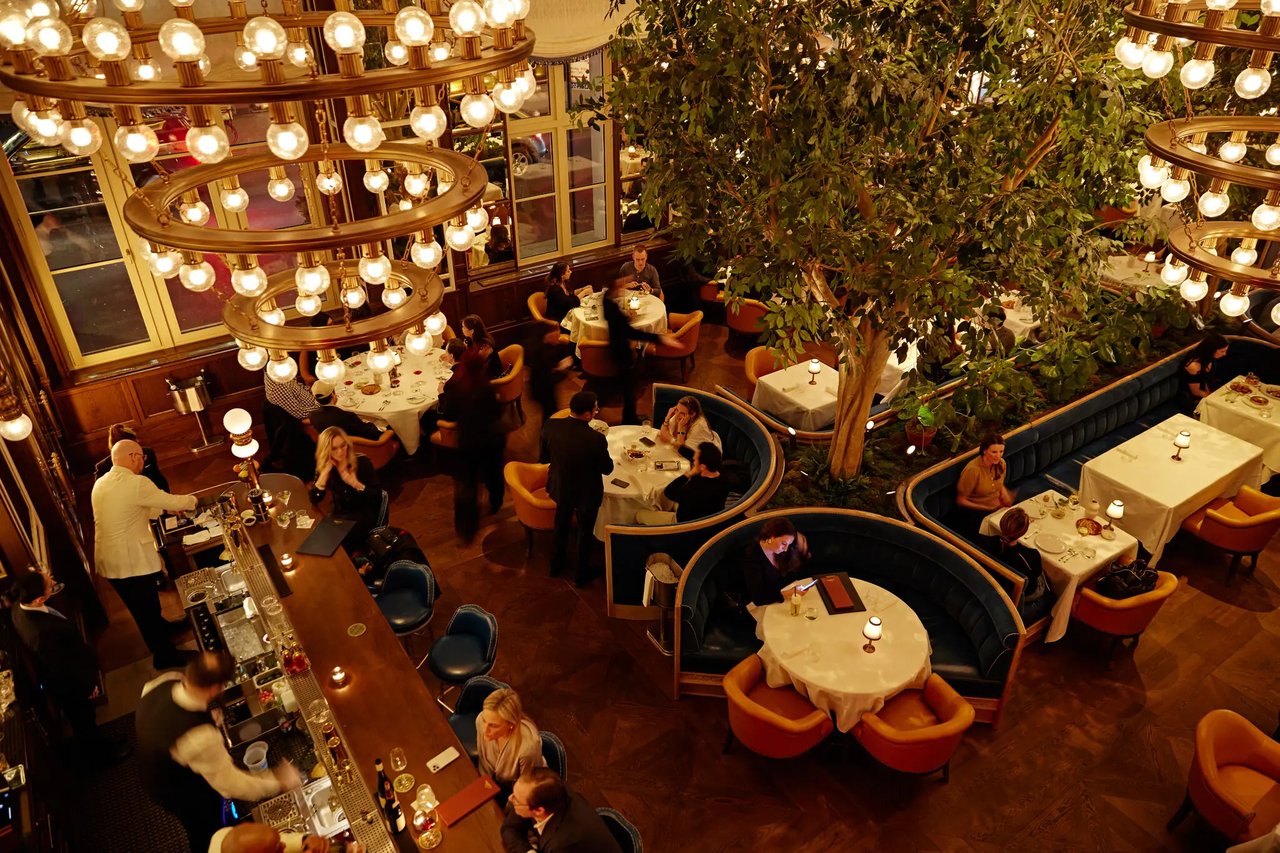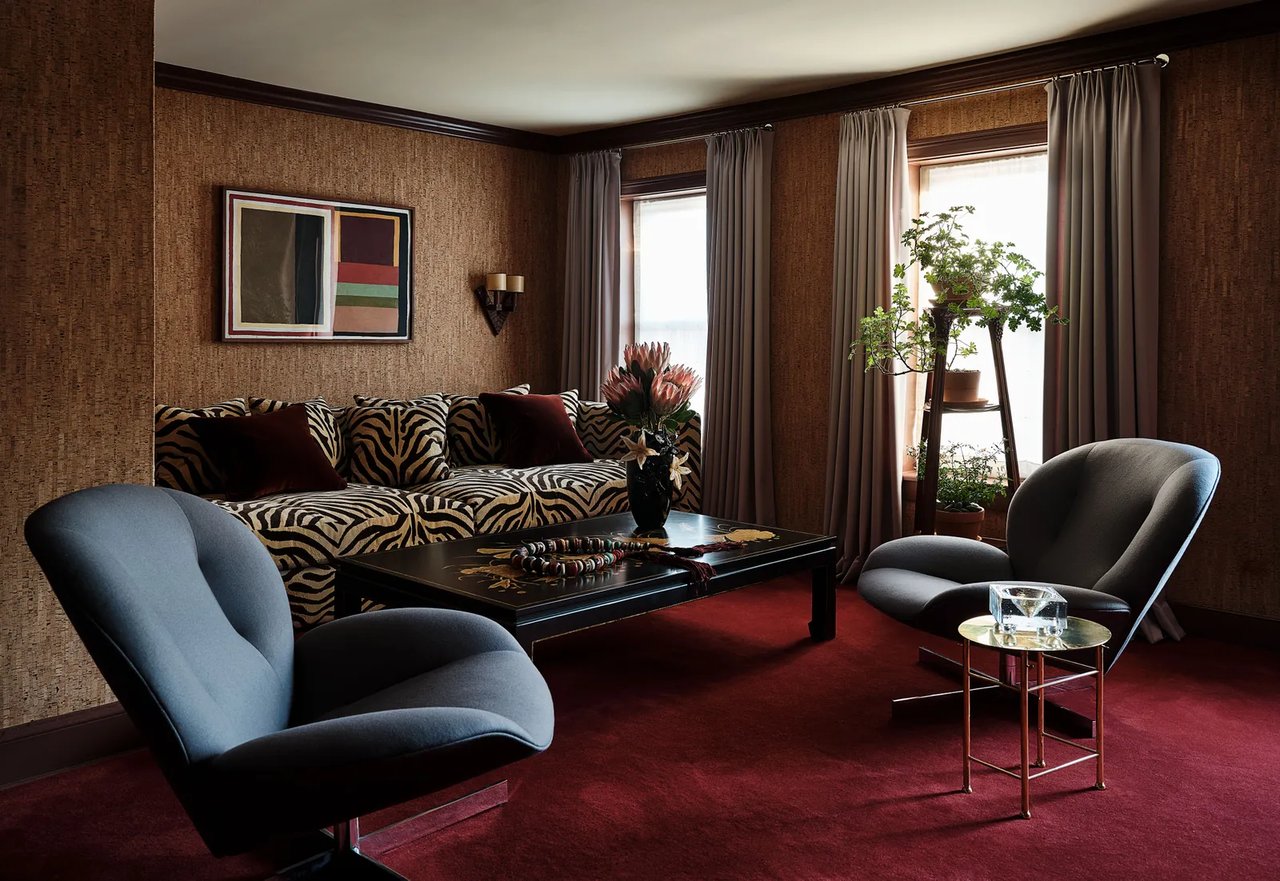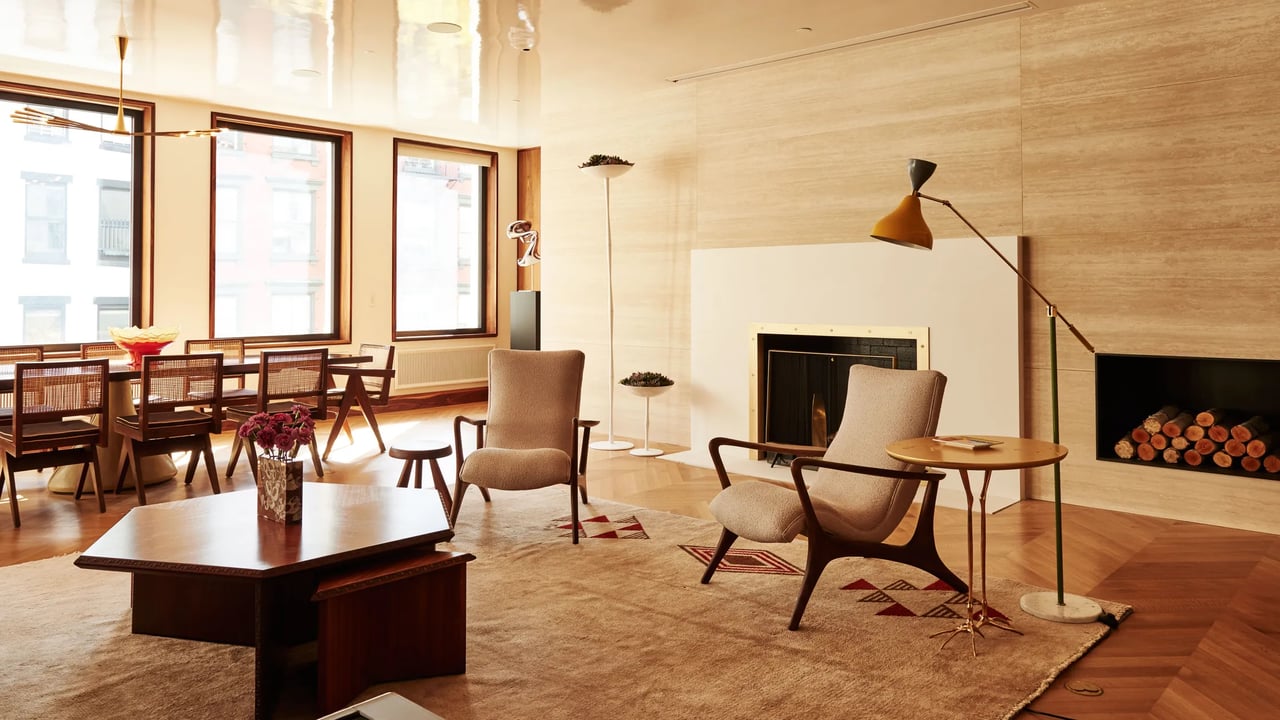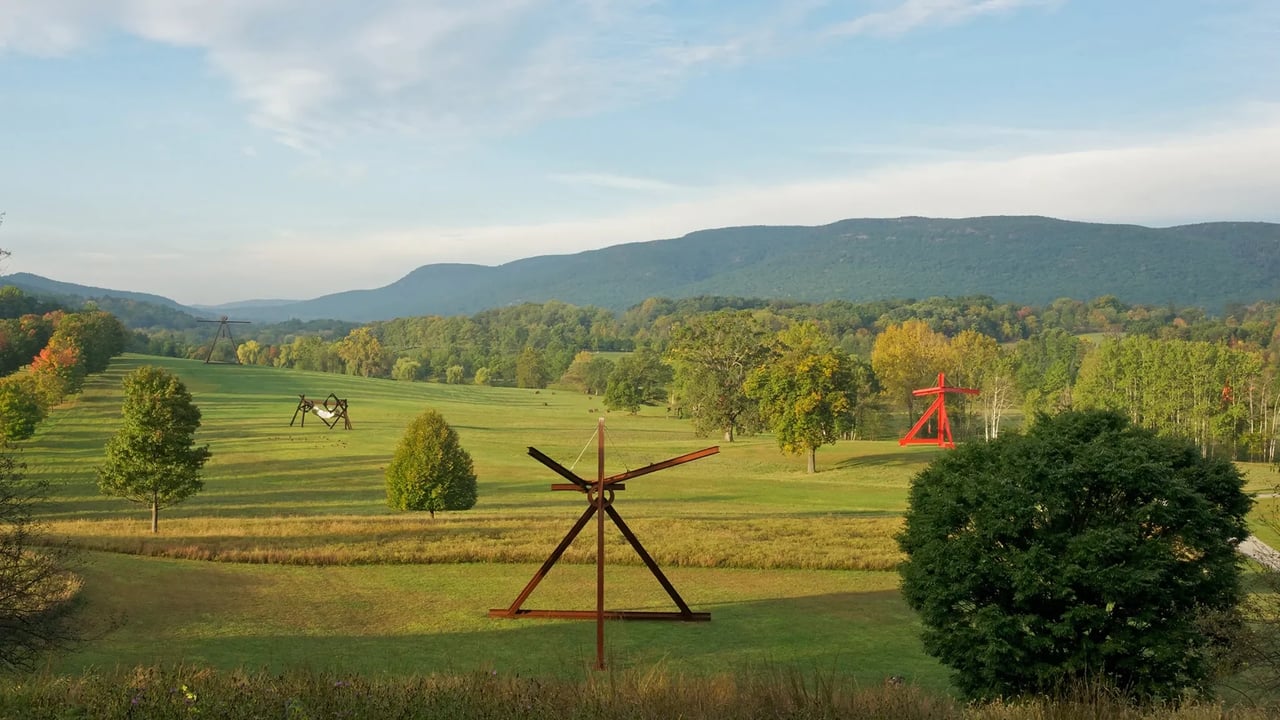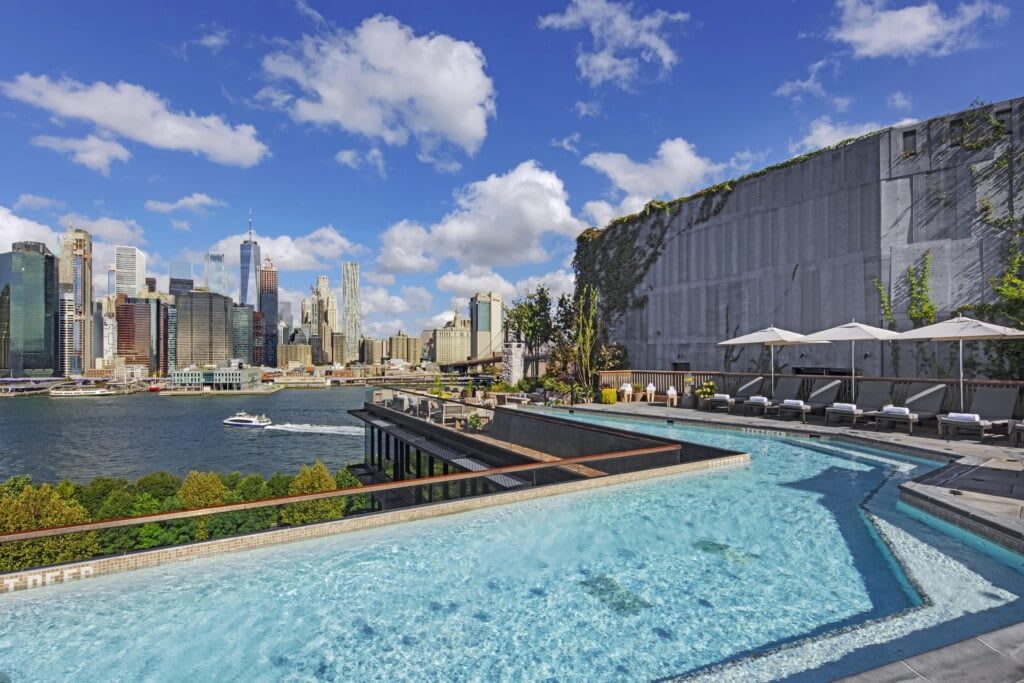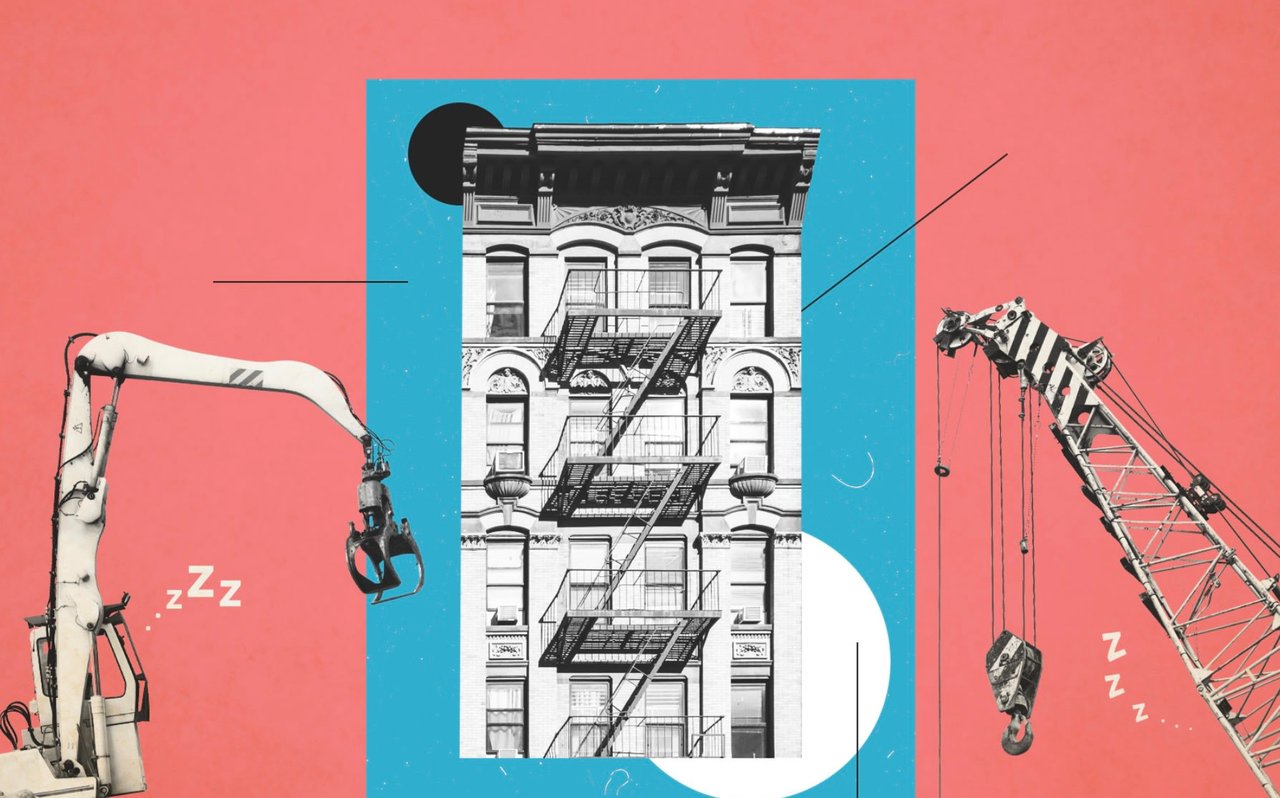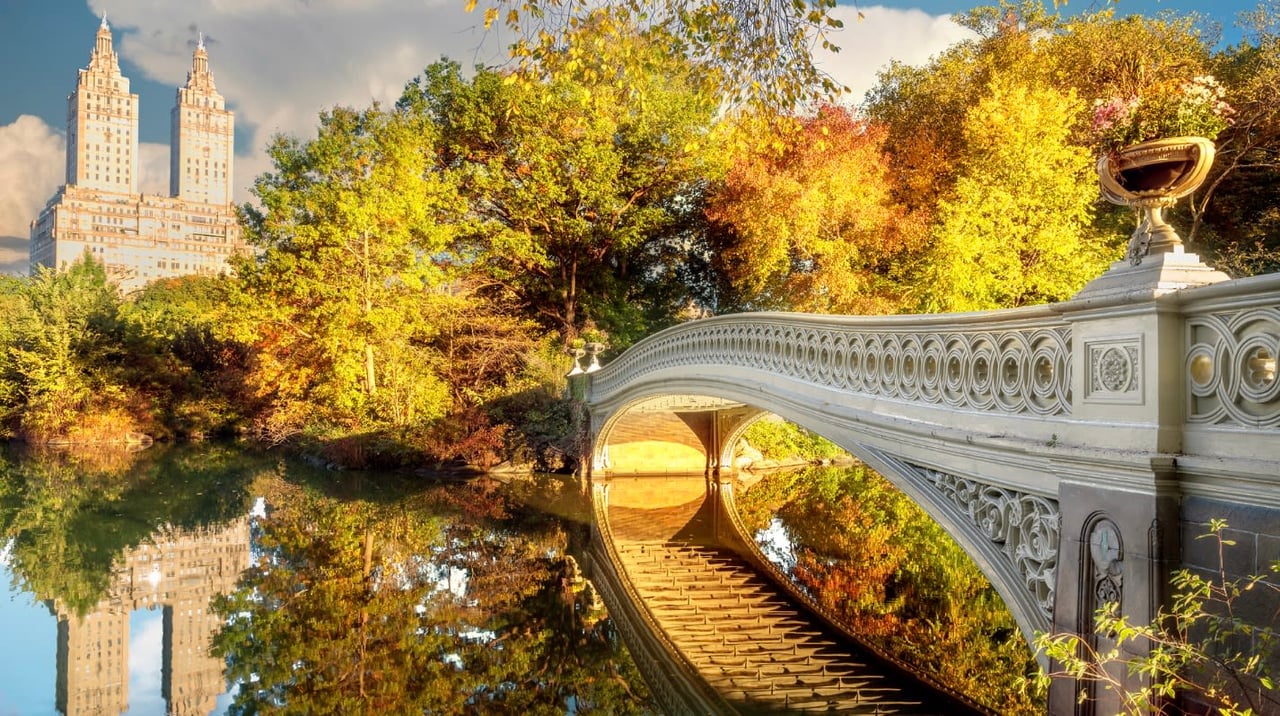As he often does with clients, Volpe took Seller and Lehrer shopping early on in the design process to gauge their tastes and begin shaping their relationships with rooms that, at least for the foreseeable future, would remain abstractions. Eventually, Volpe explains, “when the pieces they bought are installed, it’s ‘Oh, I know you!’ ” This bit of world-building wasn’t lost on the couple. Among their favorite acquisitions are a pair of 1961 lounge chairs by Gustave Gautier in the living room and an important Eugène Printz cabinet, circa 1930, that opens to reveal drawers for a gentleman’s shirts and silk handkerchiefs. It now sits gloriously unencumbered in the entry hall. An adjacent table, by the Hungarian master craftsman Mathieu Matégot, required a midnight phone call between the designer (in London) and his clients (in New York) to secure—Volpe had sprinted through the opening night of the PAD design fair to land it. “We hadn’t even worked out the complete architecture of the space yet, but I was so sure it was the right piece,” he exults.
Spurred on by their designer, Seller and Lehrer turned the inevitable construction delays into opportunities for connoisseurship. Collecting design, Seller says, “has expanded our horizons. Because we’re now art history students. We’ve been learning, what is modernism and how is that reflected in furniture?”
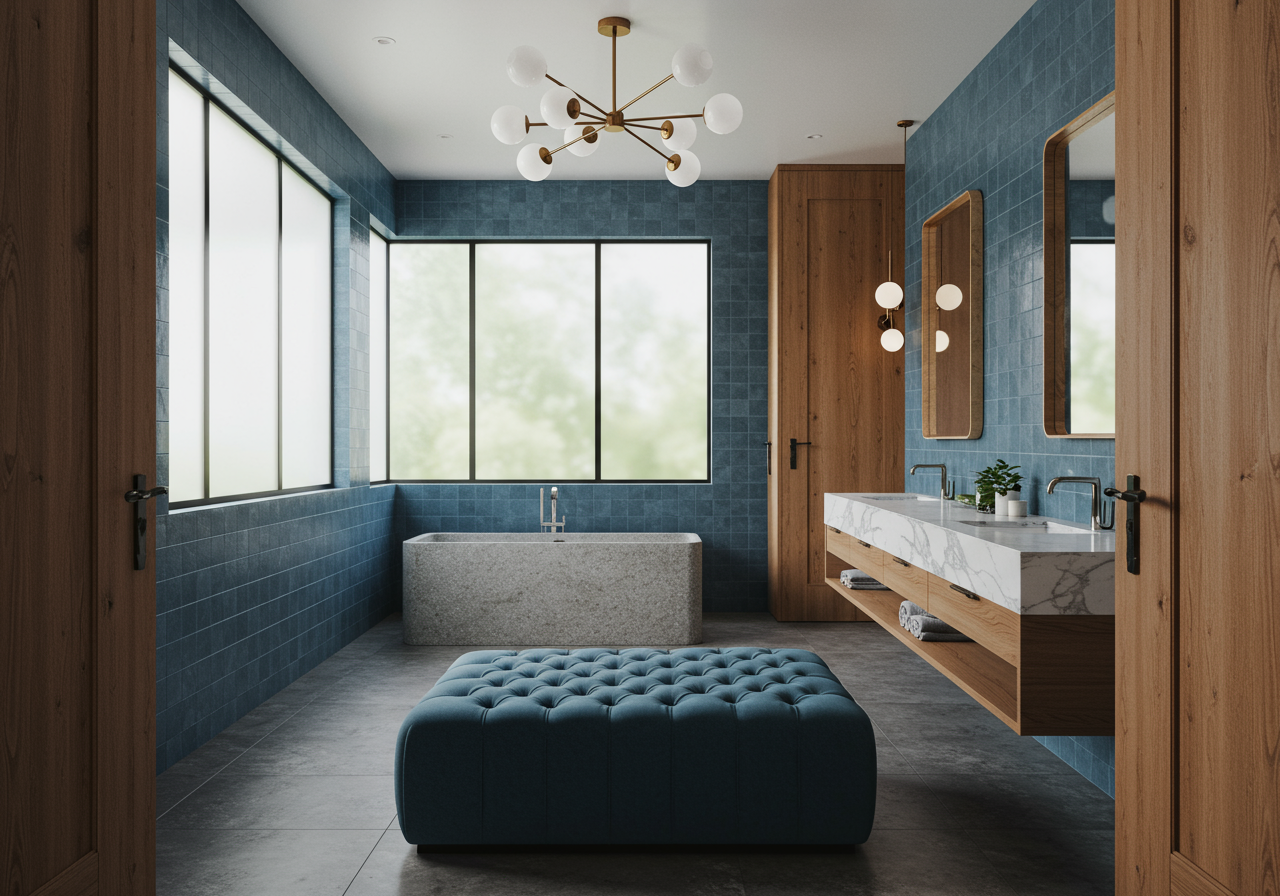
Another view of the primary bath. The circa 1950 Oluce chandelier was acquired at auction.
They’d already gotten a similar education in contemporary painting through Yvonne Force Villareal, their art-world Circe of more than two decades. Over the years, the curator had turned them on to a choice subset of artists, among them Lisa Yuskavage, Chris Ofili, Hernan Bas, and Jack Pierson. More recently, she says, they’ve been able to access their “dream list,” buying works by Agnes Martin, David Hockney, and Jasper Johns.
At nearly 10,000 square feet, the town house has proved greedy for art and furniture in enough quantity to fill its palatial public spaces—though Seller keeps insisting he lives between the bedroom and the kitchen.
A surfeit of rooms, but just two where the action happens: a very Hamilton story line. In Seller’s megahit, a heated debate takes place between Aaron Burr and Alexander Hamilton (roles originated by Leslie Odom Jr. and the show’s creator, Lin-Manuel Miranda) about slippery political powerbroking. Both Seller and Lehrer, successful in their own spheres, seem pathologically forthright by contrast, which eased the way when Bers stepped back from the project in 2020 and Rafael Viñoly Architects wrapped up construction in 2022.
This past fall, before the couple could settle into the new house, they, too, decided to part ways. The separation is amicable, and Lehrer plans to be in the audience for Seller’s new production of Sweeney Todd, which opens this month on Broadway. It will be the first full-scale remake of Stephen Sondheim’s musical since its debut in 1979, with a 26-member orchestra and 30 actors onstage. Nothing, in other words, that Seller can’t bring home.
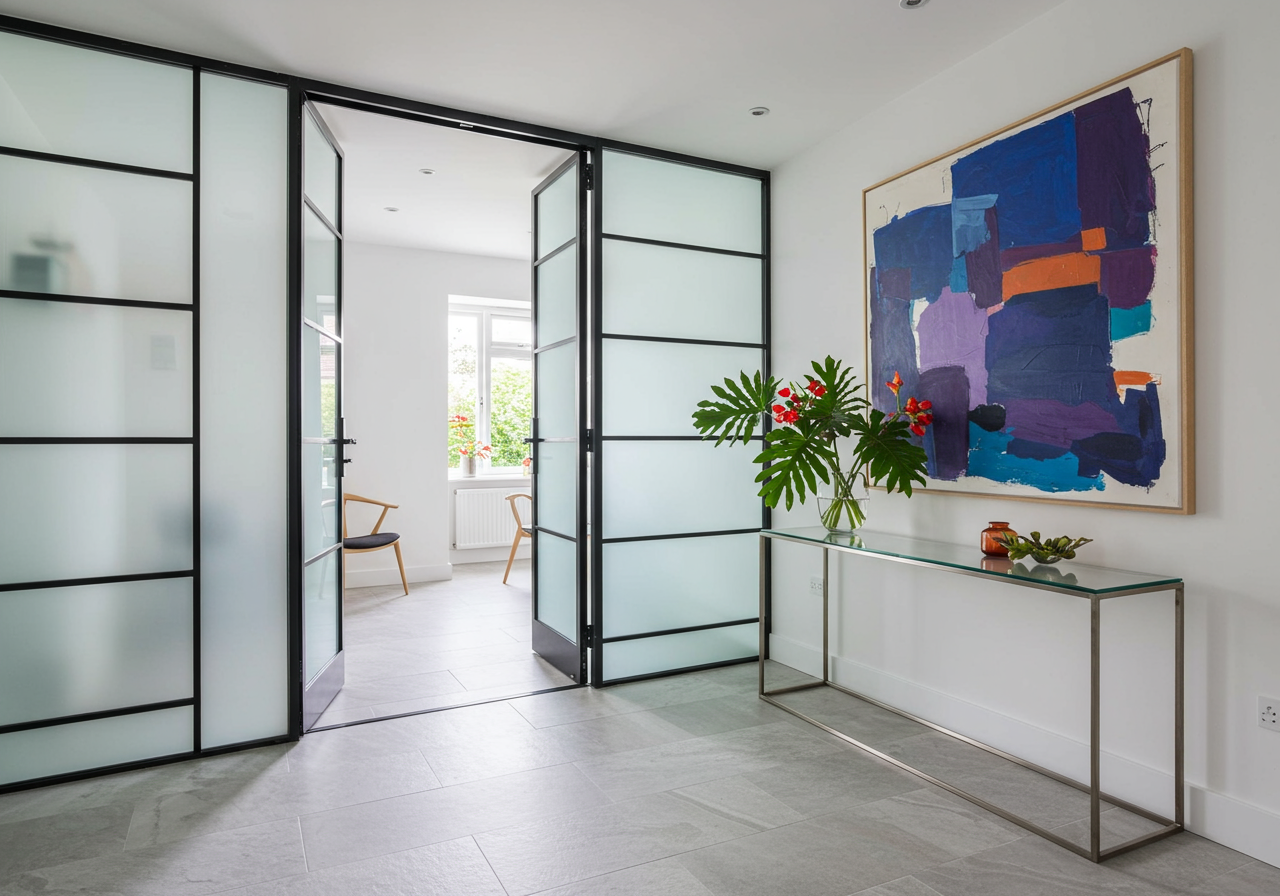
A Marina Adams painting in the entry hall.
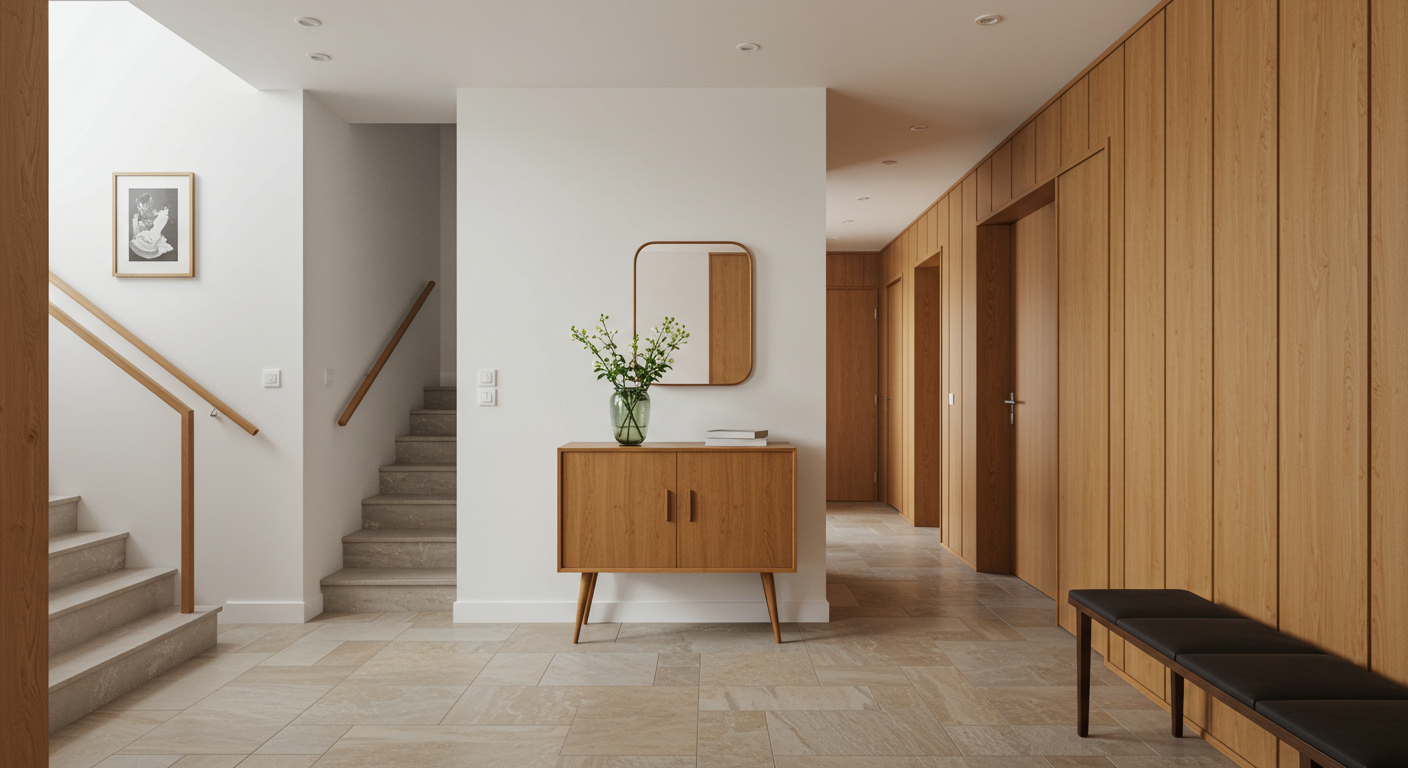
The ground-floor entry hall.
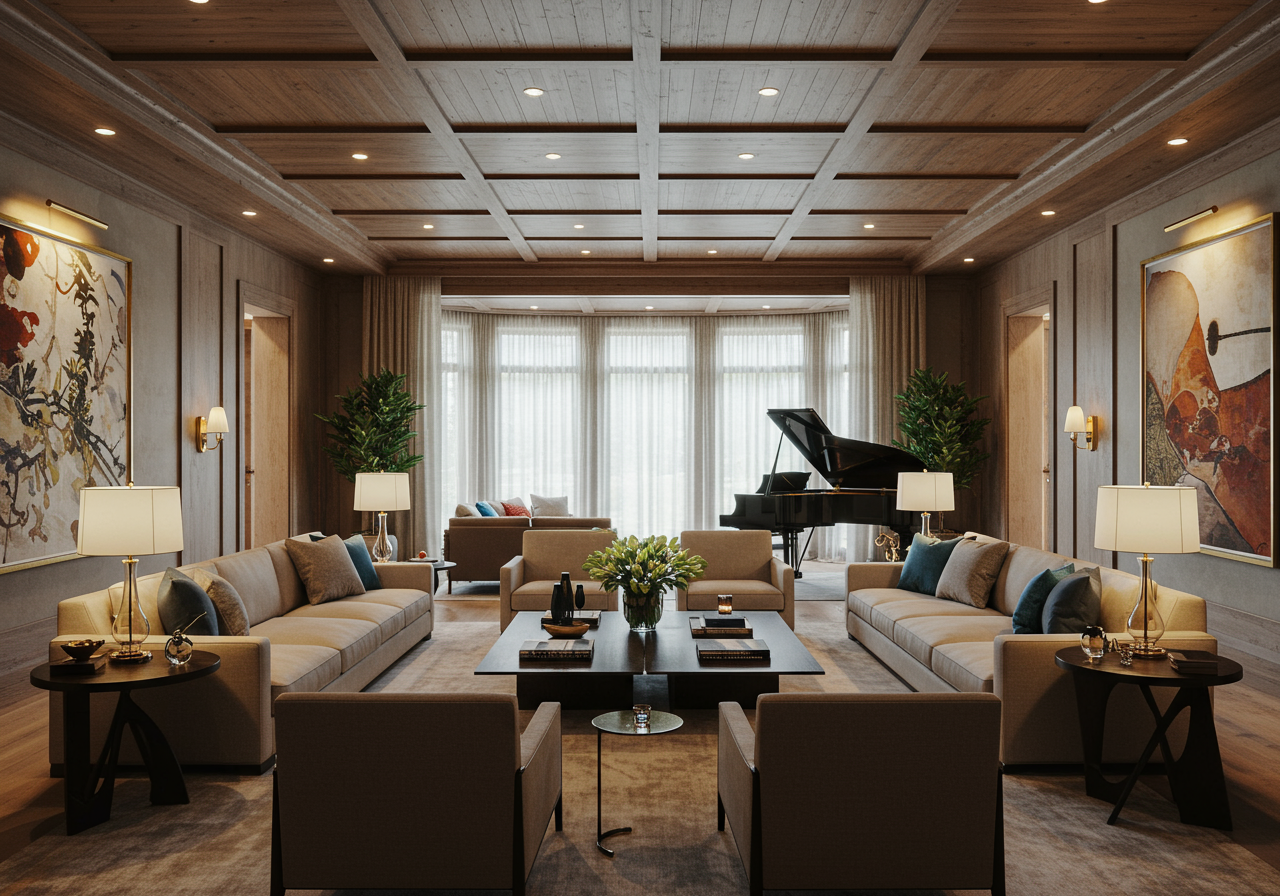
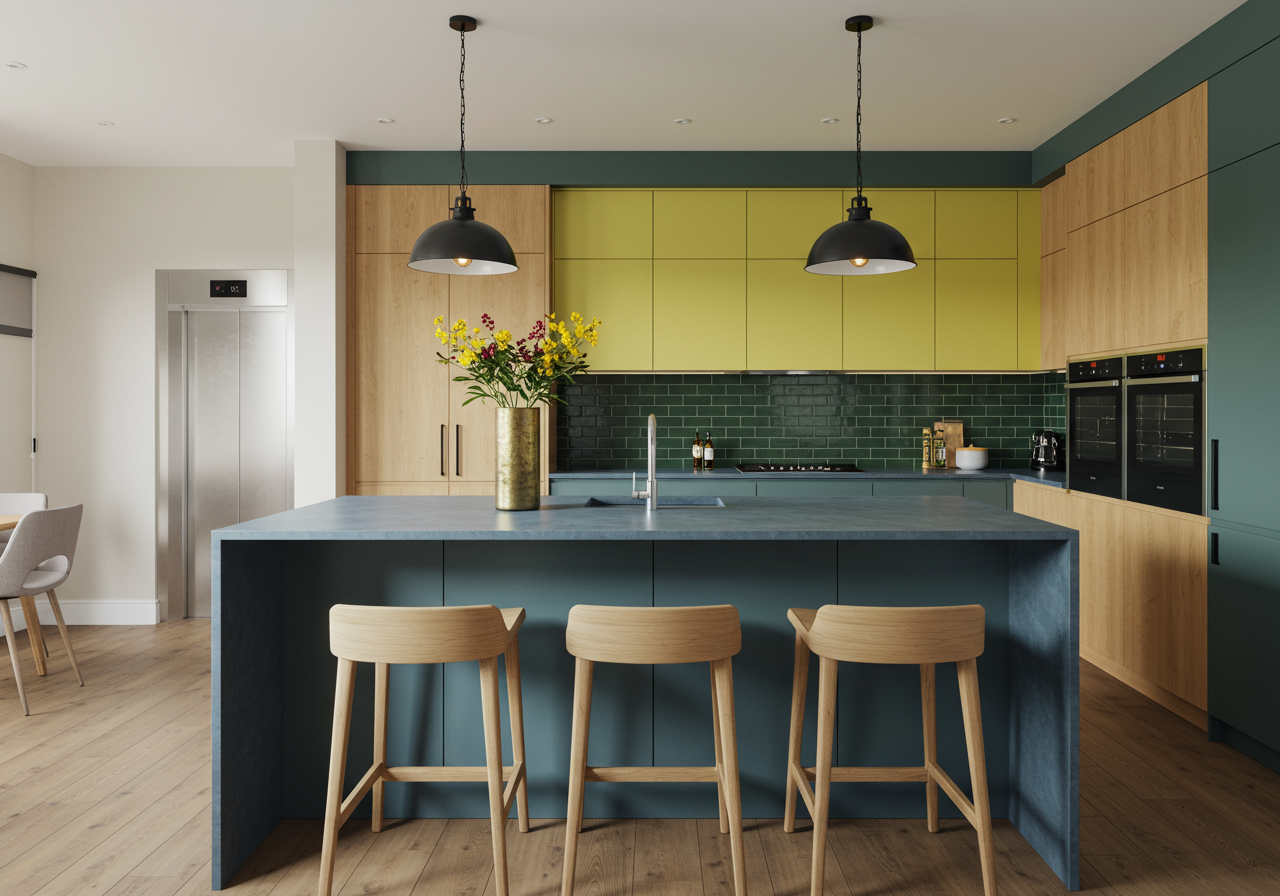
Bleached-oak counter stools by Christopher Kurtz tuck under a soapstone island in the kitchen. Backsplash of tile from Pewabic Pottery in Detroit; sink fittings by Watermark Designs; Wolf range.
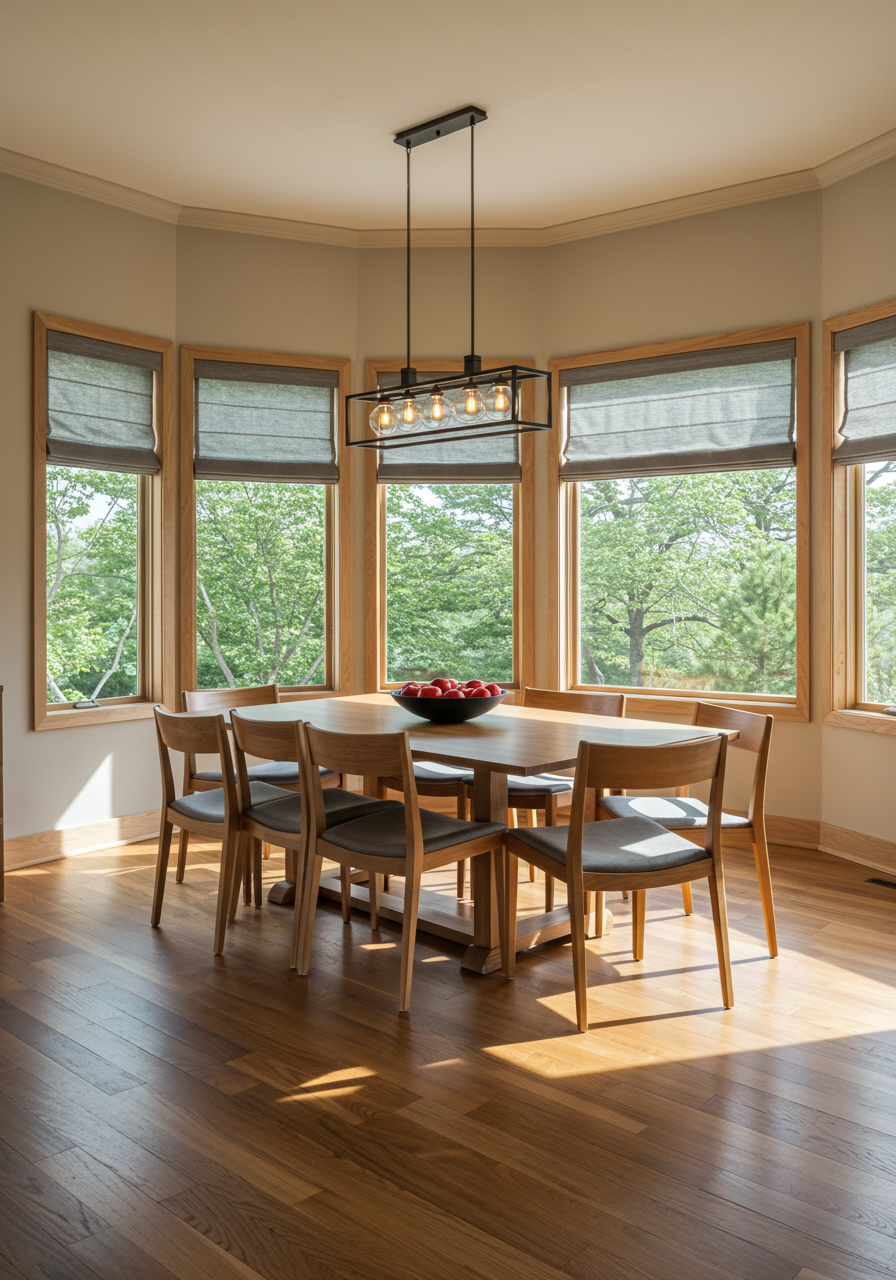
In the kitchen, a circa 1968 Angelo Lelii ceiling fixture hangs over a custom Studio Volpe dining table and Francis Jourdain dining chairs.
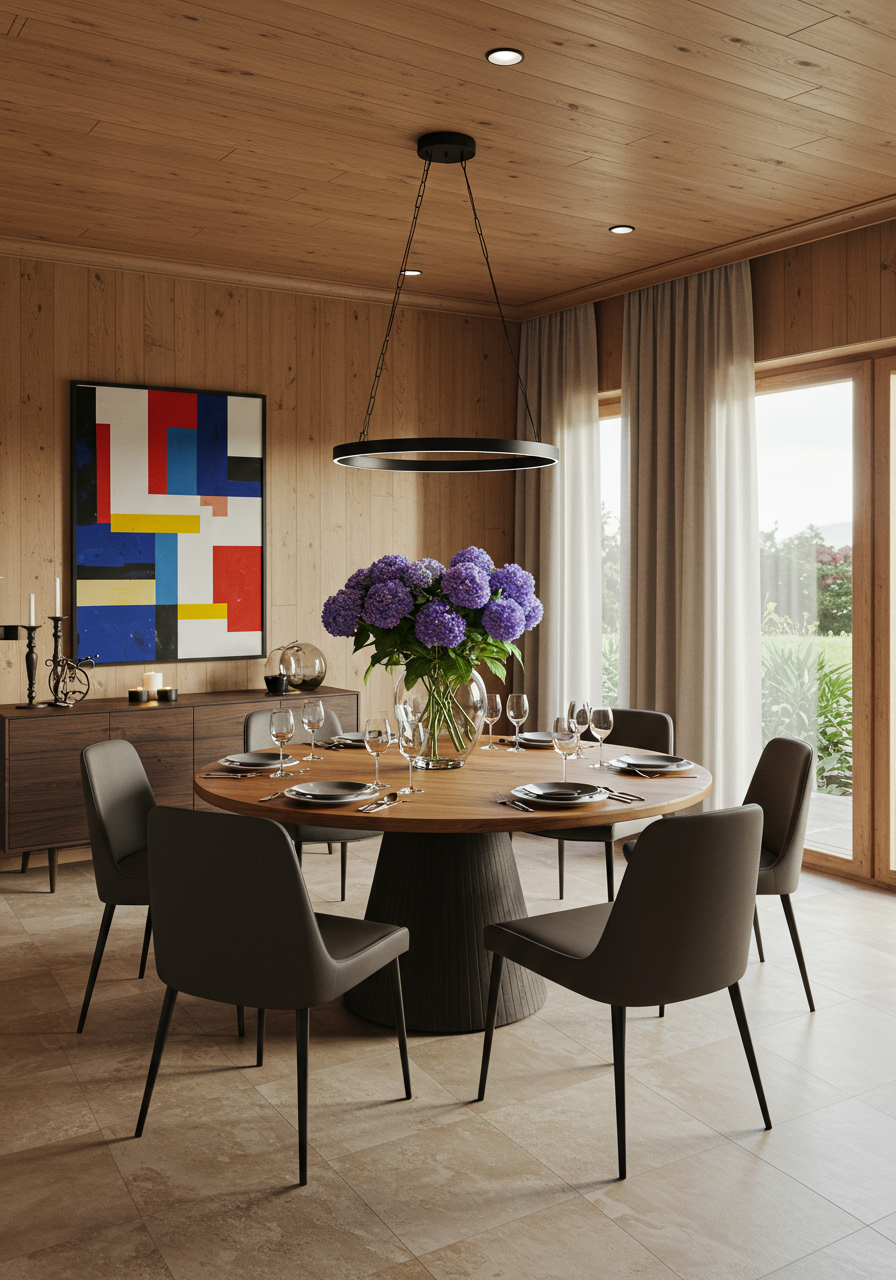
Circa 1963 Helge Vestergaard Jensen dining chairs surround a Studio Volpe table at one end of the parlor. Stanley Whitney painting; 1960s Jorge Zalszupin jacaranda-wood cabinet; Jansen rock-crystal table lamp; Studio BBPR ceiling light
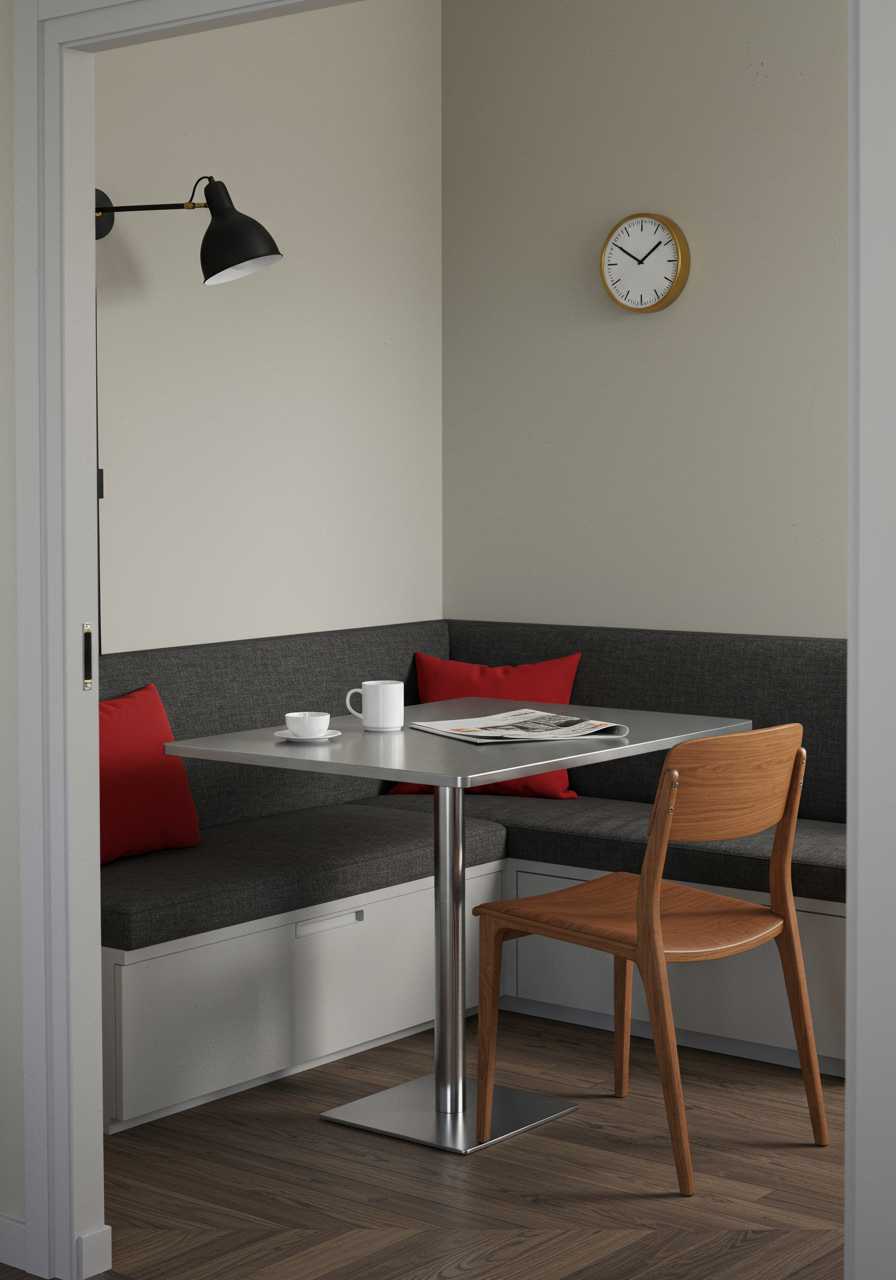
A circa 1950 Jacques Biny wall light hangs over a Studio Volpe banquette and table. Gio Ponti wall clock; Francis Jourdain dining chair.
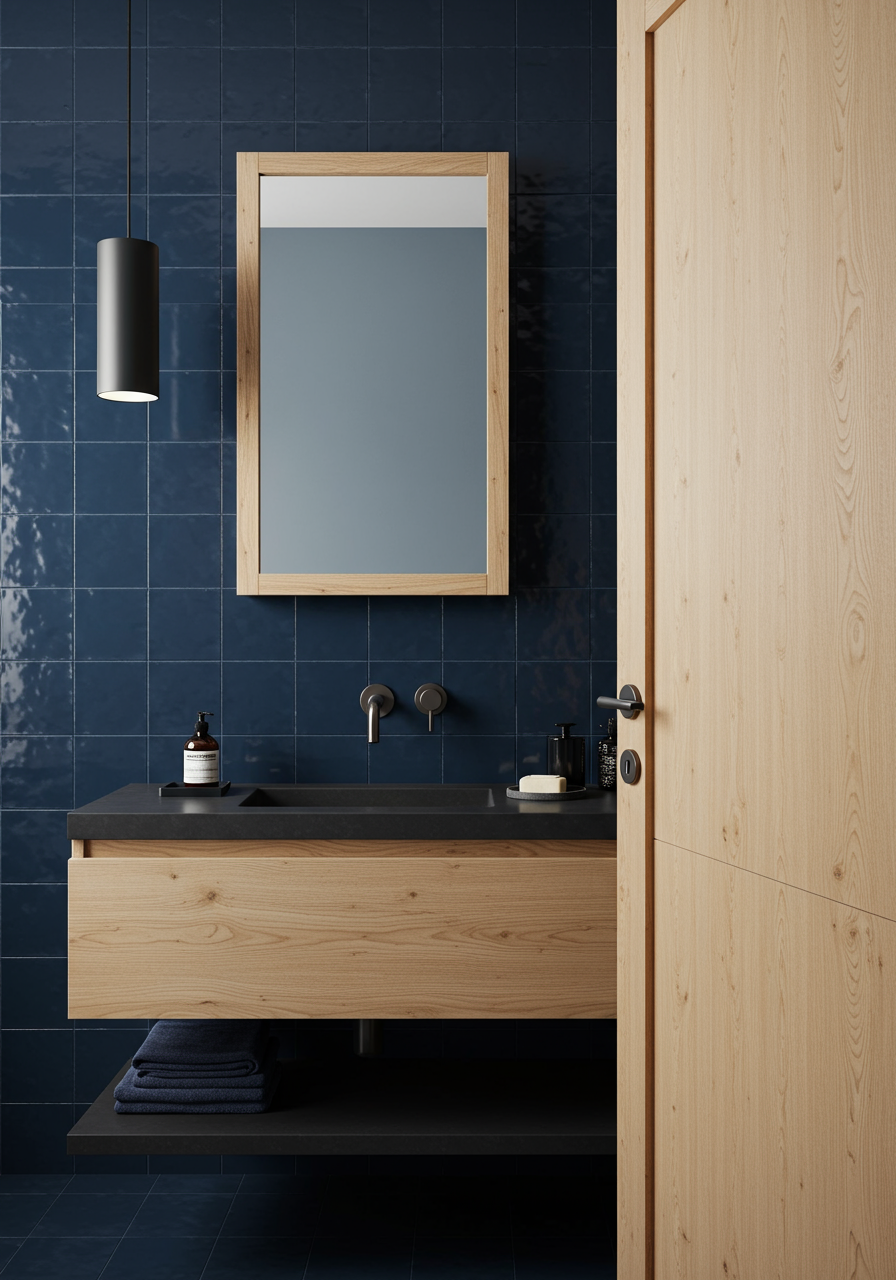
A 1950s Stilnovo pendant and circa 1955 Max Ingrand mirror for Fontana Arte in a powder room. Carved noir sully stone vanity top and sink with Watermark fittings.
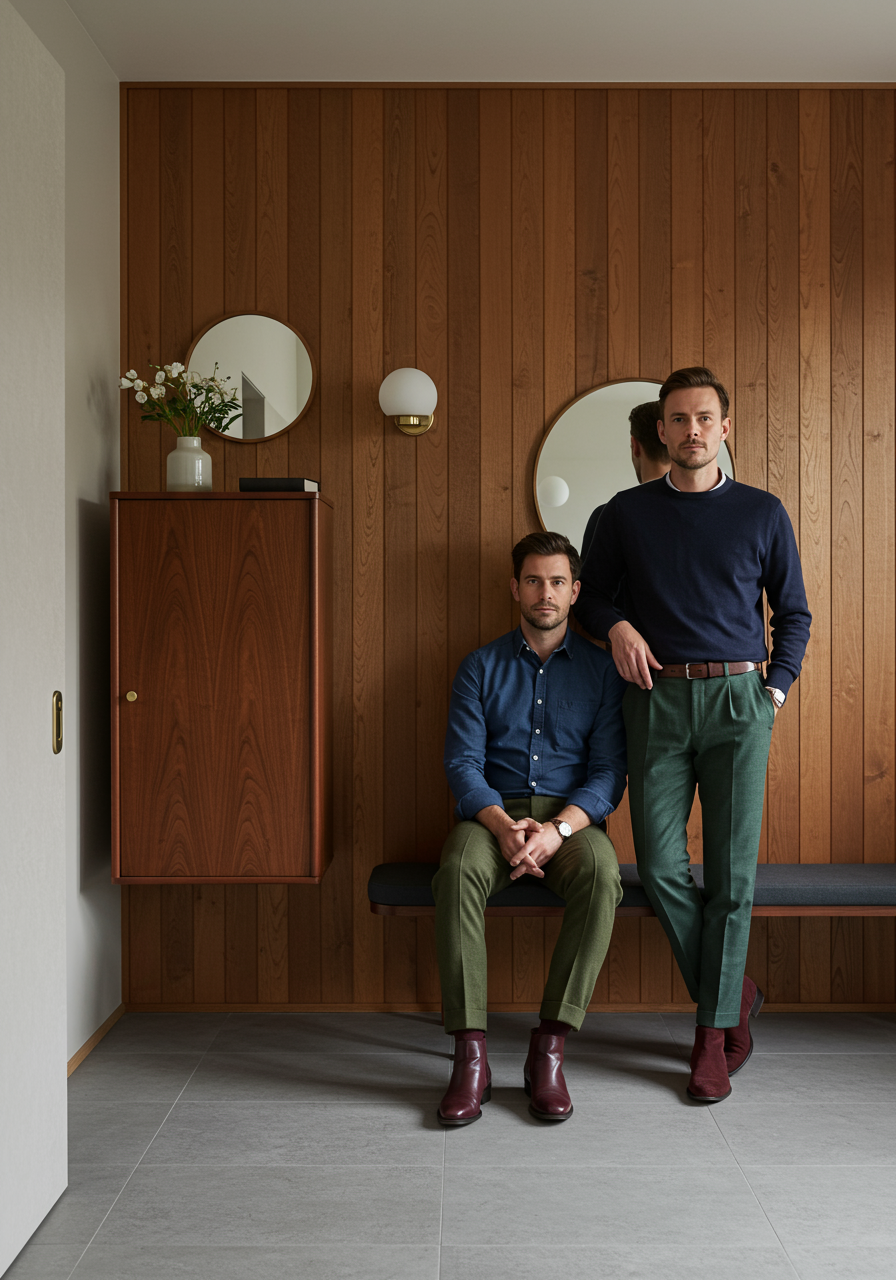
Jeffrey Seller (seated on a Valentin Loellmann charred-oak-and-brass bench) and Josh Lehrer in the European white-oak-paneled entry hall. Circa 1930 sycamore-and-brass cabinet by Eugène Printz.
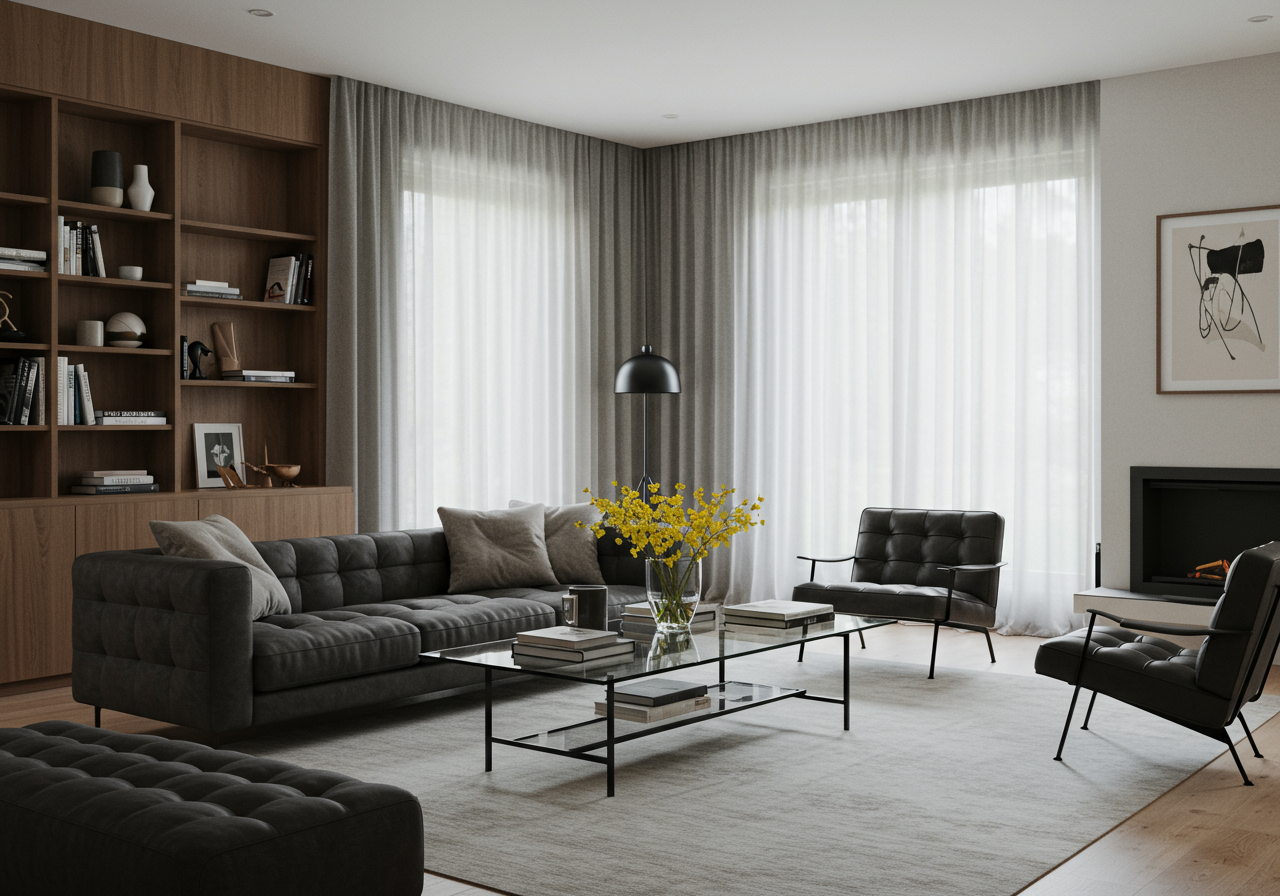
In the family room, a Studio Volpe sofa in a custom fabric by Chapas Textiles angles around a circa 1969 Jacques Quinet cocktail table. At far end, a Giuseppe Ostuni floor lamp for Oluce stands next to a Joseph-André Motte chair in a Holland & Sherry wool bouclé.
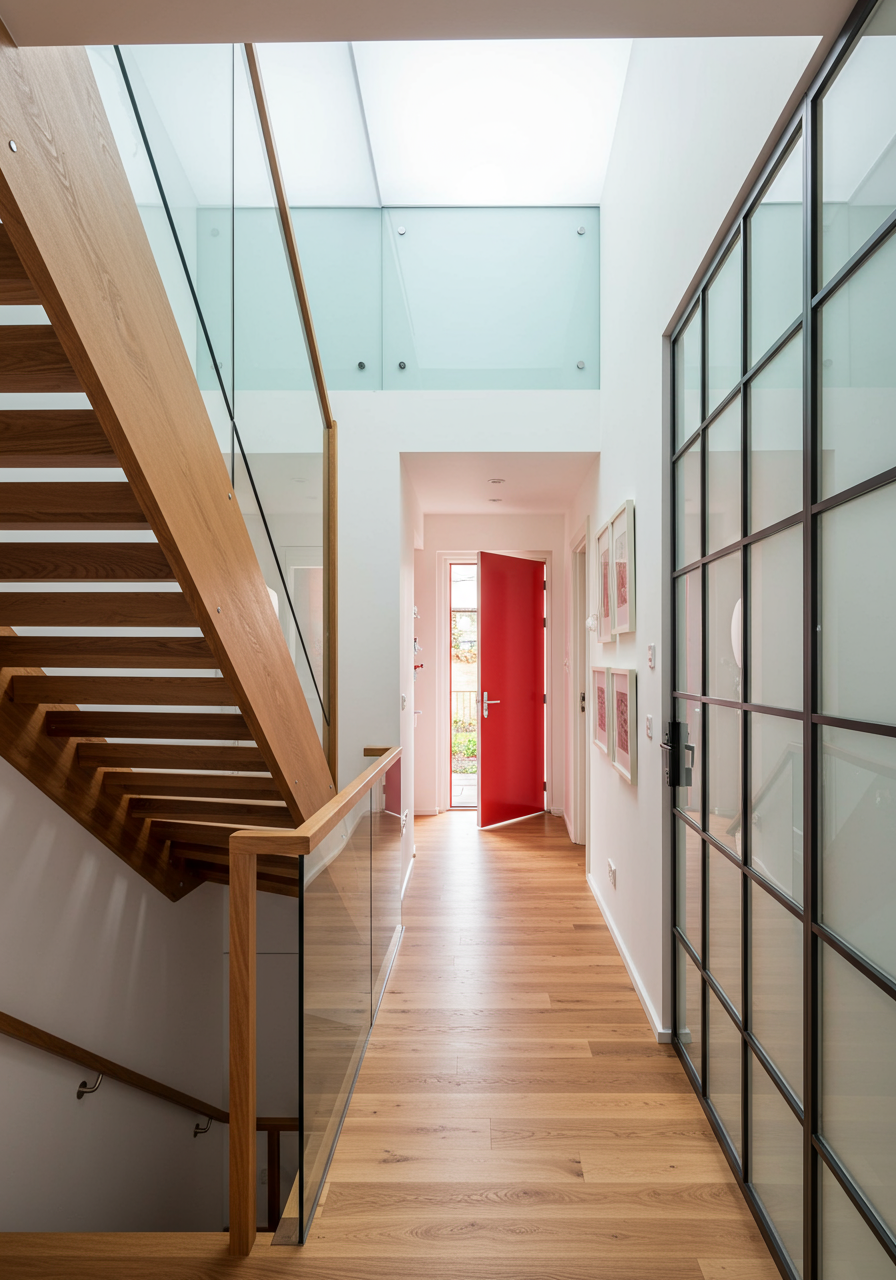
The solid quarter-sawn European white oak staircase rises seven stories alongside a steel-and-glass elevator.
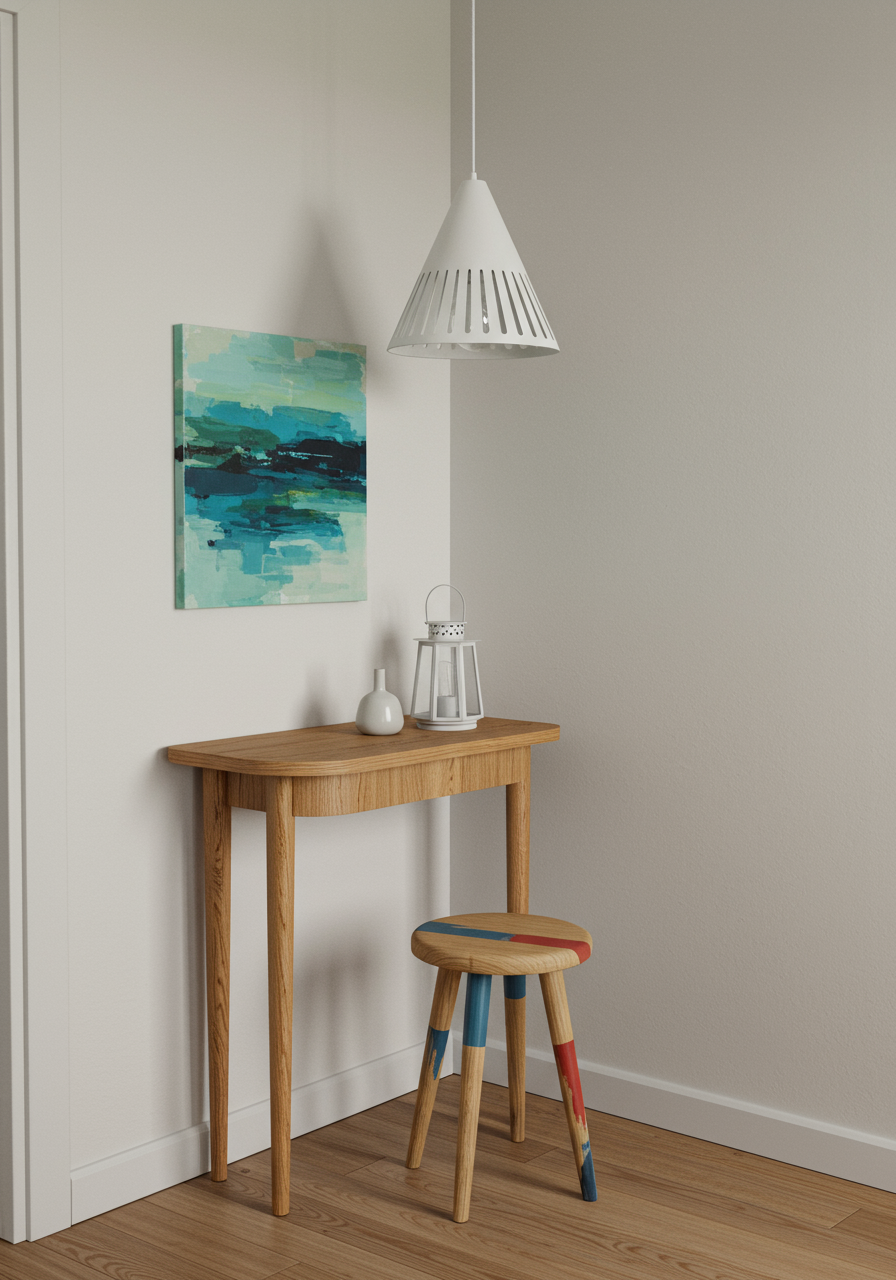
A circa 1950 Paavo Tynell pendant, Oscar Murillo painting, glazed ceramic water tower by Roberto Lugo, custom console by Aaron Silverstein, and Scarpette table by Morten Thuesen and Letizia Caramia in the stair hall.
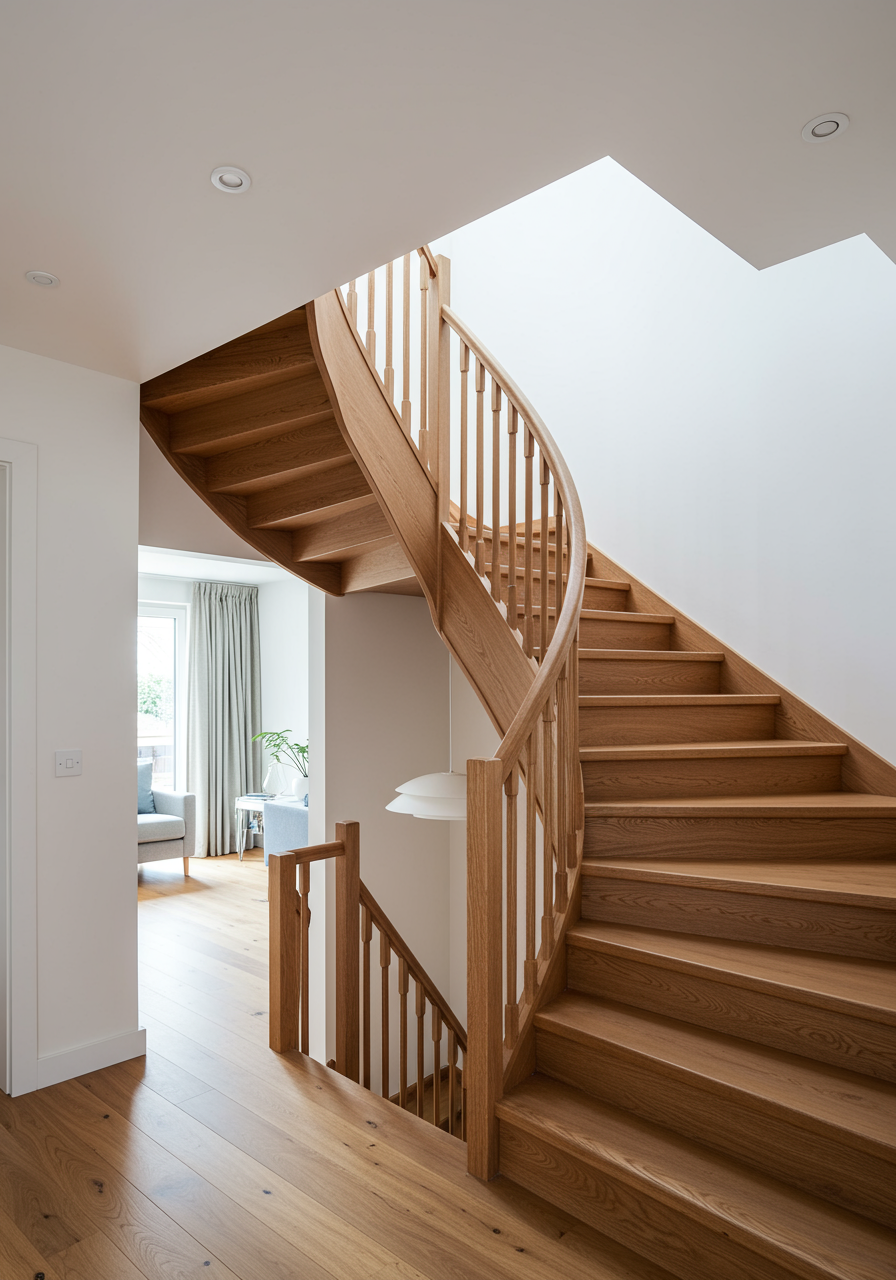
The sculptural staircase.
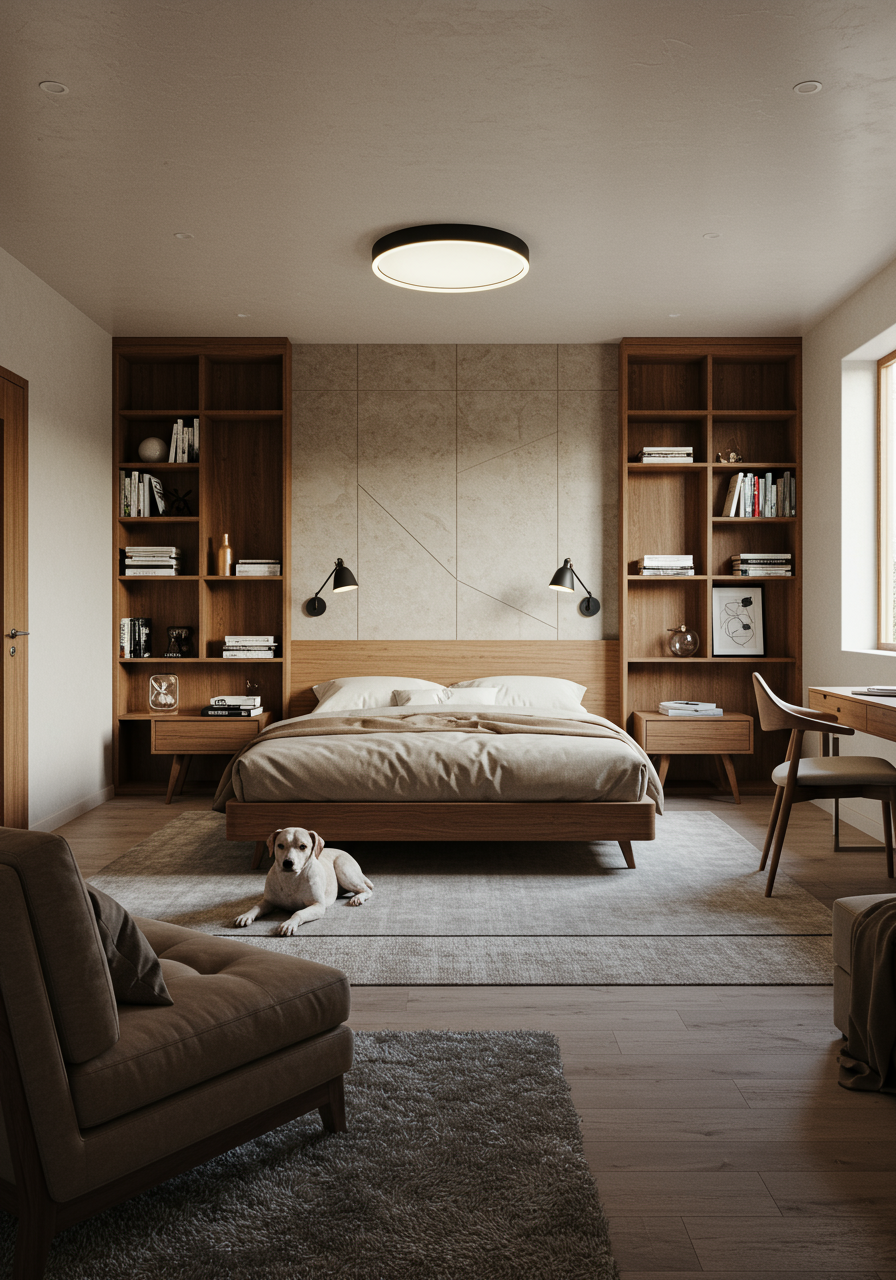
In the primary bedroom, Luna, a goldendoodle, rests on a rug from Niba Designs. A pair of 1930s Frits Henningsen tables and circa 1960 Stilnovo wall sconces flank a custom Studio Volpe bed.
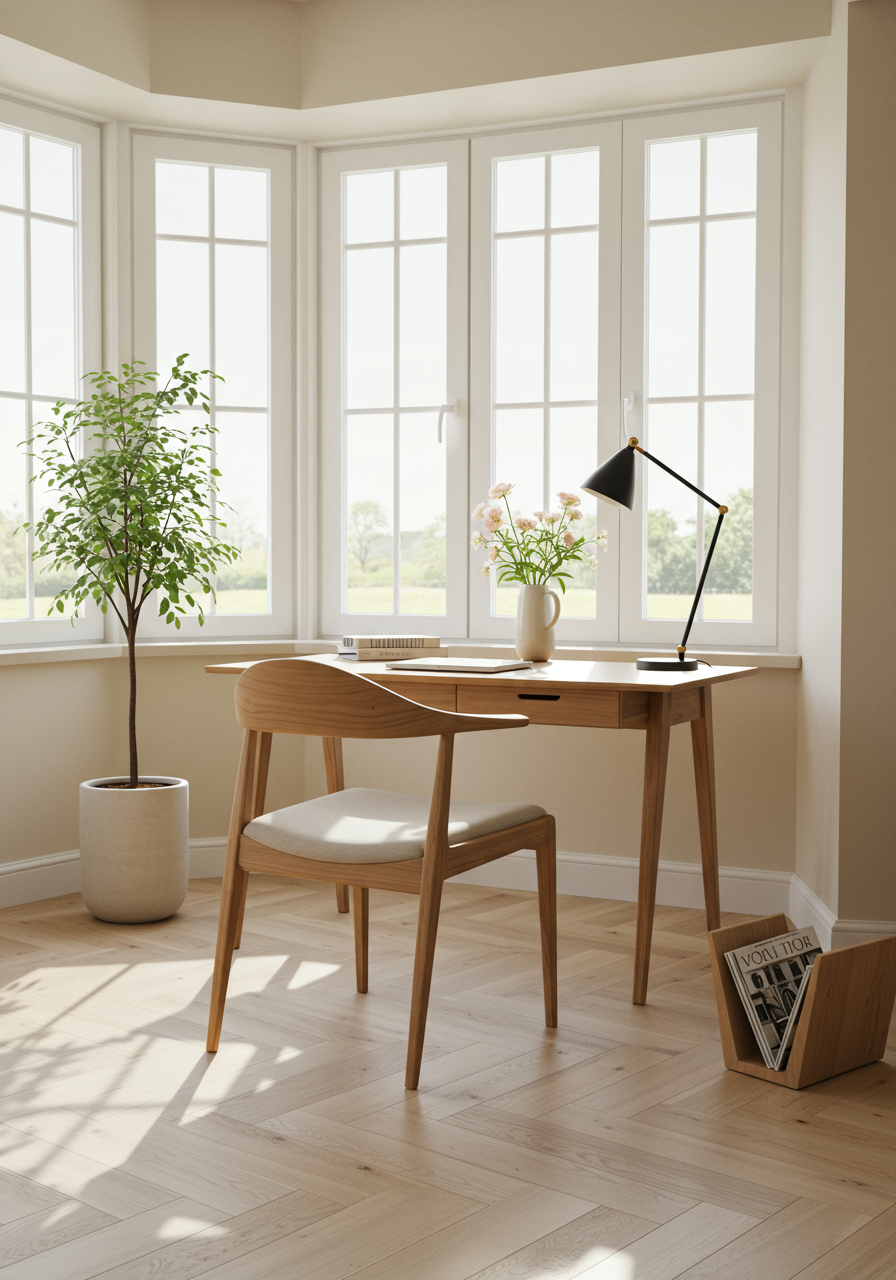
A 1940s desk chair by Sir Basil Spence pulls up to a Rose Uniacke desk in the primary bedroom. Custom Studio Volpe desk lamp and blotter; Rose Uniacke wastepaper bin.
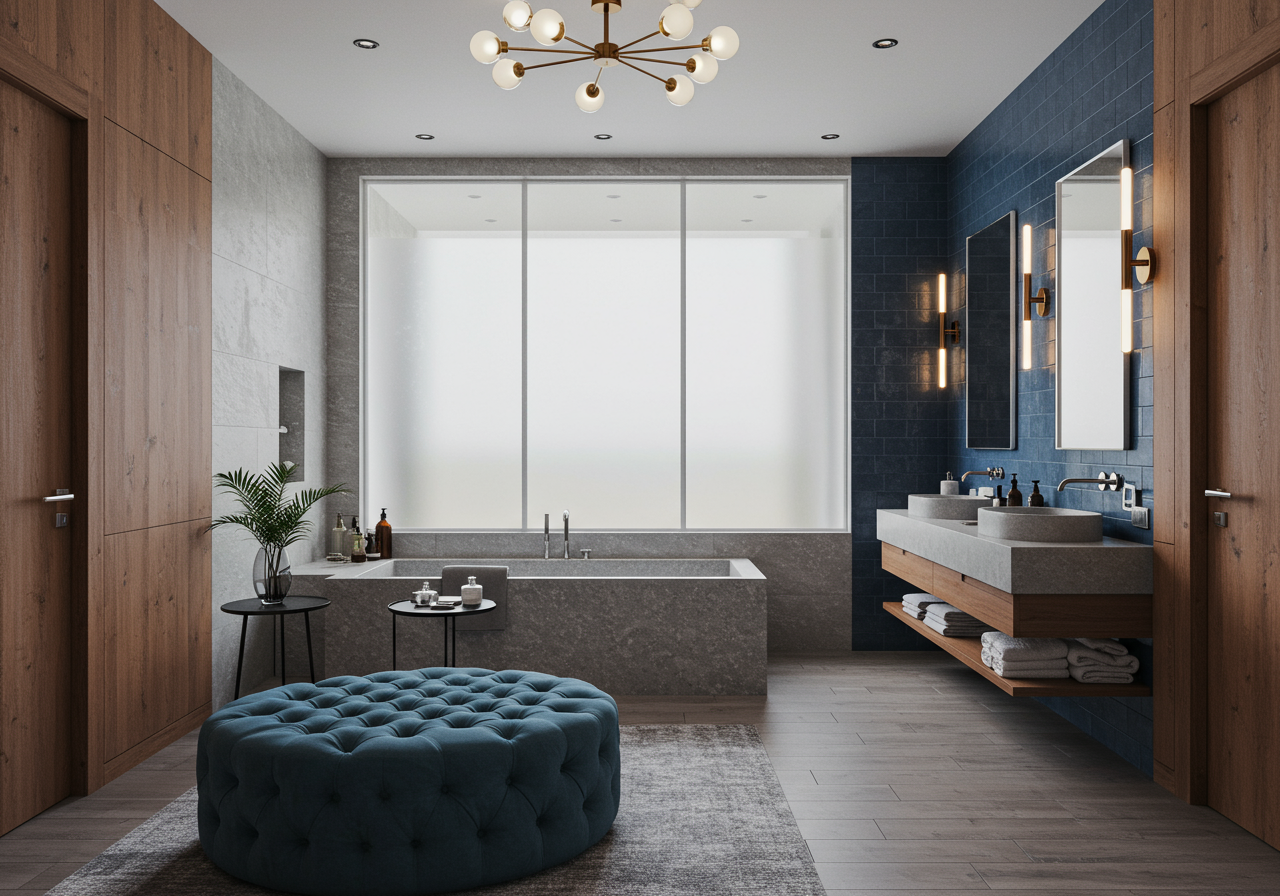
Another view of the primary bath. The circa 1950 Oluce chandelier was acquired at auction.
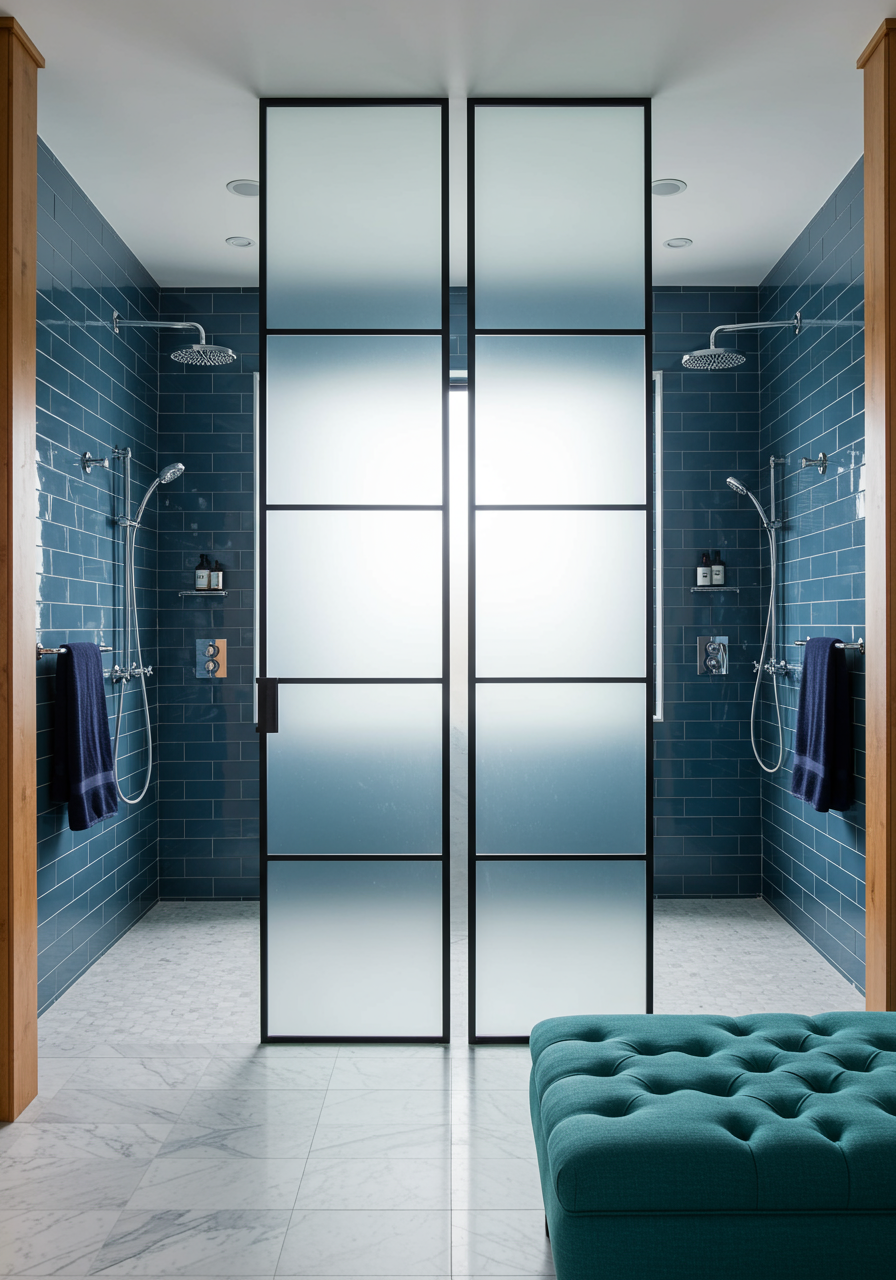
Blue de savoie marble covers the primary bath floor. Watermark Designs shower fittings; Bendheim textured privacy glass window; Studio Volpe ottoman in a Bruder linen.
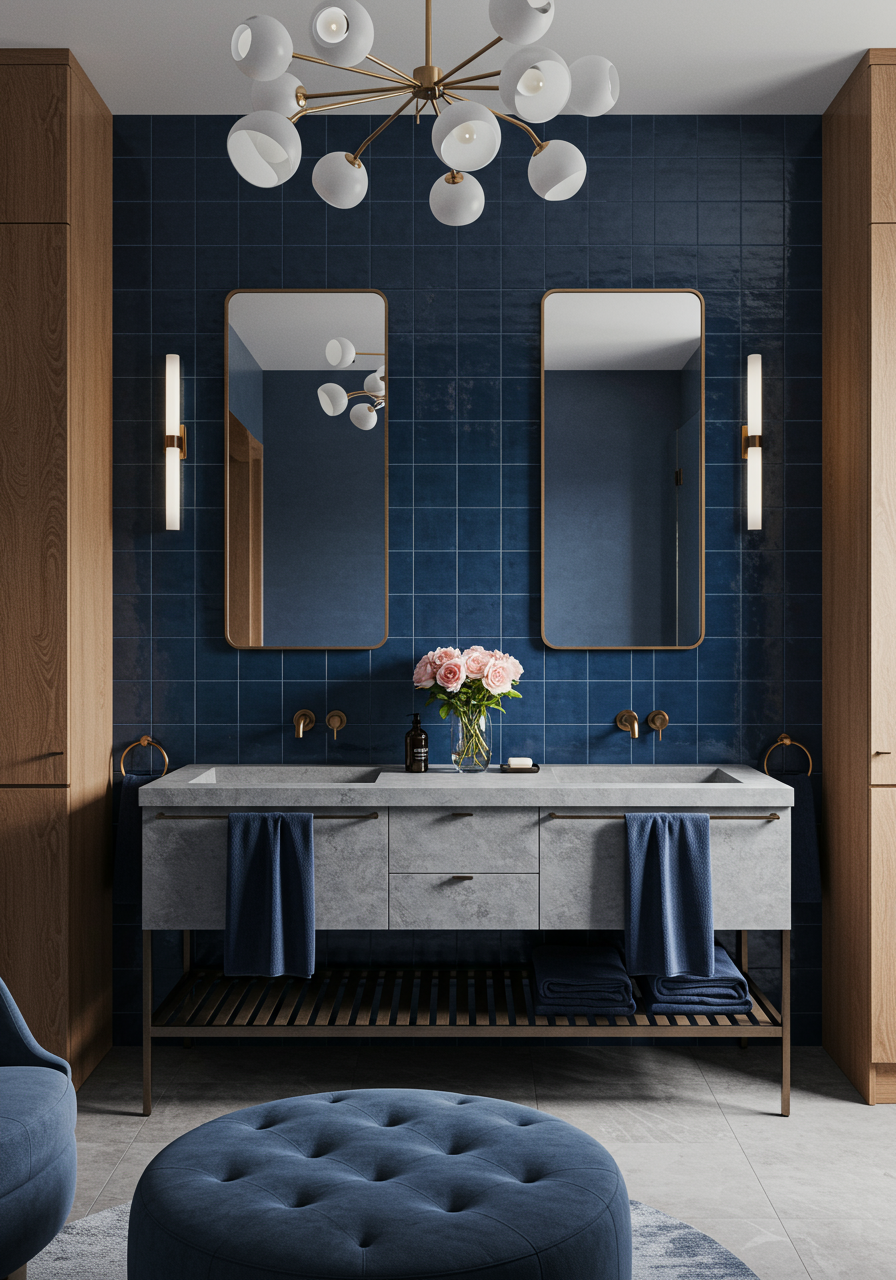
In the primary bath, Roll & Hill sconces and custom Studio Volpe metal medicine-cabinet mirrors hang above a blue de savoie marble vanity with Watermark Designs fittings. Circa 1950 Oluce chandelier; glazed tiles from Mercury Mosaics.
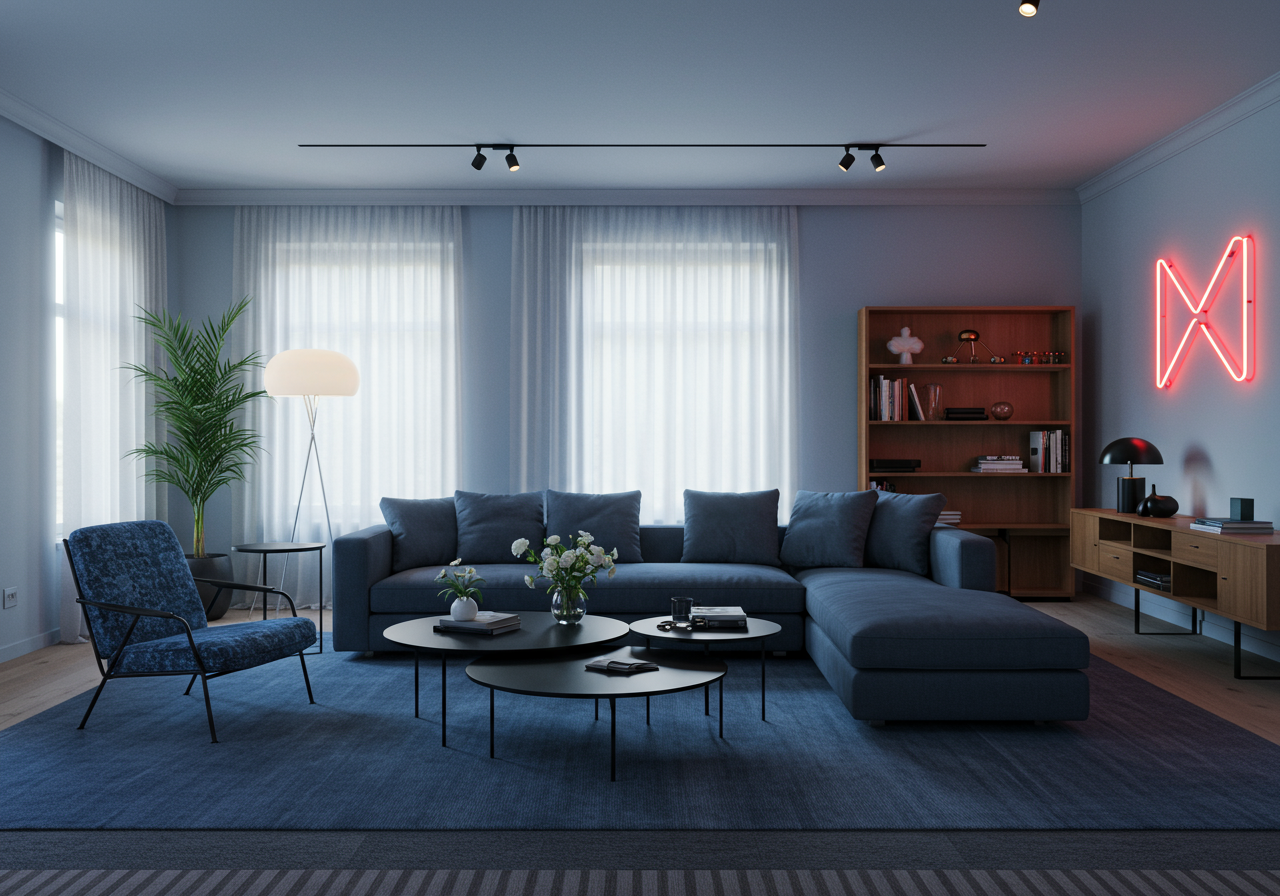
The guest-lounge walls are painted in Argile’s Ardoise Bleue. From left: 1925 French modernist armchair, floor lamp by Nendo, blackened-steel cocktail tables by Stephane Ducatteau, custom Studio Volpe angled sofa, 1960s Hans-Agne Jakobsson floor lamp. The “Awesome, Wow” neon sign came from Chicago’s immersive “Hamilton: The Exhibition.” A sculpture by Liz Craft sits atop 1960s modular elm bookcases by Mogens Koch. Wool-and-silk striped area rug from Mark Nelson Designs.
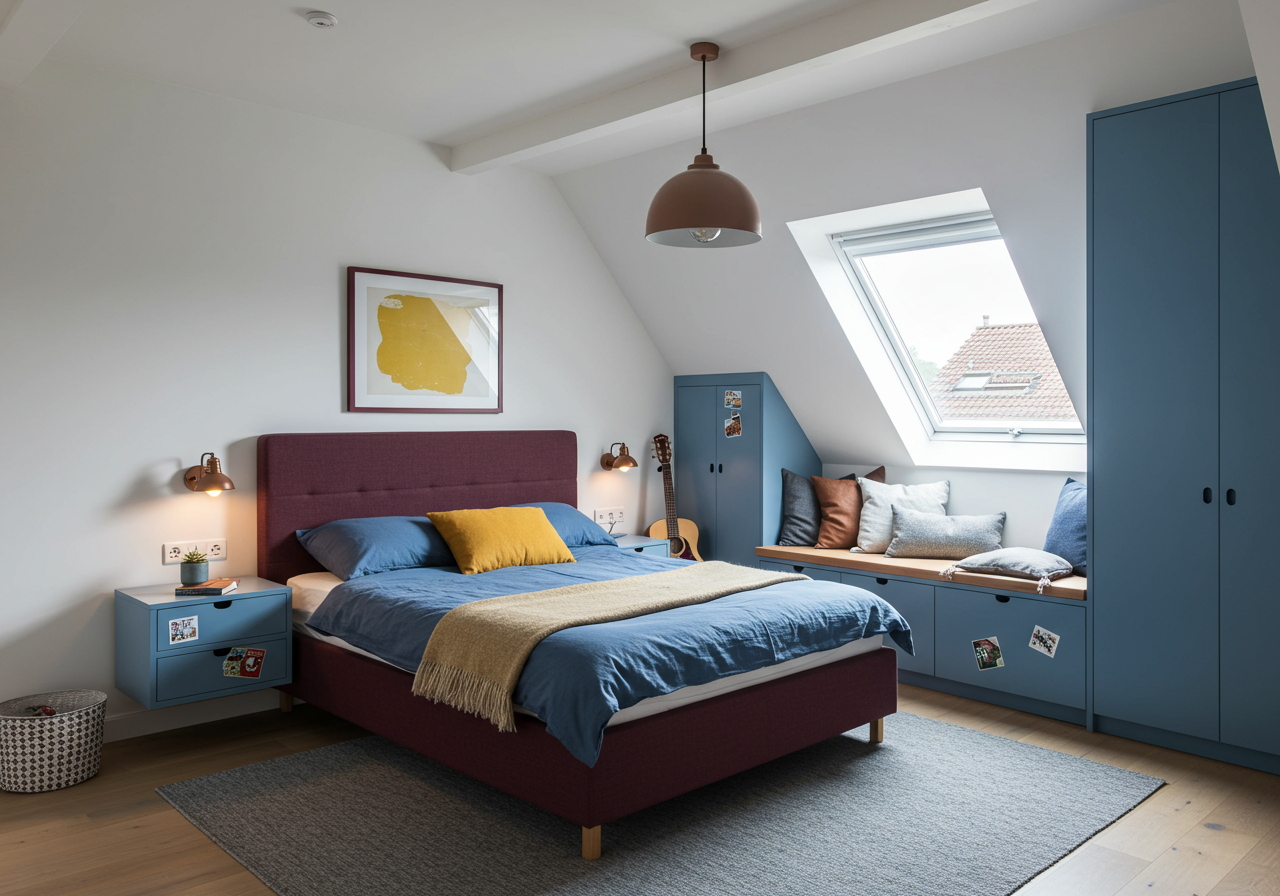
A Keith Haring print hangs over a custom Studio Volpe bed in the son’s room. 1950s Jacques Biny sconces; custom dhurrie rug from Mark Nelson Designs.
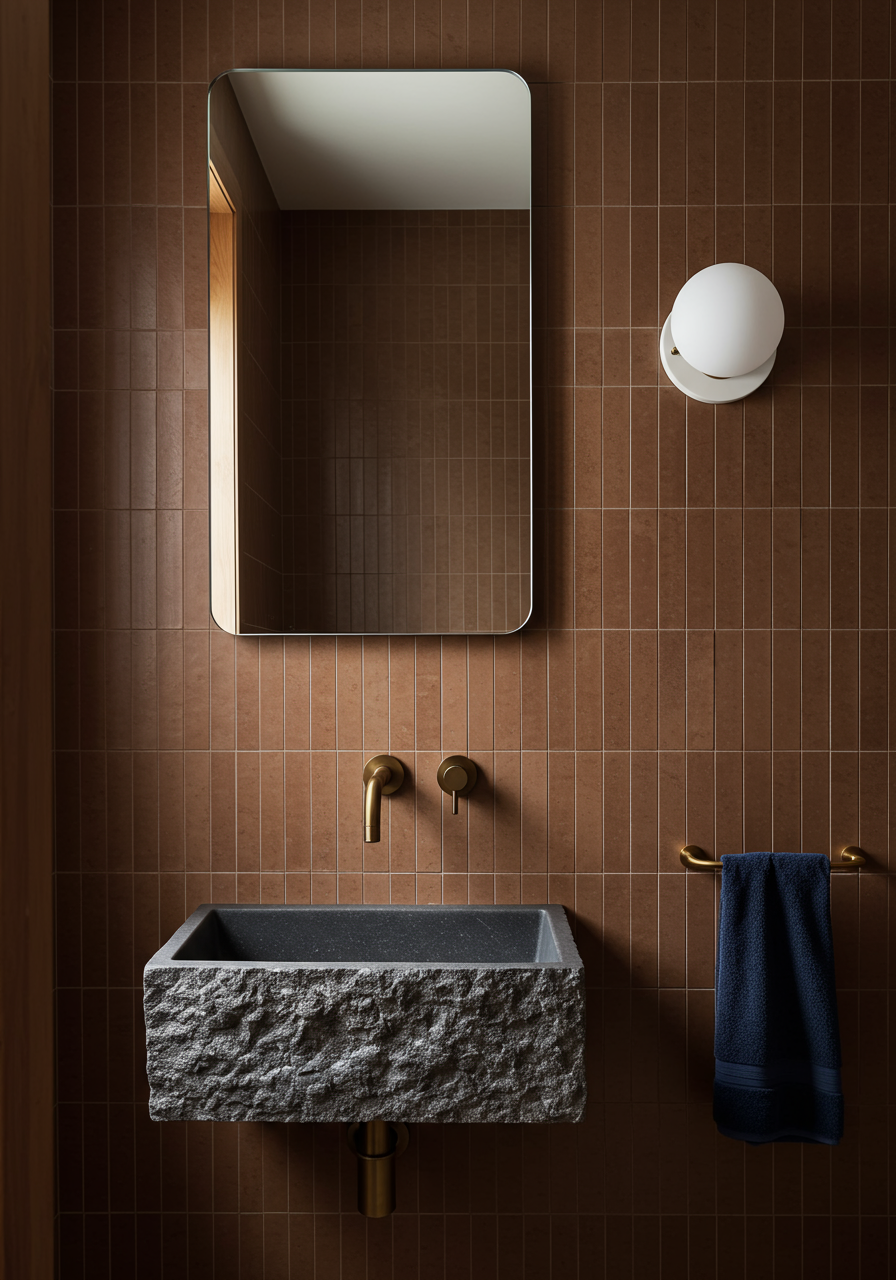
Custom Studio Volpe lacquered frame mirror, “Tip of the Tongue” wall lamp by Michael Anastassiades, and a lava-stone-and-brass washbasin by Matthias Kohn in a powder room.

Mementos, memorabilia, and multiple awards are arrayed around a 1950s Helge Vestergaard Jensen desk in Seller’s study. Rene-Jean Caillette chairs; Oscar Torlasco desk lamp; Hans Wegner wastepaper basket; Swedish flat-weave area rug by Kasthall AB.
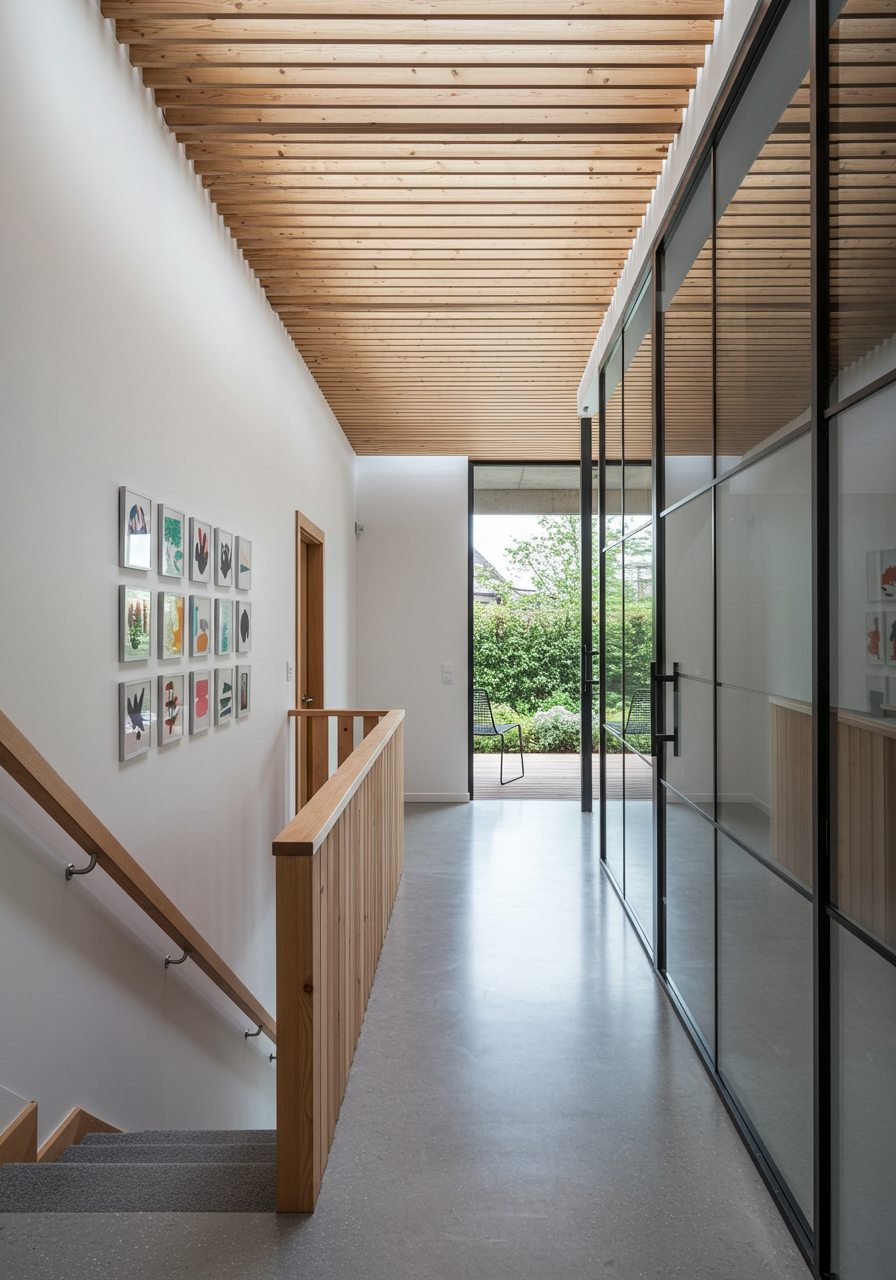
On the top floor, a steel-and-glass floor bridge leads out to the rooftop fern-and-tree rooftop garden designed by R/F Landscape Architecture. Artwork by Samson Kambalu hangs at left.
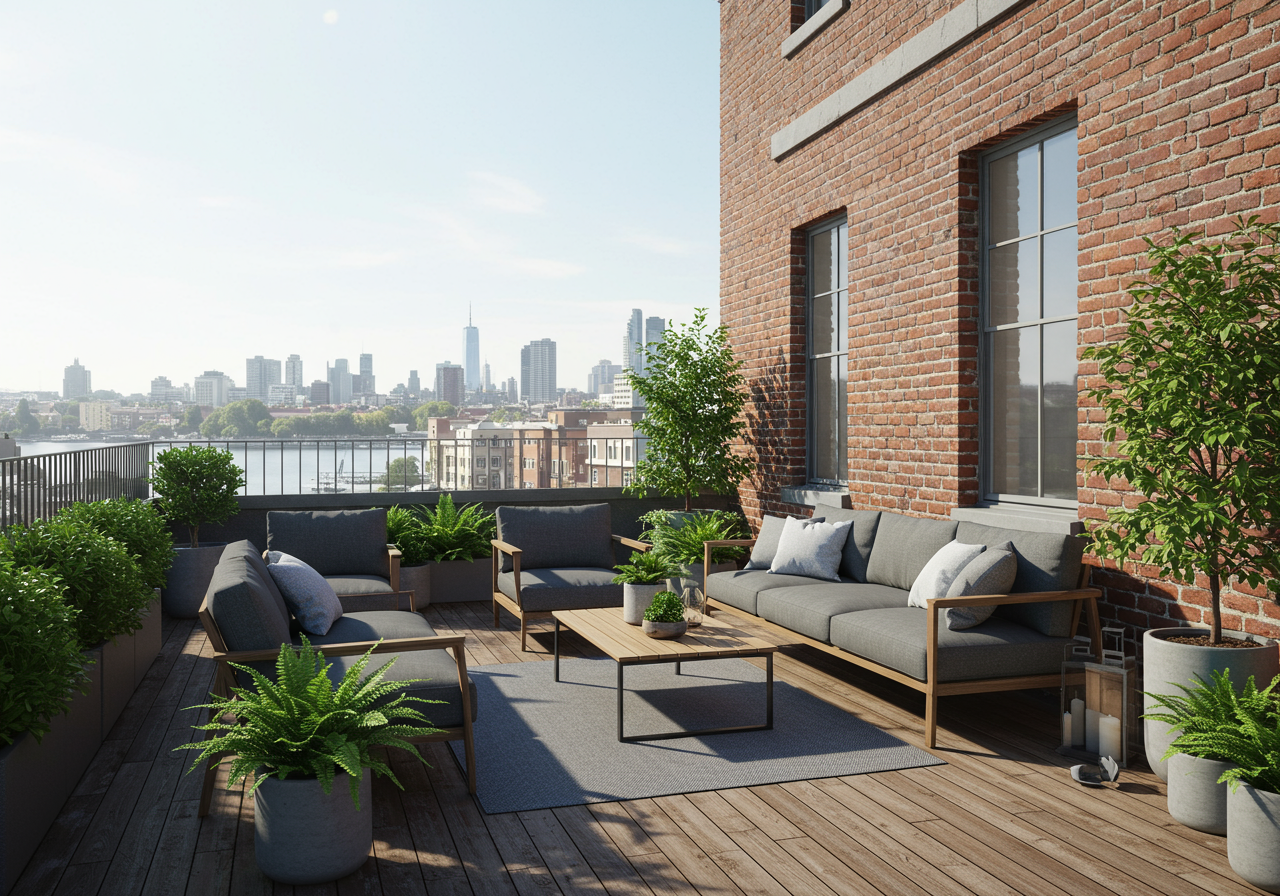
On the penthouse terrace, chairs and a sofa from Munder Skiles with cushions of a perennials fabric face off across a cocktail table from Mecox.
(Architectural Digest 2023)
